Spring 2014. Ukraine has not yet recovered from the deaths on the Maidan and the annexation of Crimea, as Russia has already swung its south and east. In April, she provoked Kharkiv, Odessa, Donetsk and Luhansk regions. This is how the war began, which continues today — in 2025. War without declaration, but already with weapons in hand. Russia boldly and openly entered the Donbas — under the guise of “referendums”, “people's republics” and “militias”. In some cities, she was repulsed — Kharkiv and Odessa survived. Others were unable to contain the invasion. Donetsk and part of the region were captured. Documentary photographer Anatoly Stepanov was at the center of events. He saw with his own eyes how the scenario of a hybrid invasion unfolded: rallies, seizure of administrative buildings, the appearance of armed “volunteers” from Russia, the first killed. In April 2014, he filmed the funeral of a pro-Ukrainian deputy in Horlivka, stood near the captured district department in Slavyansk, recorded the resistance in Donetsk, Mariupol and the aftermath of the tragedy in Odessa on the morning of May 3 near the burned Trade Union House.
Today, the Ukrainian Association of Professional Photographers publishes an archive of his pictures — to remember how this war began, how Kharkiv and Odessa fought and how we lost Donetsk and Luhansk regions.
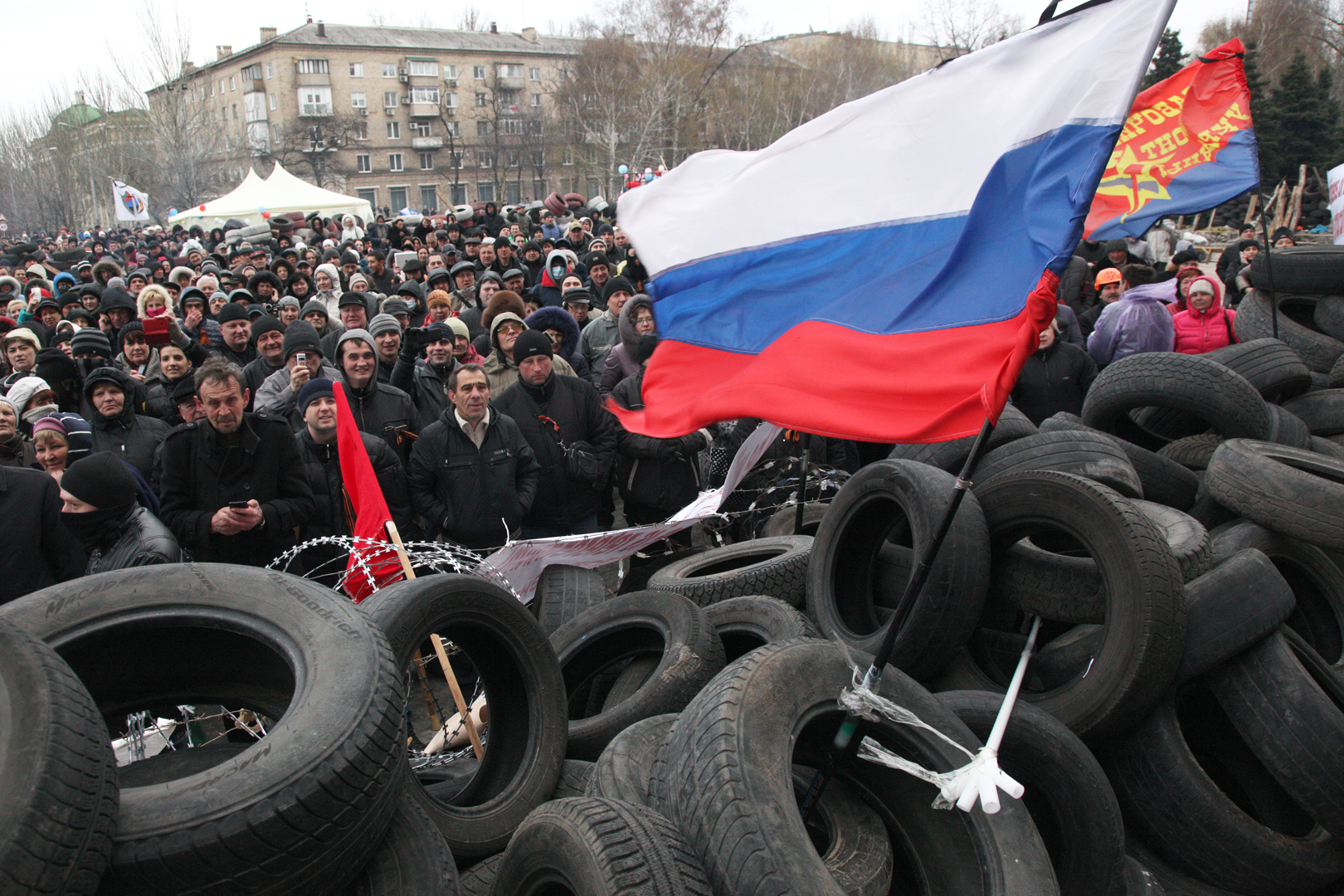
— How do you now perceive the events of the beginning of 2014 in Ukraine? How did the so-called “Russian spring” begin for you? Do you associate it with the events of the Maidan or with the beginning of the provocations in Donbas, Kharkov or Odessa?
— It all happened sporadically, maybe even by accident. Or maybe that's how fate turned out. I was offered: “Do you want to go get something in Kharkov? Something is going on there.” This was a proposal for Frankrike Presse, so I agreed and went to Kharkov. It was April 8, 2014. Then the same characters tried to create the so-called “Kharkiv People's Republic” there, as later in the Donbas. This famous Motorola, for example, was then still seen in Kharkiv, it was even photographed during those events. I arrived in Kharkiv on April 8, the regional administration had just been liberated by the Vinnytsia special forces. I went there and saw the inscriptions “Russia” and other symbols. Spent a day there, took everything off and went on to Donbas. And there everything was burning and raging.
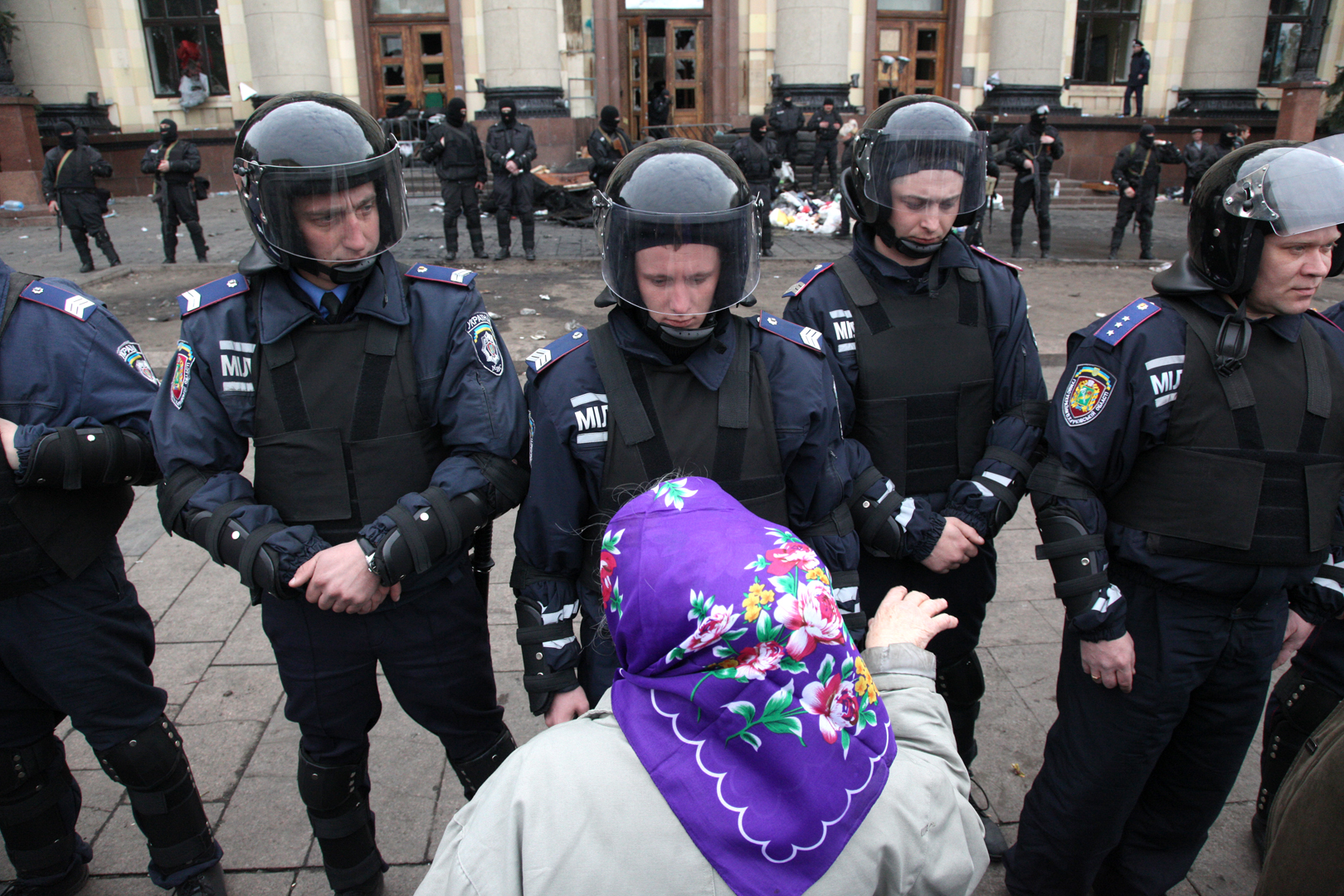
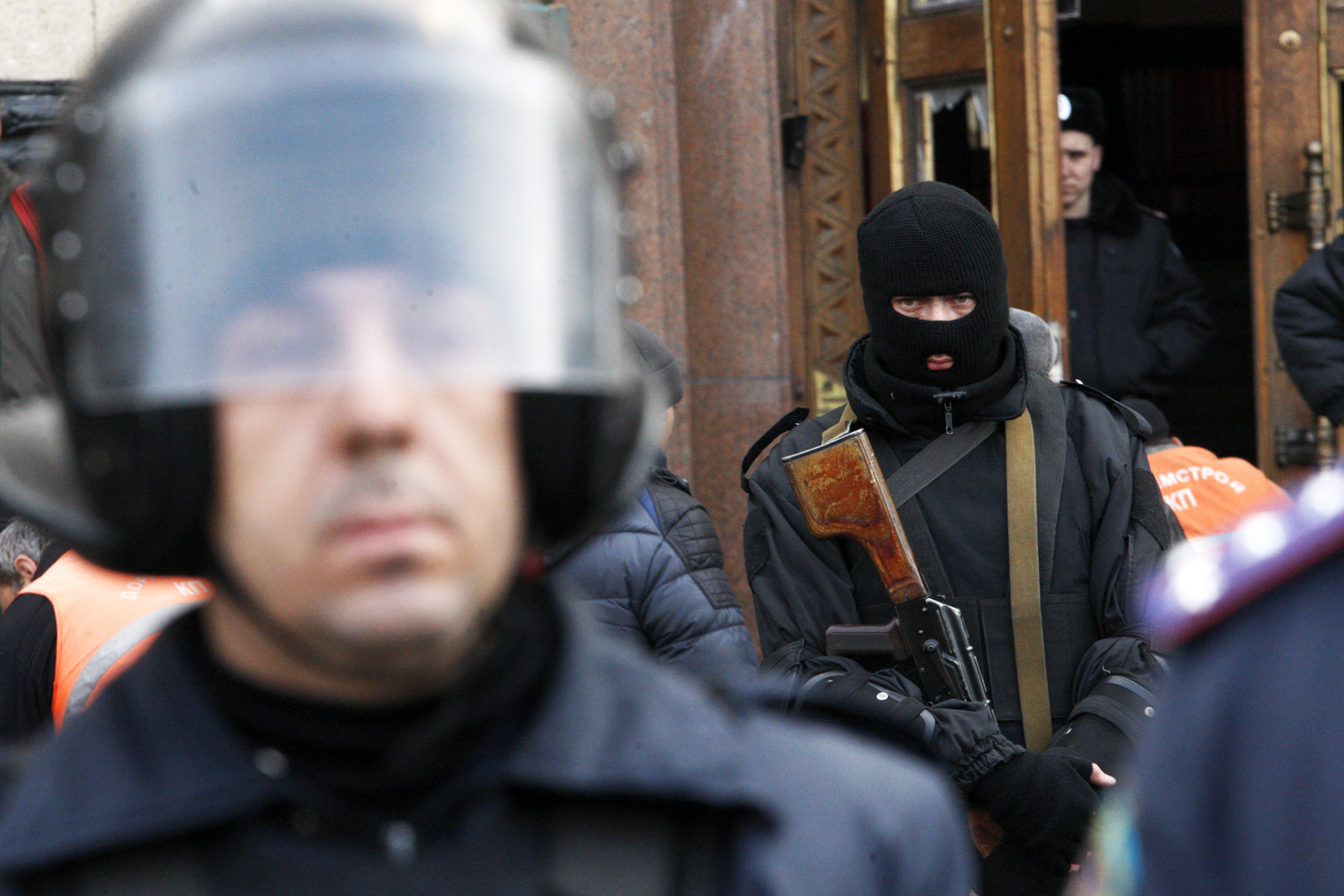
— Can you tell a little more about Kharkov? That was after Maidan. Did it seem to you that “Russia has come”? Was there an understanding of how dangerous all this was?
— At that time it was already clear that this was an external influence, but it was presented as something internal, supposedly “popular”. In Kharkiv, for example, I only once saw the inscription “Russia”, and even then inside the regional administration itself - people were really there.
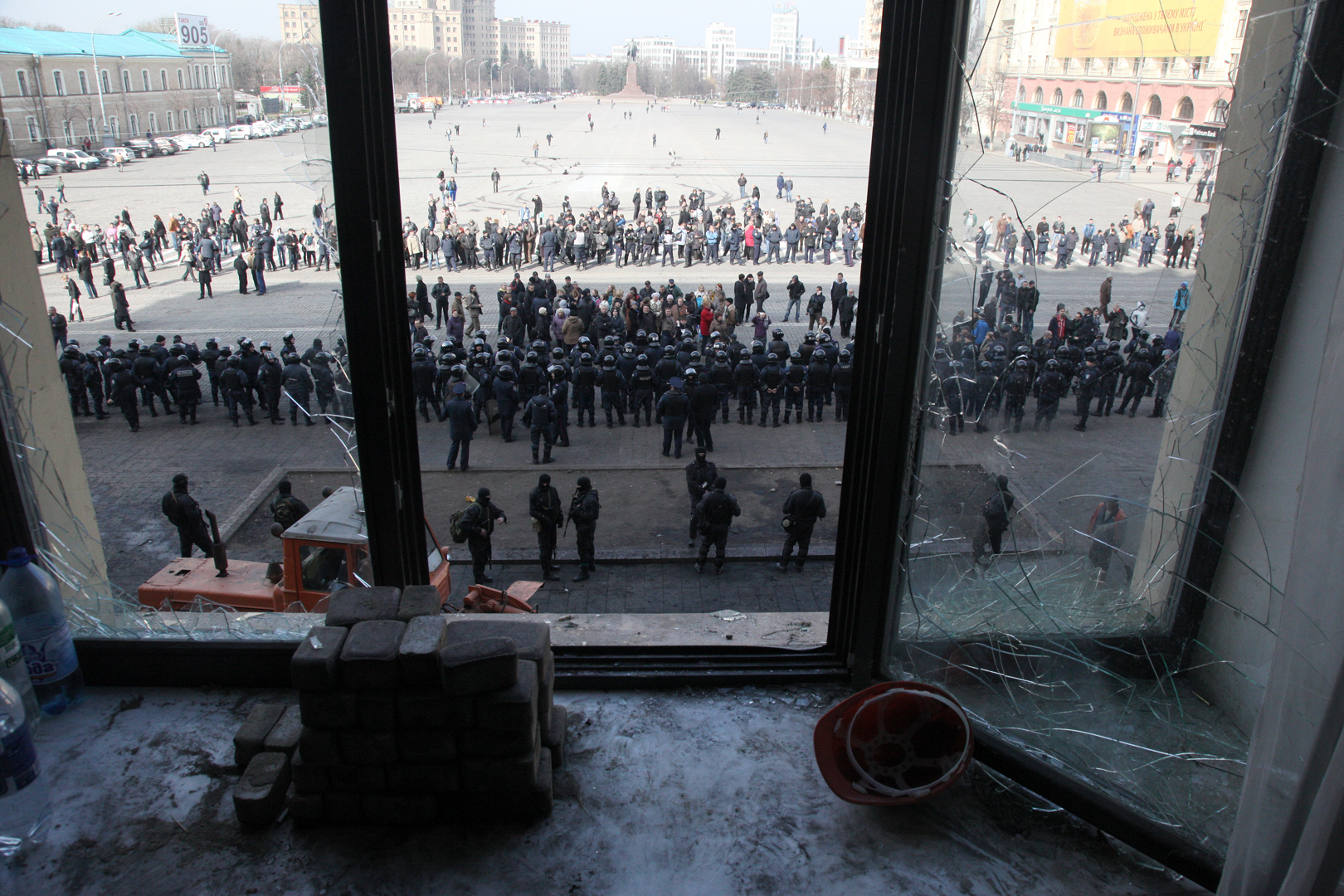
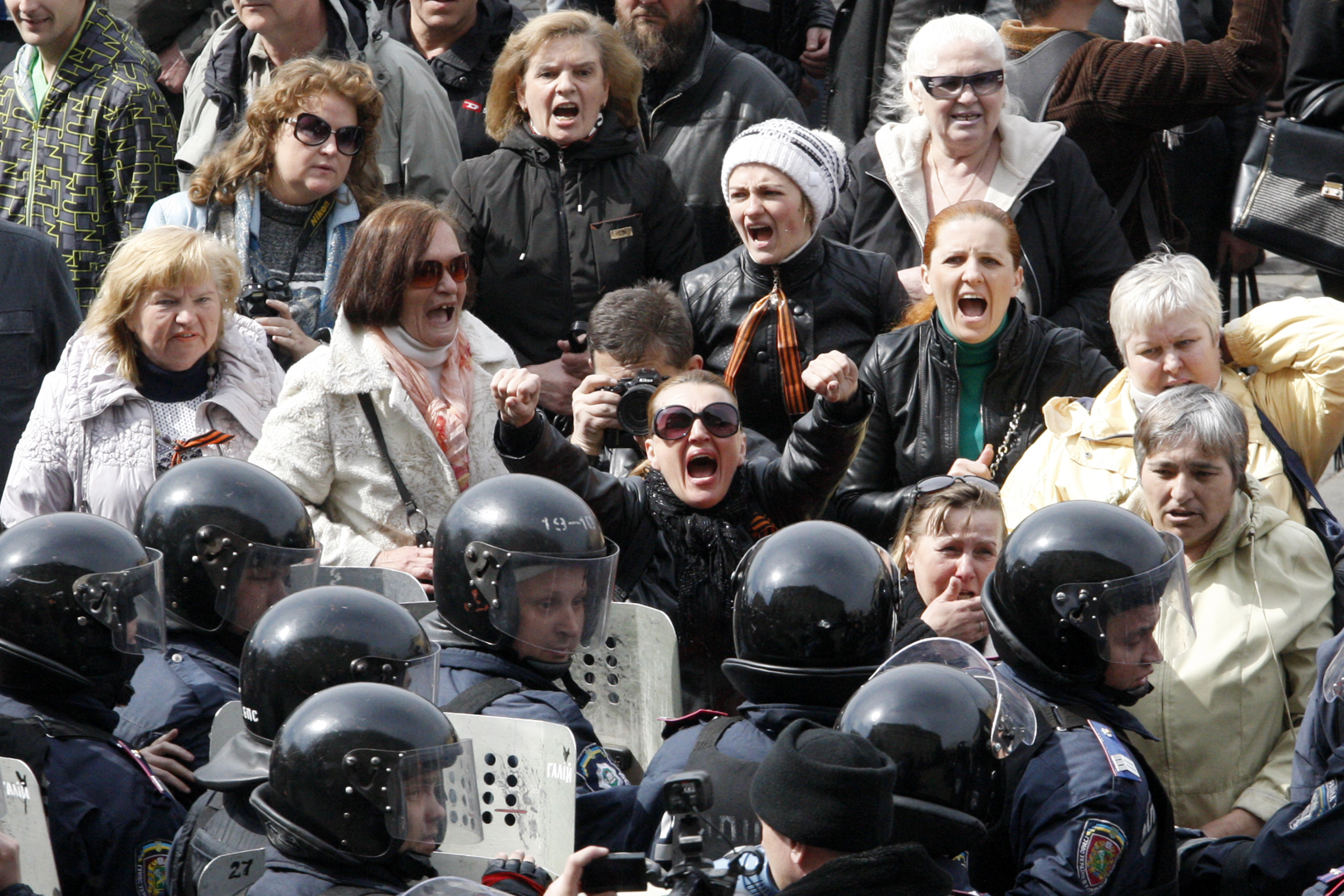
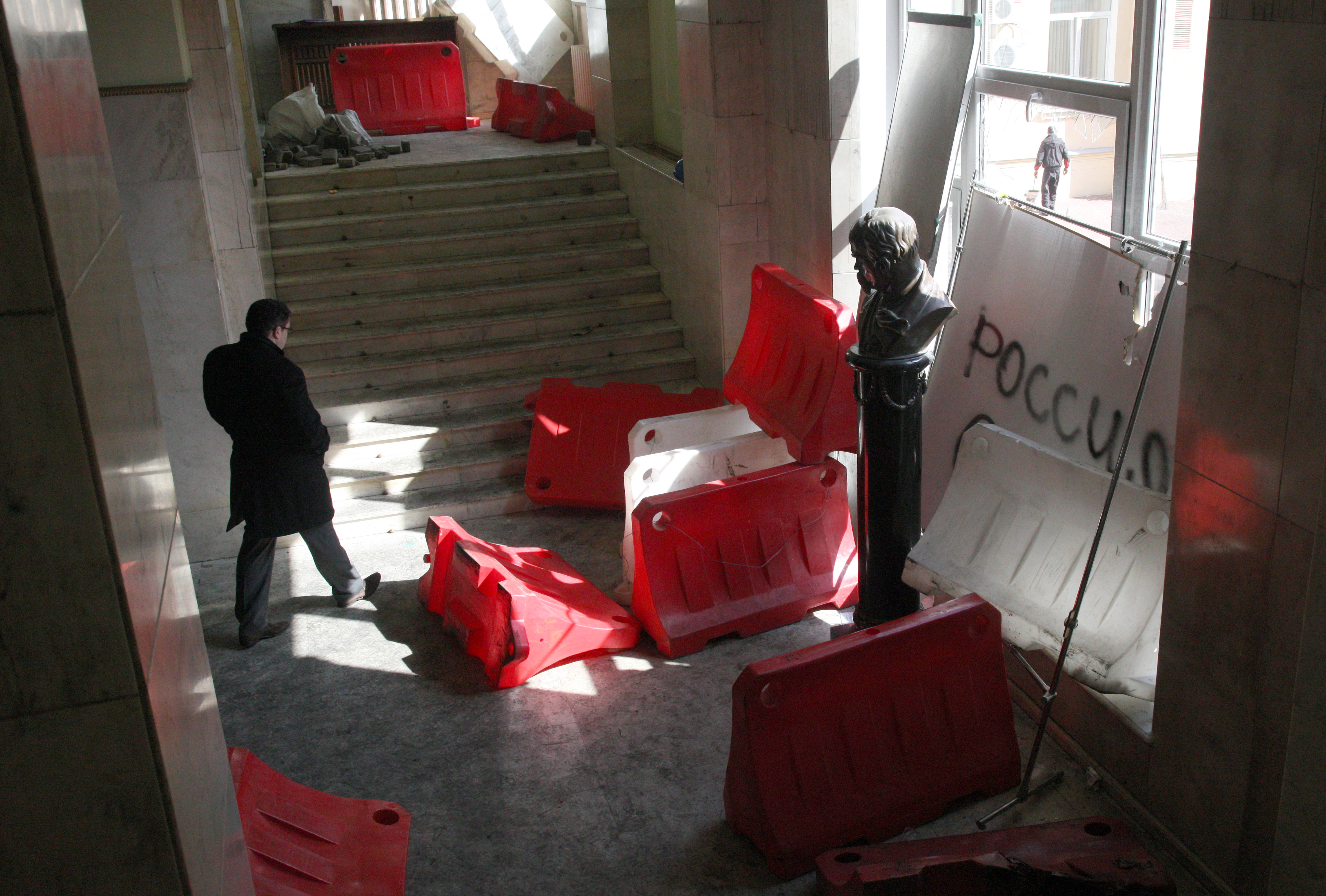
Locals came out with George's ribbons, tried to shout something, argued with the police, but there was no big aggression at that time. And quite quickly they were all literally put there with their noses in the asphalt. Those who captured the building were immediately taken away by a police special squad. In fact, this is the end of this in Kharkov. I had already taken pictures of how the square was being cleared — the broken windows, the mess inside the bay.It was clear that the rebels planned to stay in the Regional State Administration for a long time: they brought food, they were equipped. But they were a little hoodwinked - and very quickly they were expelled from there.
.jpg)
.jpg)
— And then you went to Donbas. Was it already Slavyansk?
— No, first — Donetsk. I lived in Donetsk at the time. The regional administration was already blocked there, people walked, drove dances. Russian flags hung, slogans such as “Merkel and Obama, hands off Ukraine” appeared.
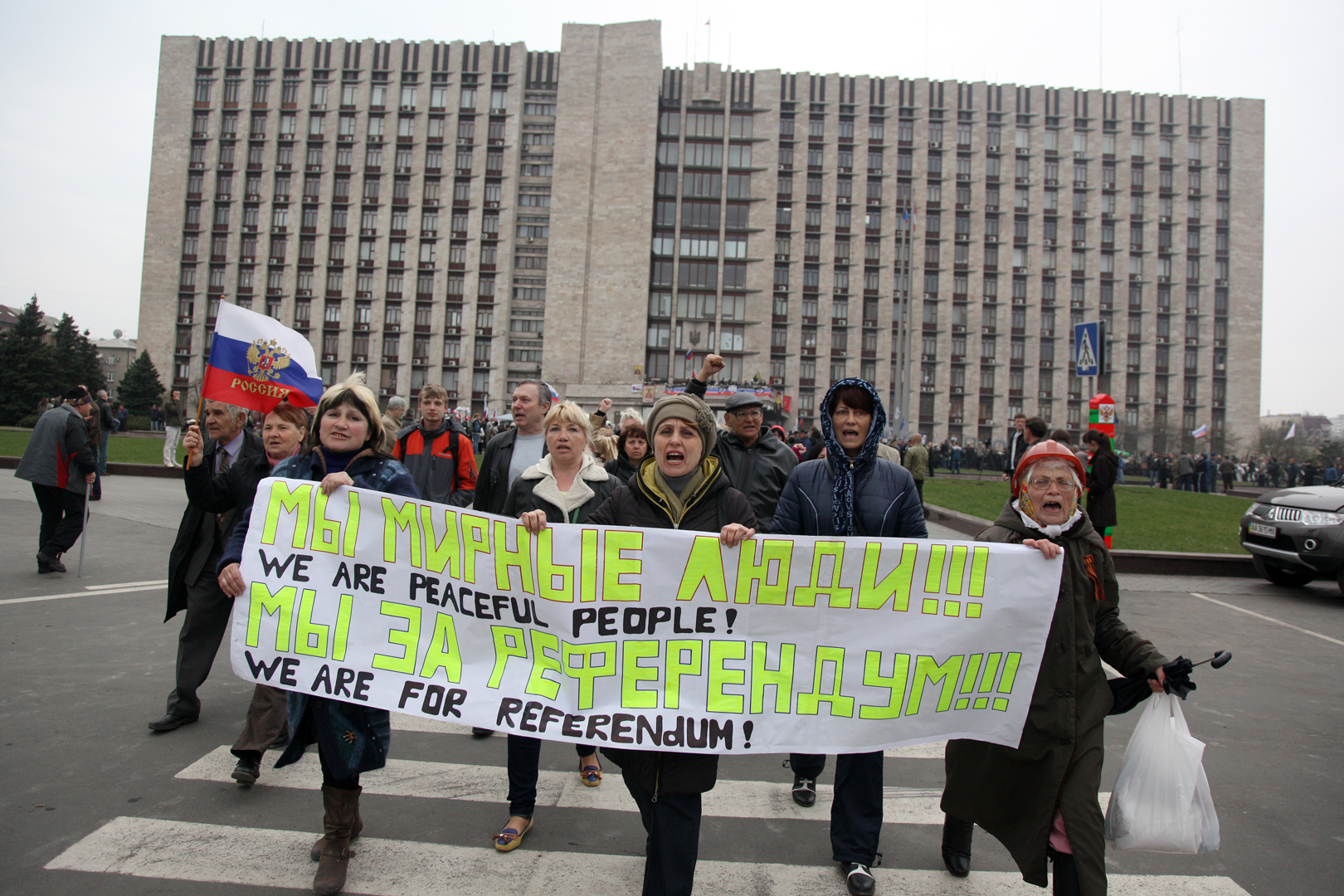
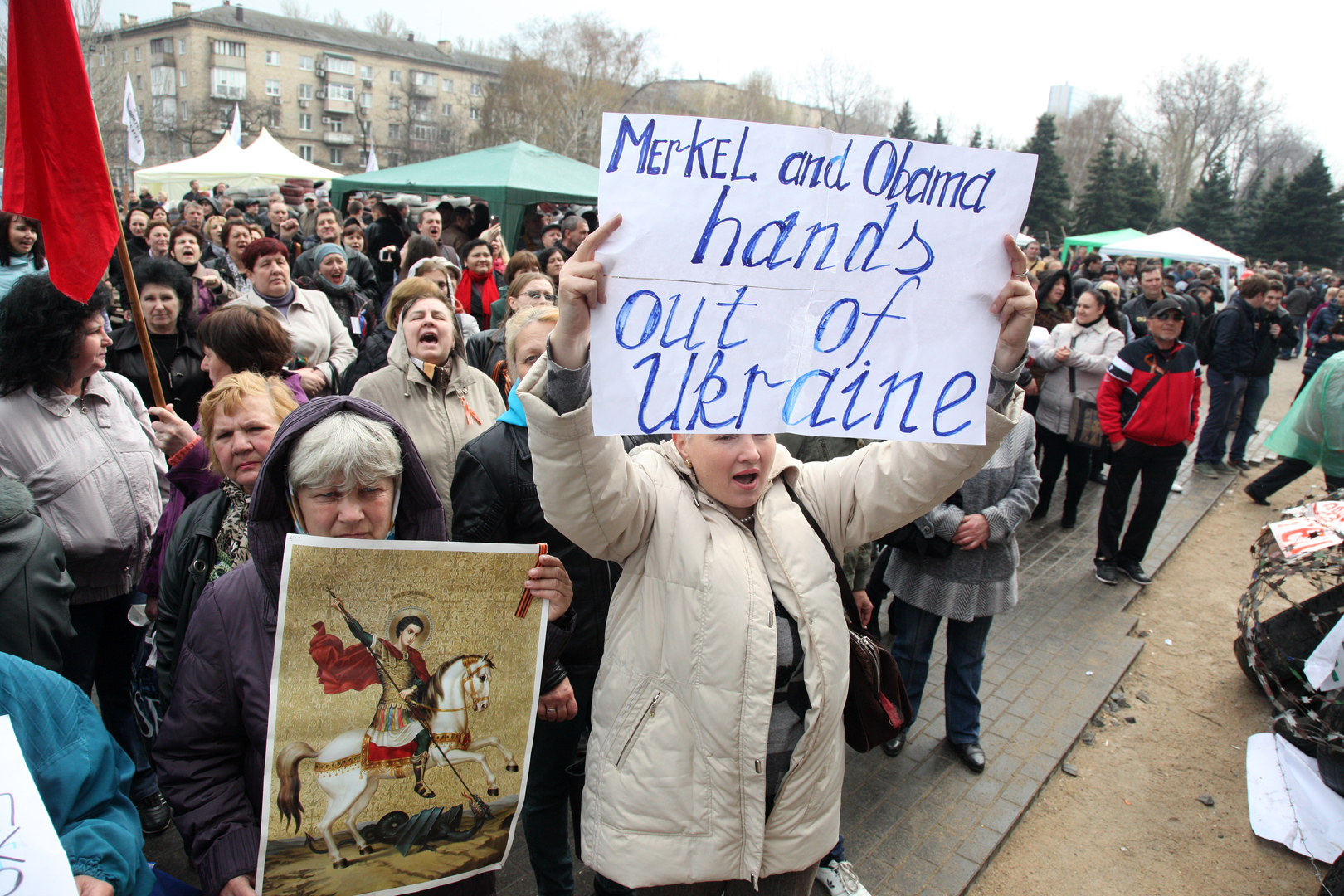
At that time, it was clearly felt that a large part of the local population was against Ukraine. It was really noticeable. Perhaps this is how the Maidan influenced it. And yet — they were in information isolation for a long time, they were constantly processed by Russian television. By the way, the flags of the “DPR” — this combination of black, blue and red — I saw and took off back in 2005, after the first Maidan in Kyiv. Even then, they came to the capital, carried these flags and tried to talk about a “Donetsk People's Republic”. That is, this project has been prepared for a long time and in the Donbas has found a very favorable soil for itself, let's say so.
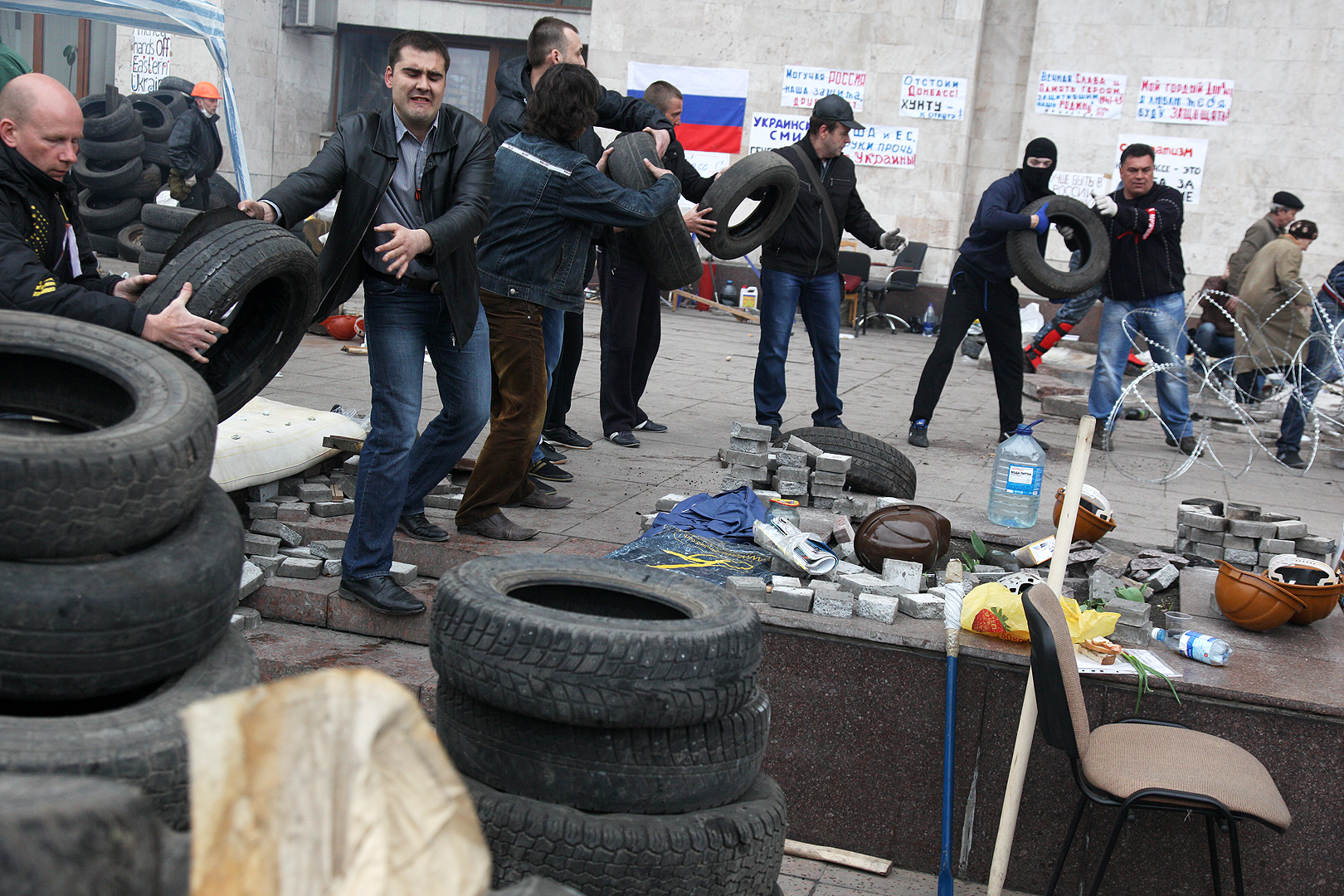

— You said you lived in Donetsk. Did you really live there permanently, or just came during this period?
— I arrived in Donetsk on April 9, stayed in a hotel and started filming everything that happened there. And on April 10, I remember well, there was an accident at the mine named after Skochinsky — miners died. We shot it together with local photographers. One of them then said: “You go there — look carefully, miners don't like it when they are shot. They can be beaten.” We arrived and, surprisingly, no one touched us — the miners were very depressed.
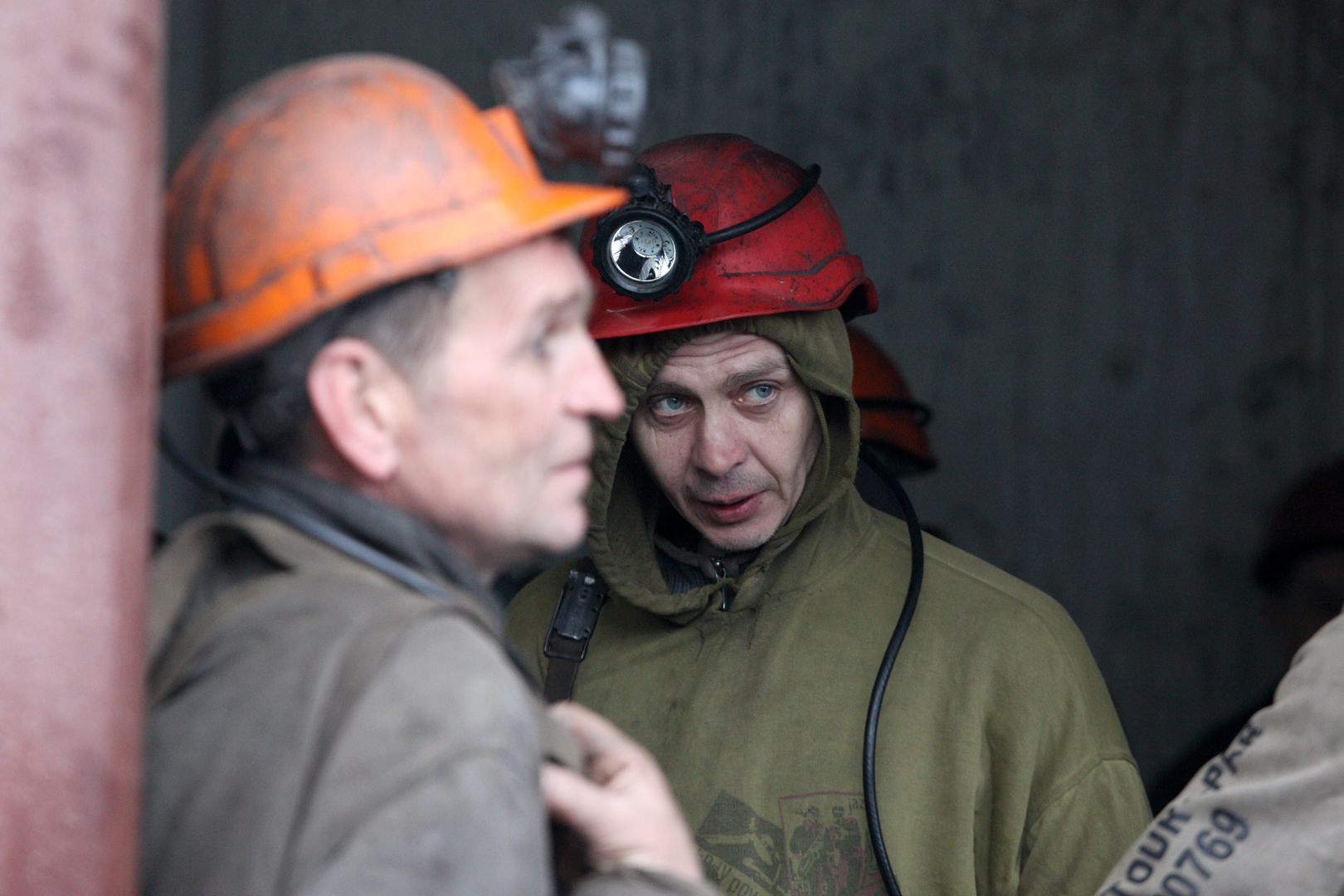
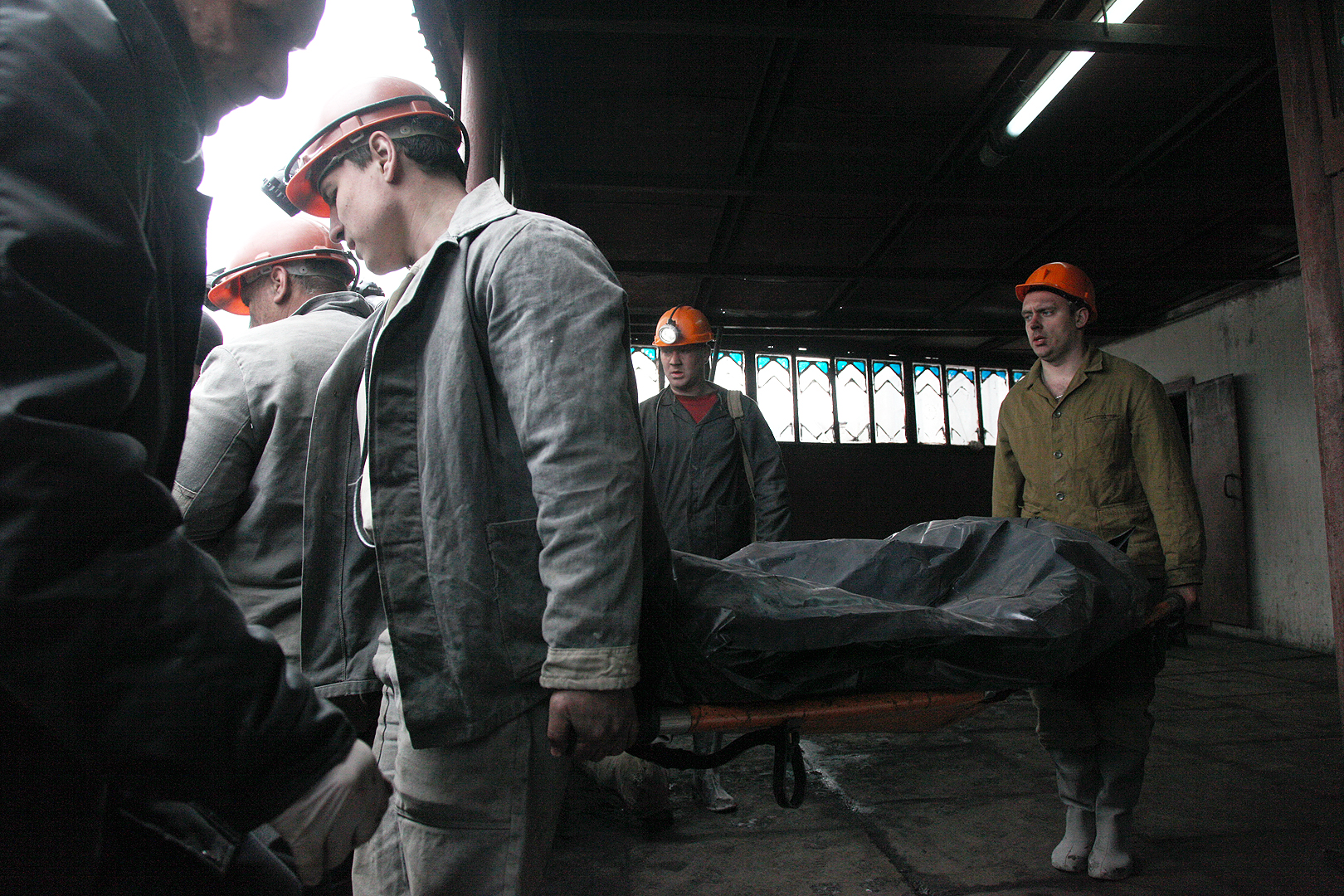
We stood, filmed the bodies being carried away, and even the rescuers — their mood, their facial expressions — all spoke of fatigue and depression. Perhaps this was not only because of the accident, but also because of the general atmosphere that prevailed in Donetsk at that time. But no one touched us, not a word. And then there was Slavyansk. In the morning of April 12, the news came that the district police department in Slavyansk had been captured — and for three hours I was standing near this building.

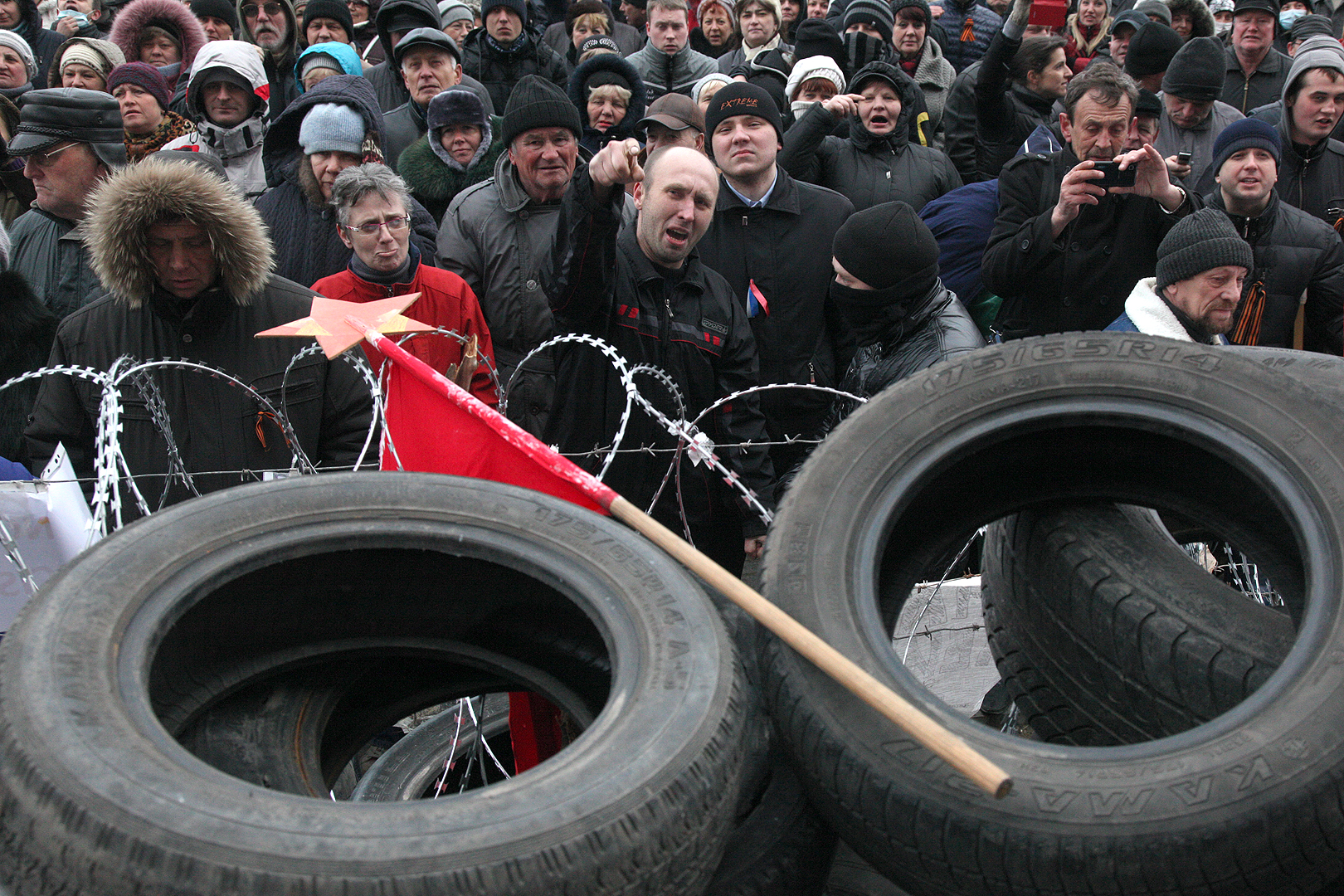
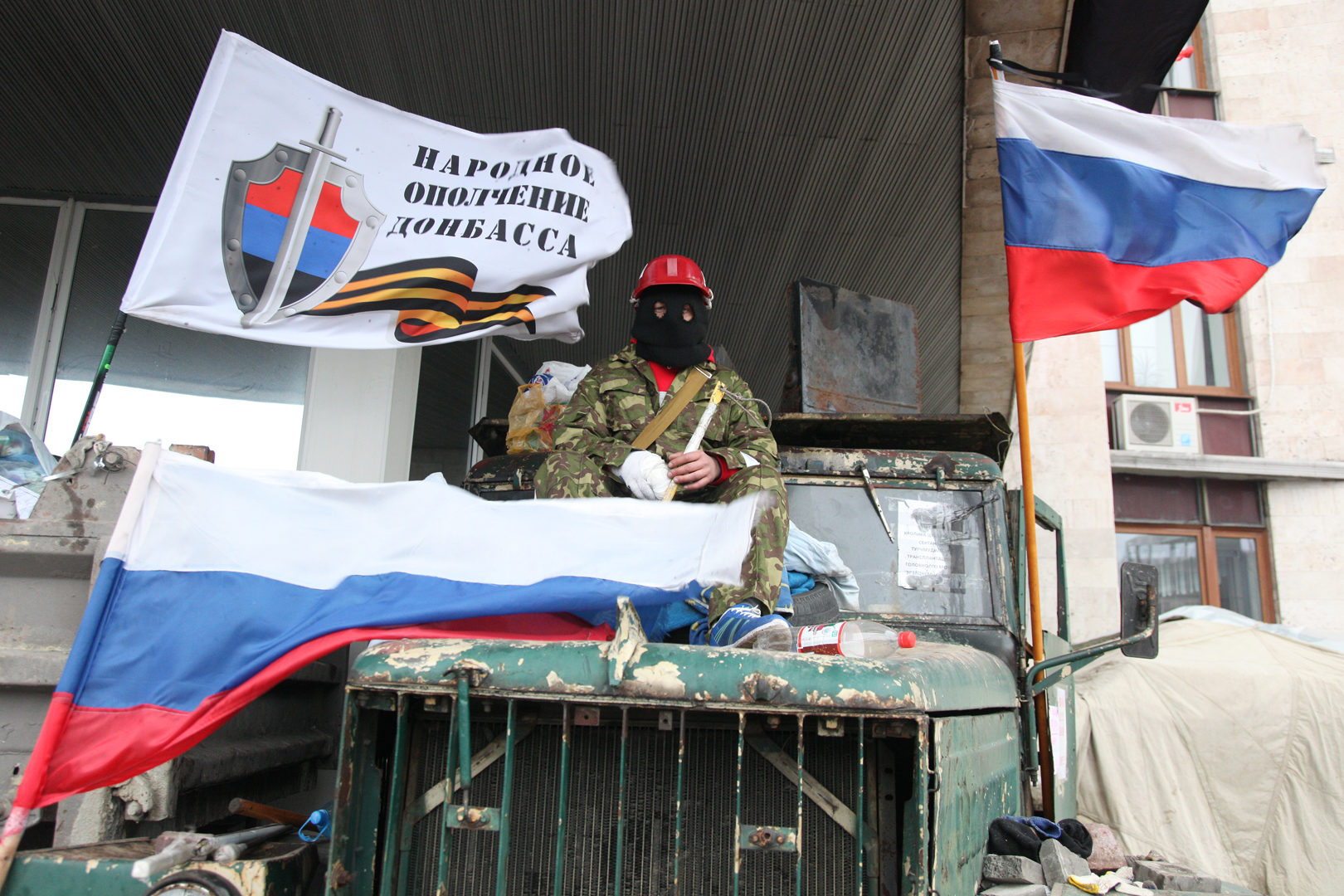
— Can it be said that then — literally before your eyes — they began to bring people from Russia in order to create the illusion of mass anti-Maidan? How was everything in Slavyansk at the time of your arrival?
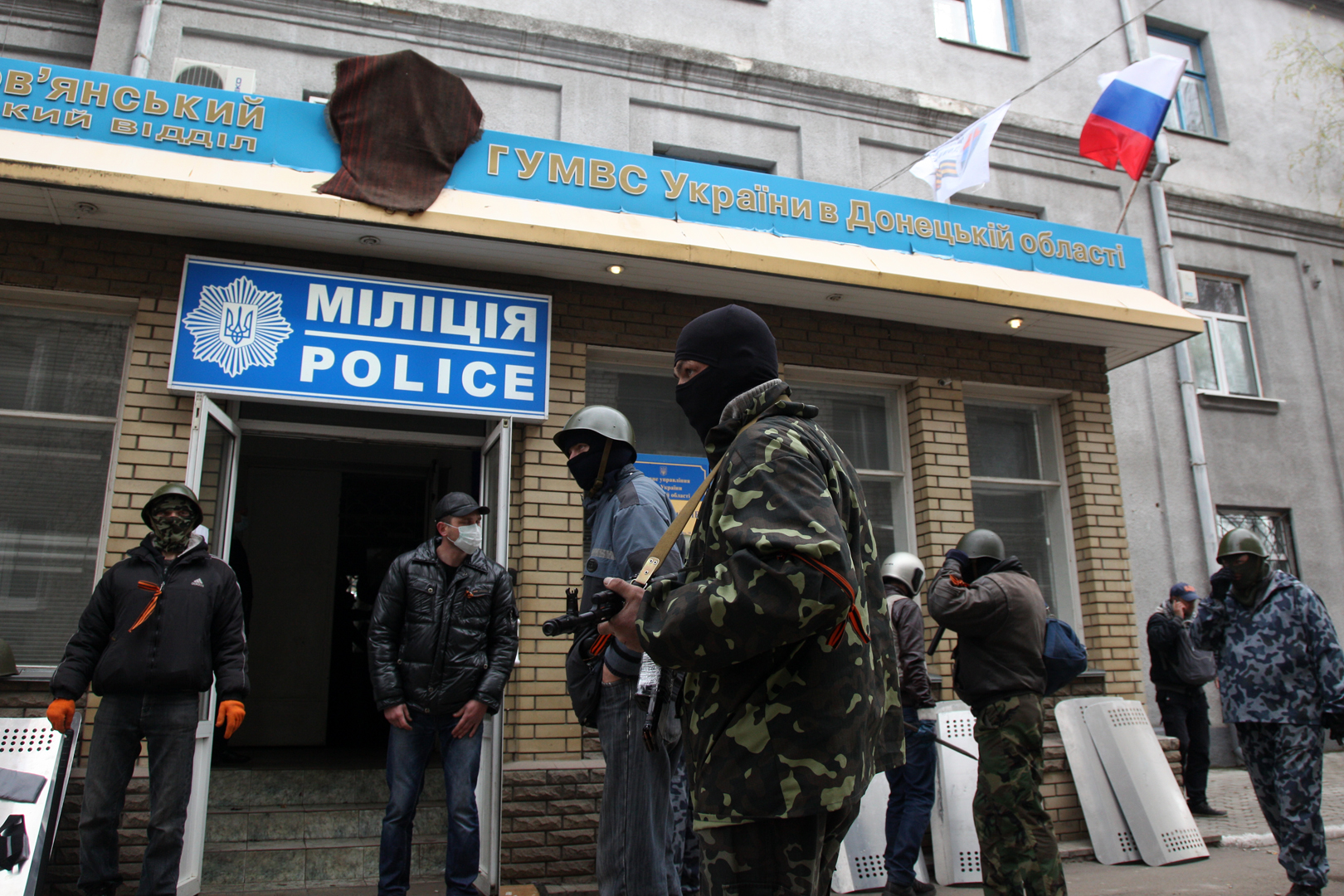
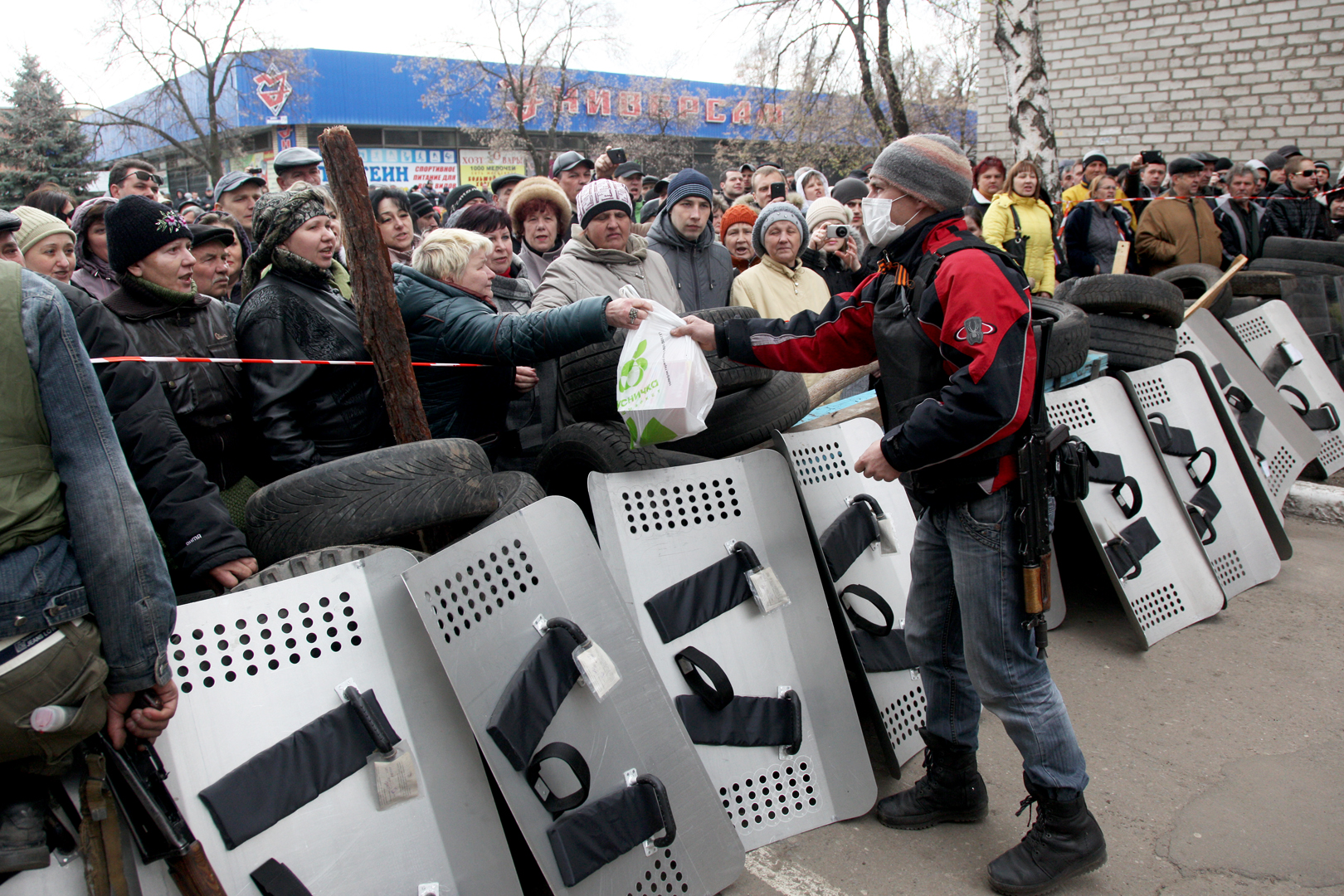

— I came to Slavyansk on April 12 — just in the midst of events. What I saw was no longer a protest, but a rebellion, although it was actively supported by many local residents. Women went out, became in a chain, tried not to let the police, although at that time it was practically no longer there. Armed people walked around the city, it was seen that some of them were locals, but there were others - trained, organized, dressed in camouflage. It was clearly not a Ukrainian special squad — people with military skills.
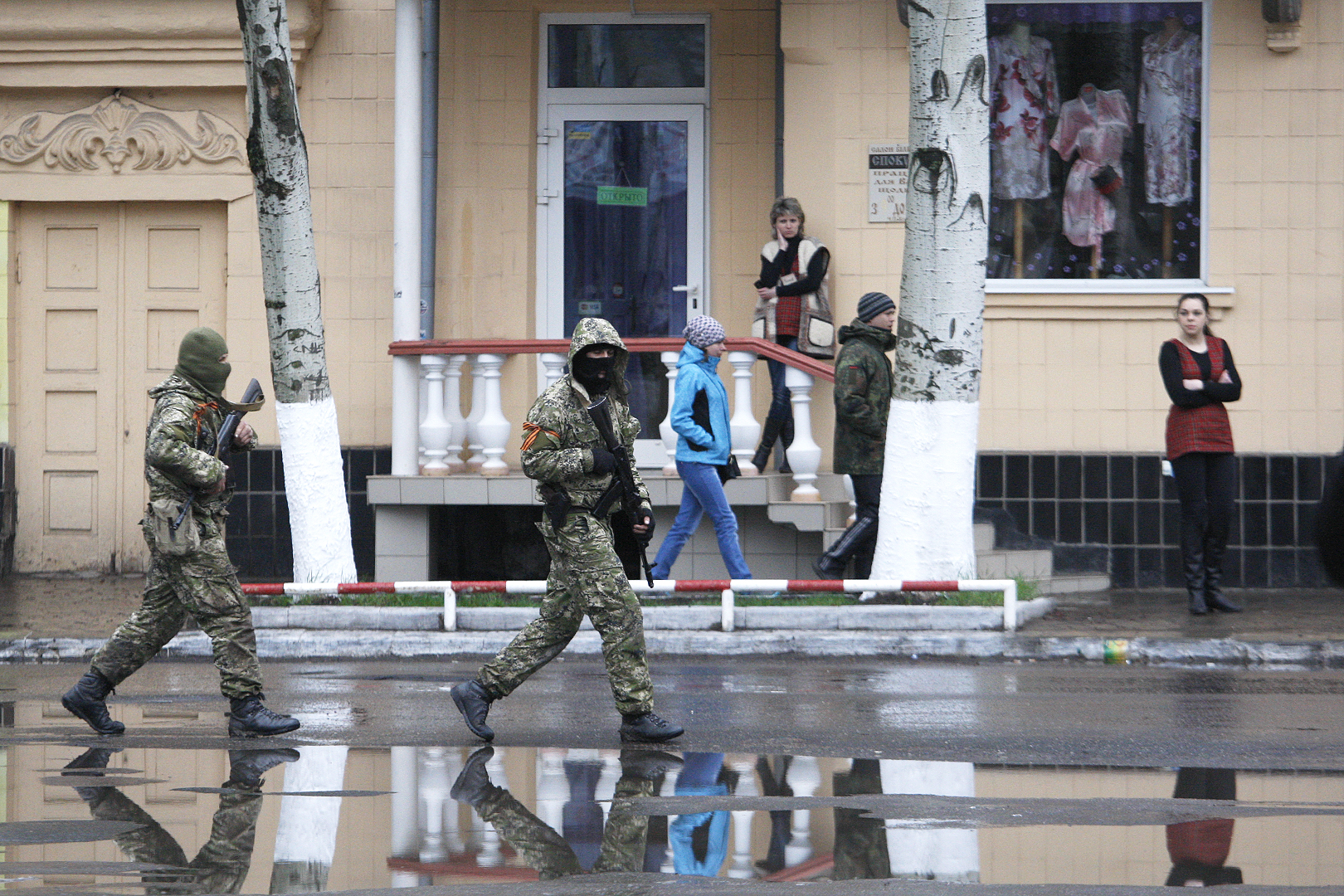
I spent just half an hour near the district department — then I had neither accreditation nor ID — and realized that I had to leave there, because journalists began to be detained. Even then, Russian flags hung, locals stood with St. George's ribbons, handed food to these rebels.
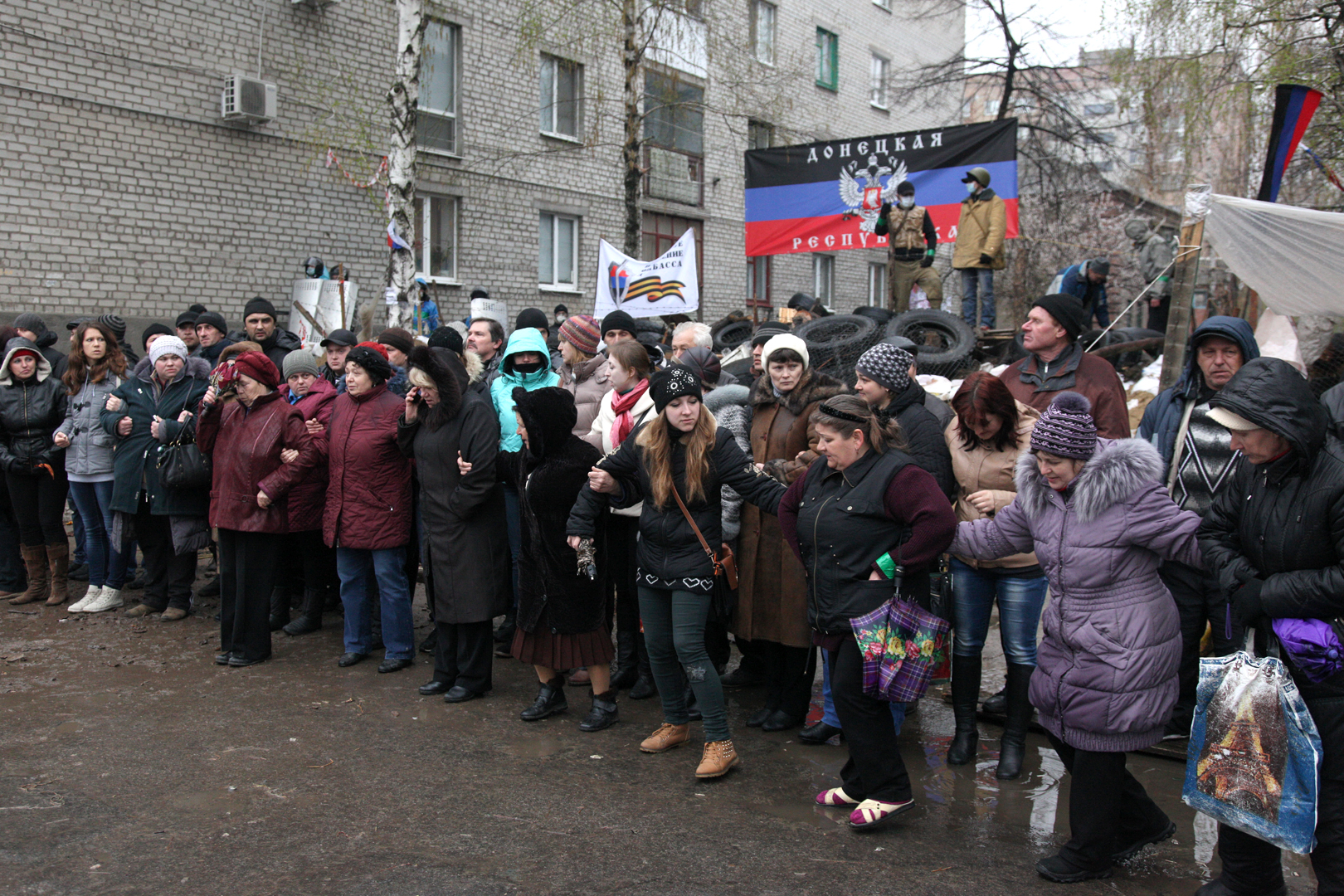
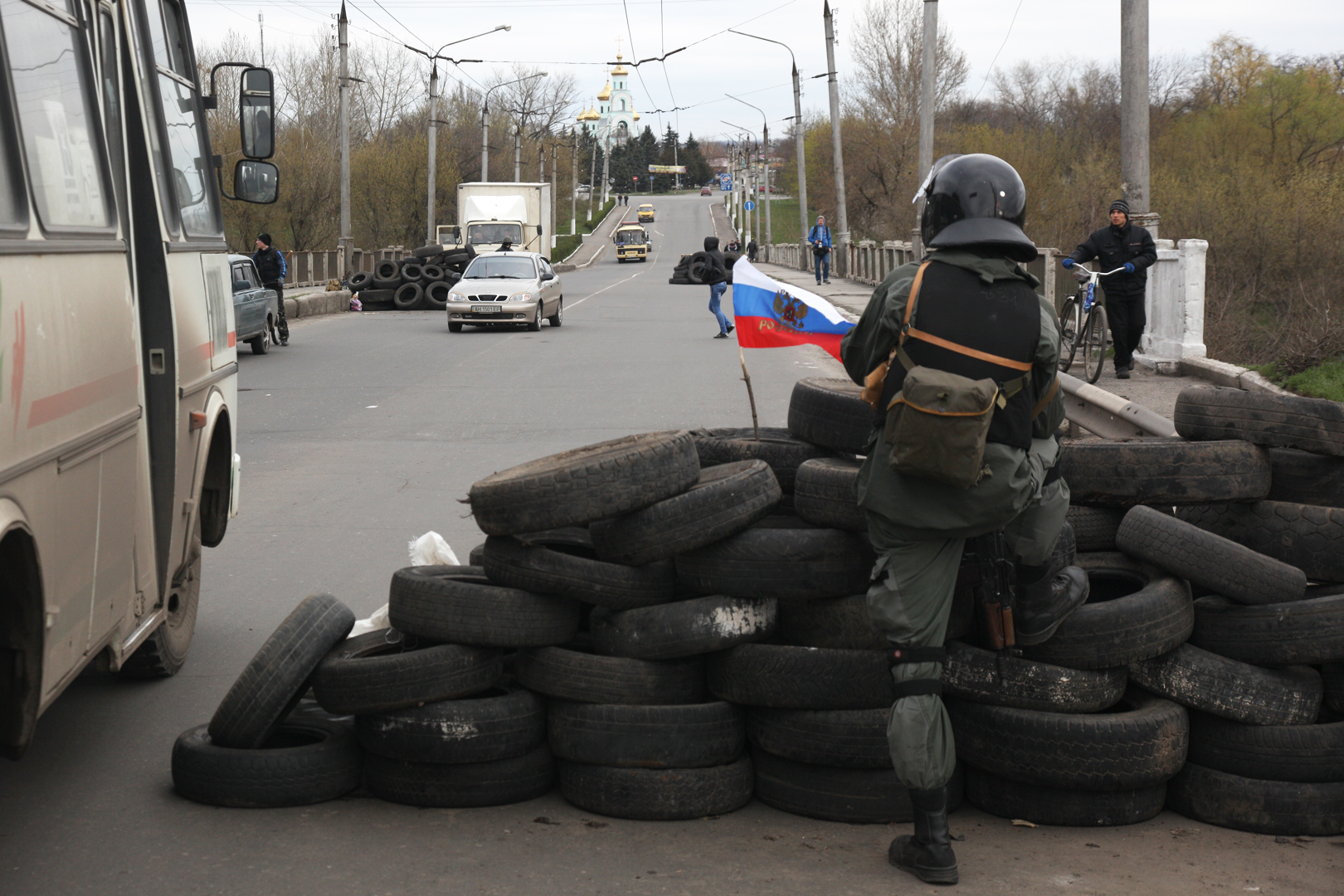
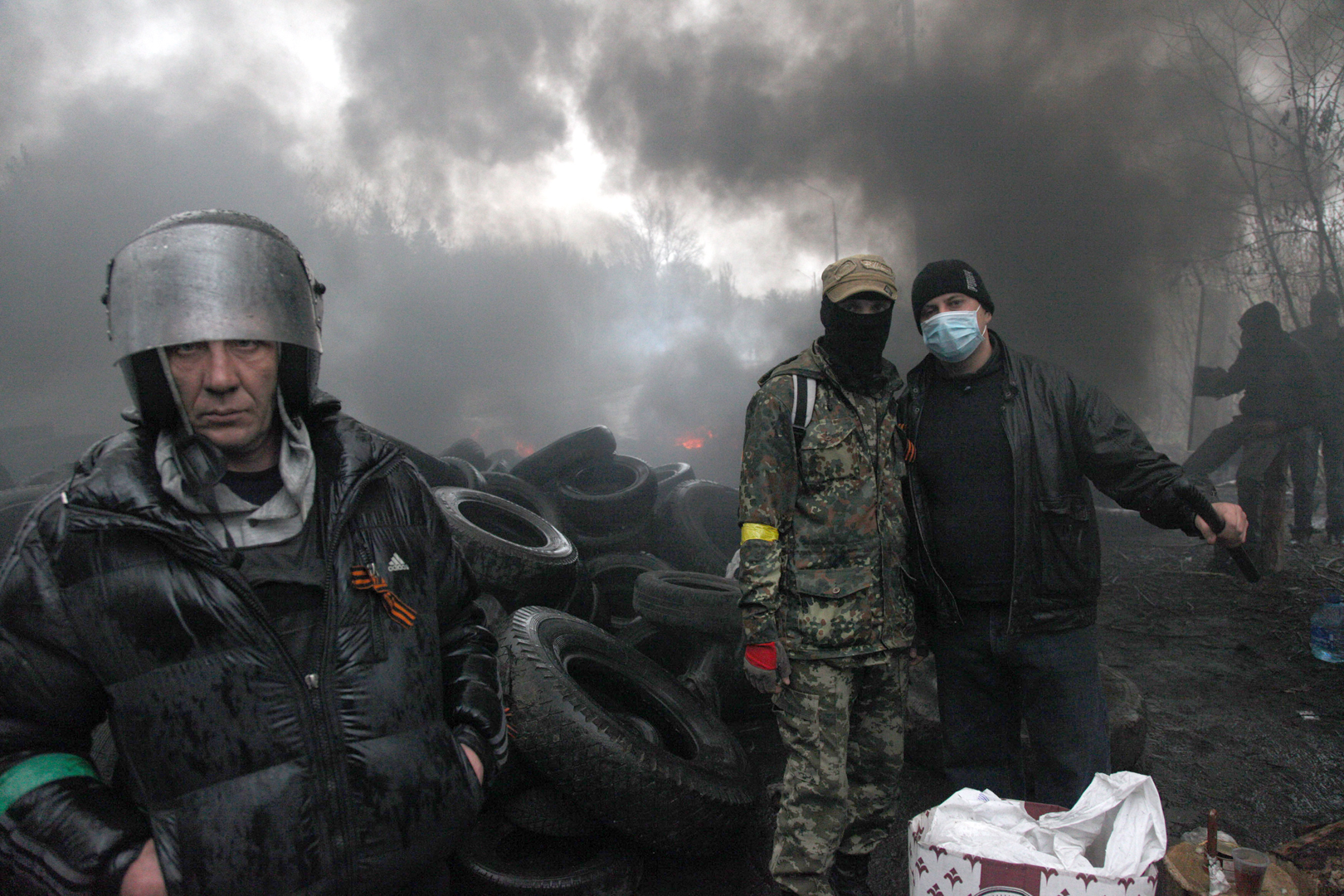
On April 13 or 14, I was again in Slavyansk — checkpoints began to be built in different places. I remember getting out of a taxi near the bridge and hearing a shout: “Get the car out of the line of fire!” I looked around — a man in camouflage with a George ribbon brought a machine at me. Behind him stood several more of the same — in military uniform.
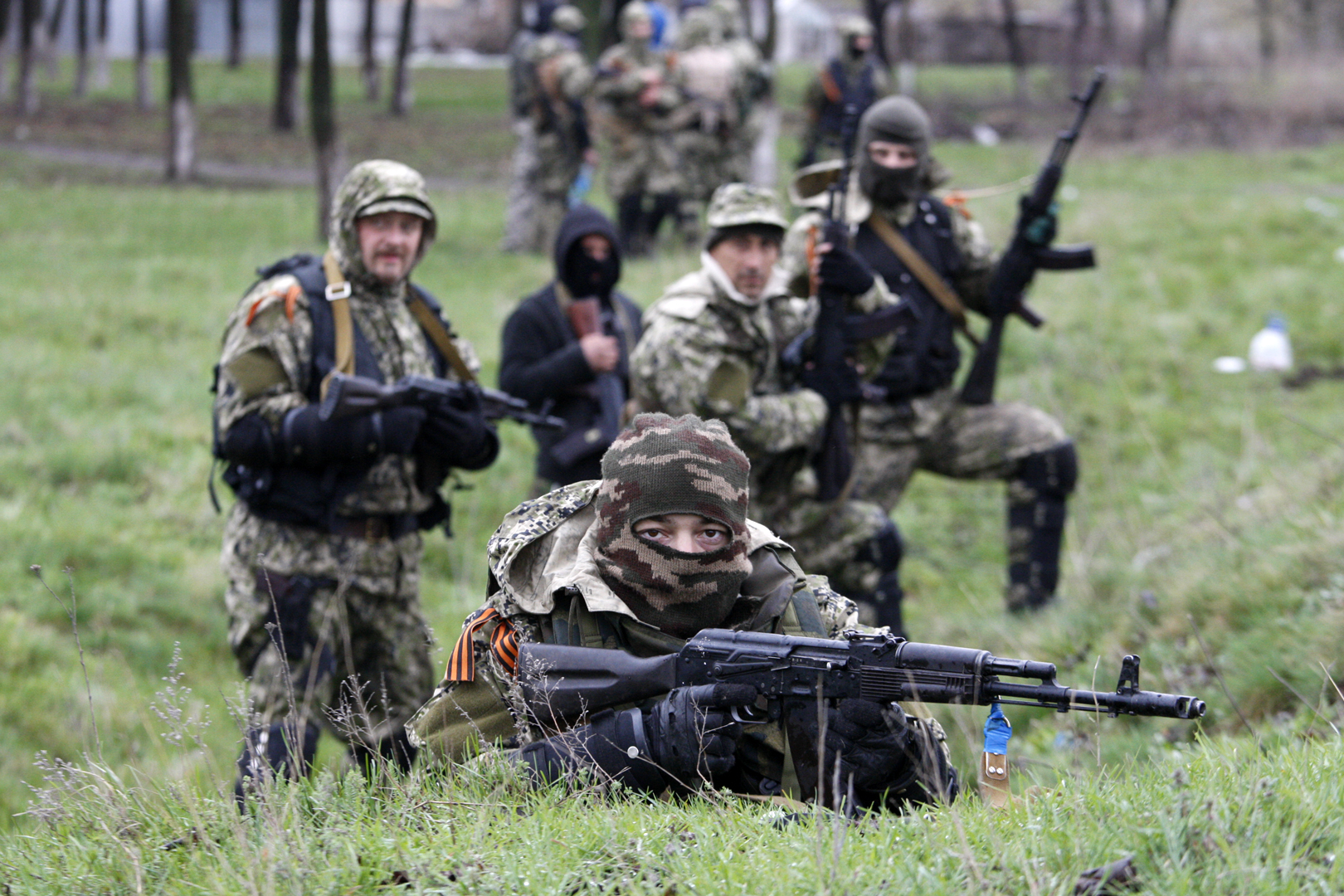
The taxi left immediately and I stayed. To run means to risk being shot, so I decided to go and talk. He asked who they were — first “unmasked”, and then said: “We are “Tver wolves.” I asked permission to shoot them — they called somewhere and then allowed to shoot. I was then talking to a militant in a big sheepskin hat with a beard, he said literally the following: “I am a Kazakh, I came to save the Orthodox from the Greek Catholics.” Later I found out it was a dingo.
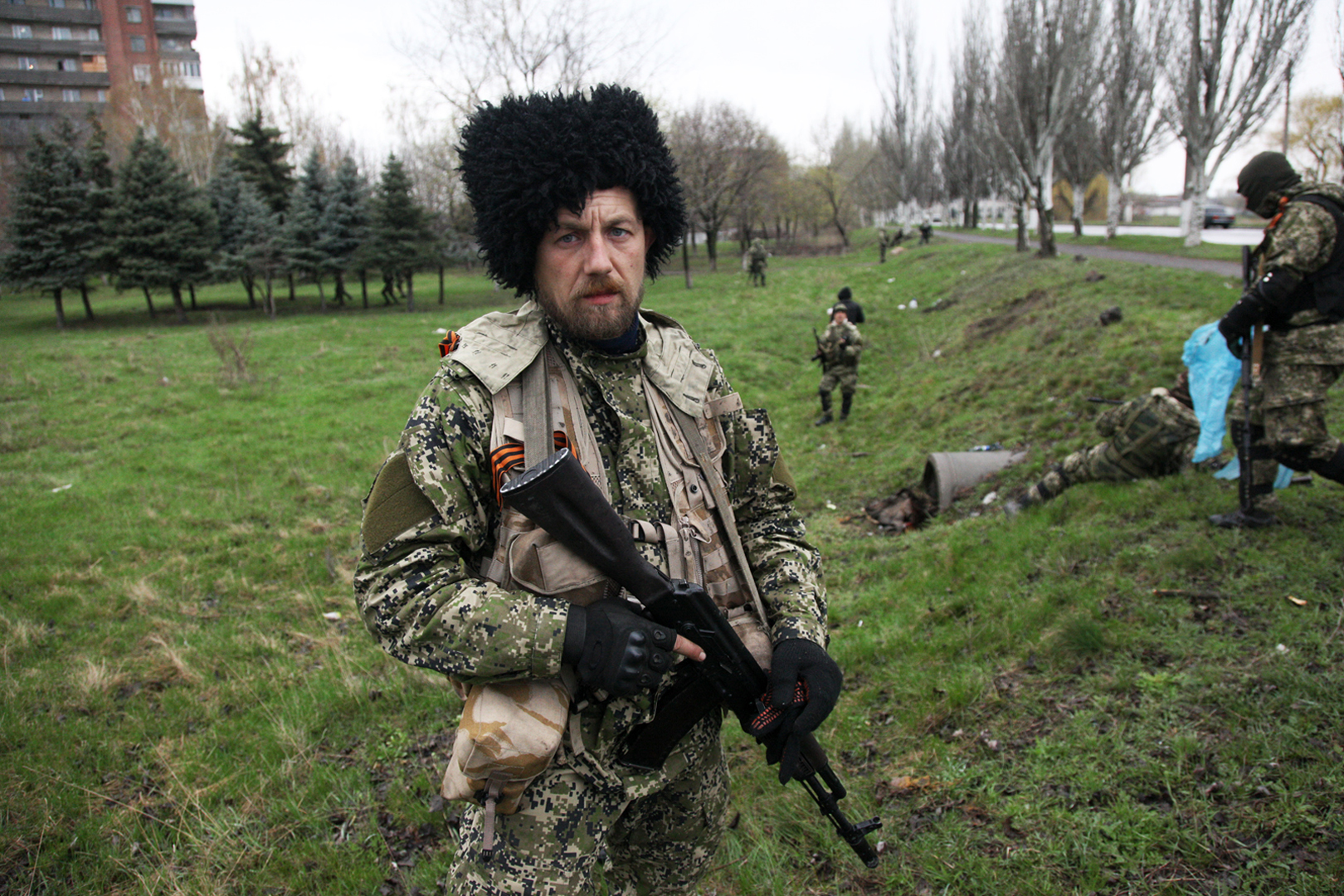
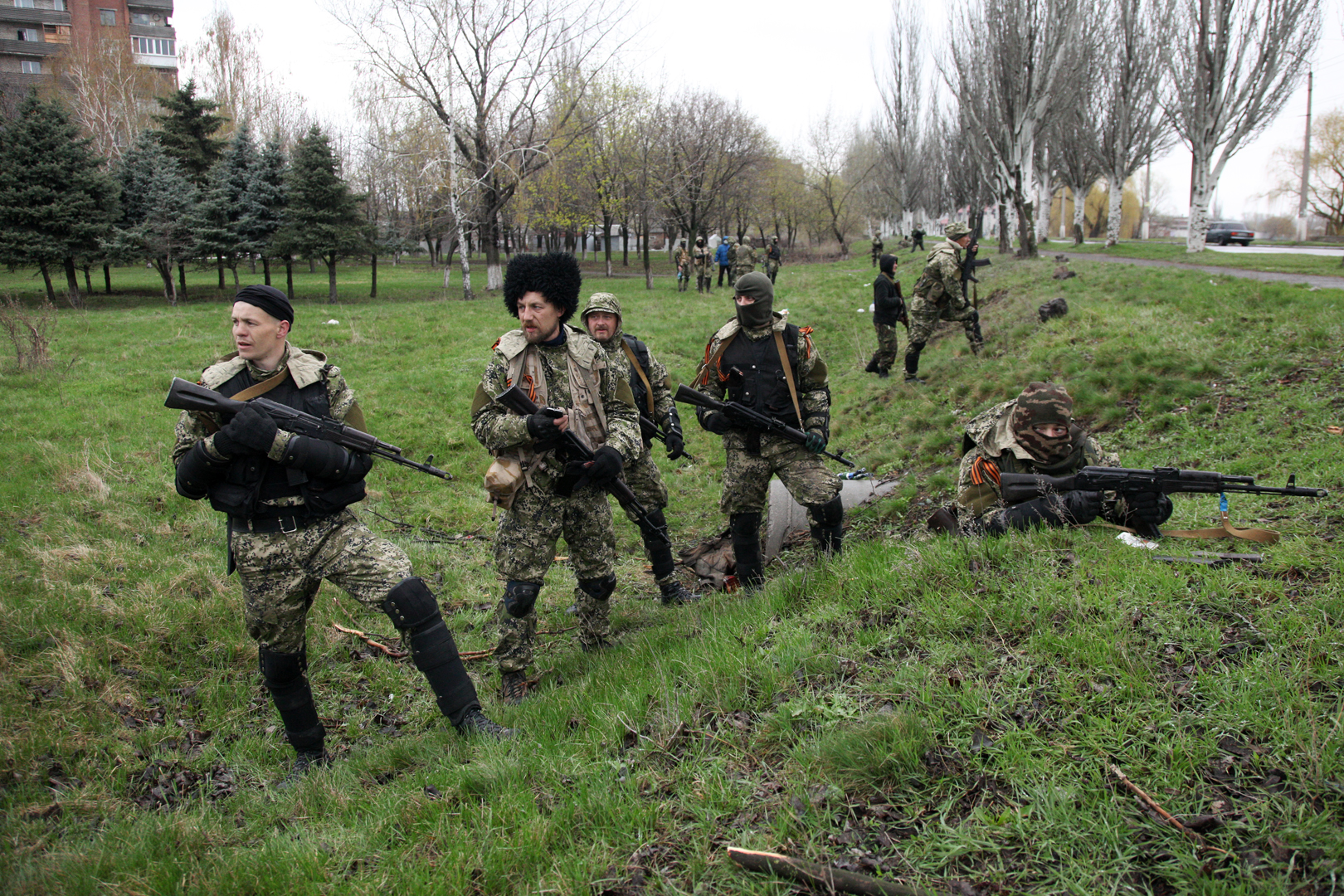
It was on that day, by the way, that a force operation to strip Slavyansk was planned, but for some reason it was canceled. At the same time near Semenivka (village in Kramatorsk district in Donetsk region — N.B. ed.) armed militants attacked the SBU group “Alpha”. The first to die was the captain of the “Alpha” Gennady Bilichenko.
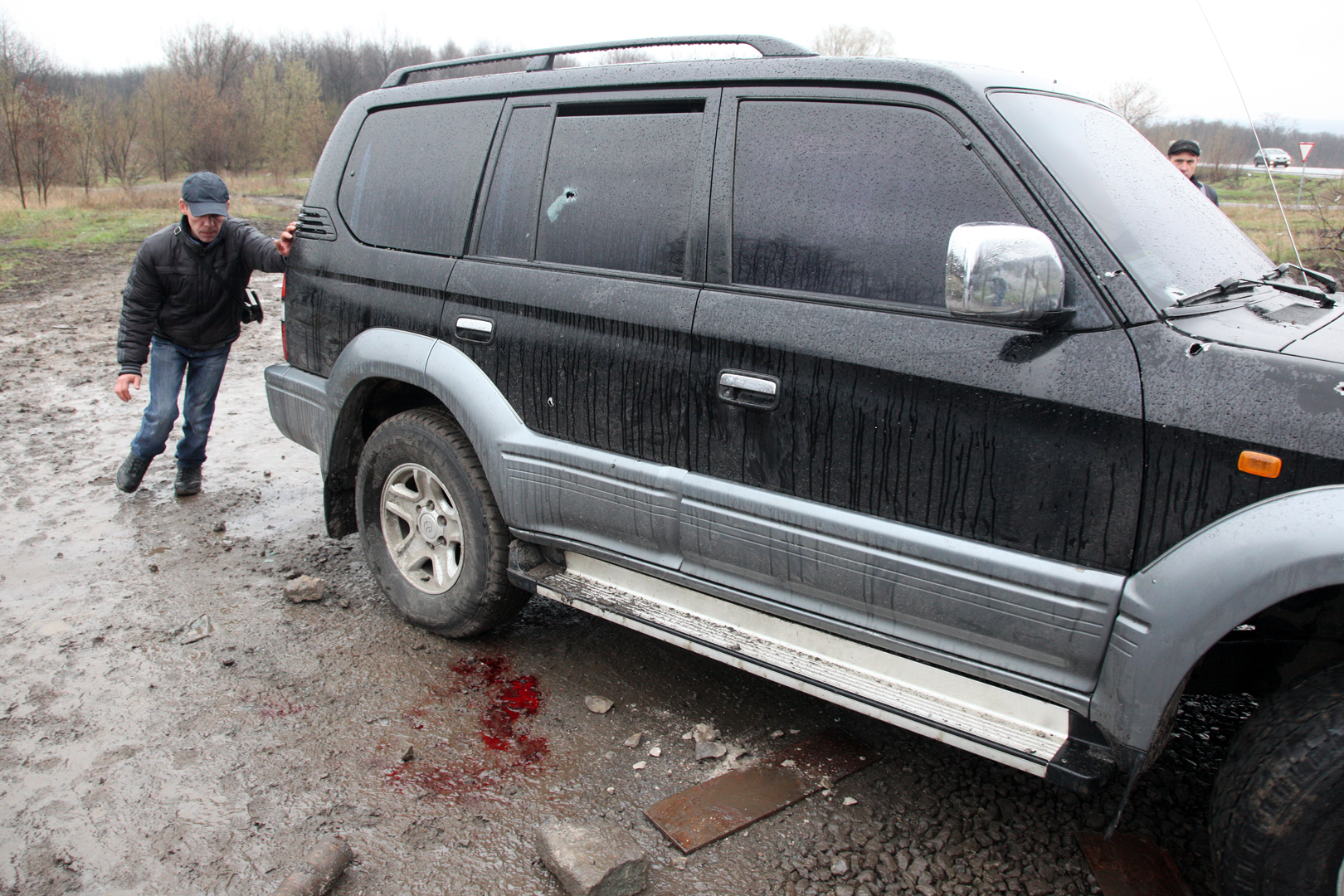
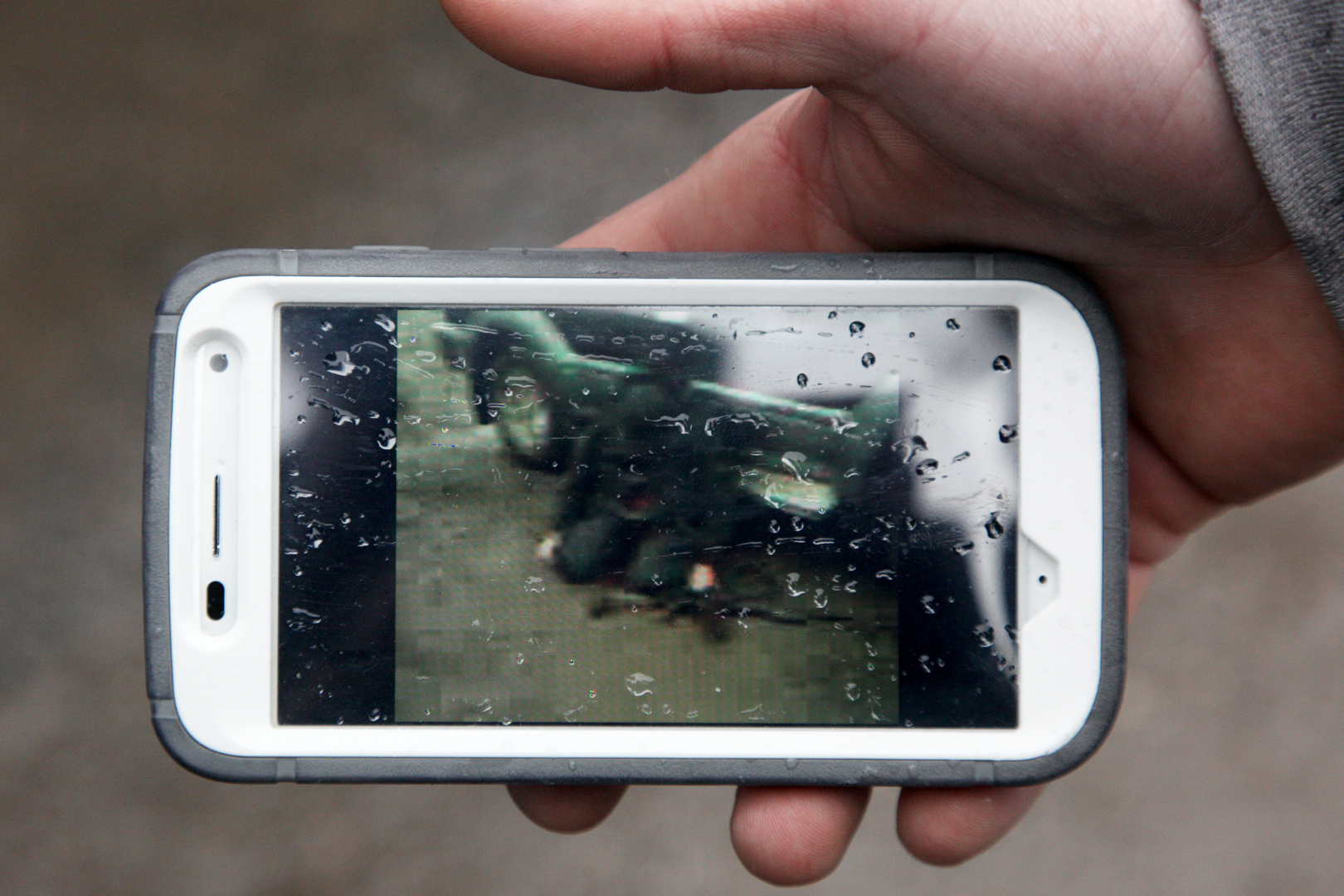
During these events at the same place, senior lieutenant Vadim Sukharevsky made the first combat shot in this war. He actually broke the order not to open fire and saved the Alfives.
I arrived at the scene after everything had happened. On the spot stood a shot blue Volkswagen — an Alpha service car, and beside it — pools of blood.
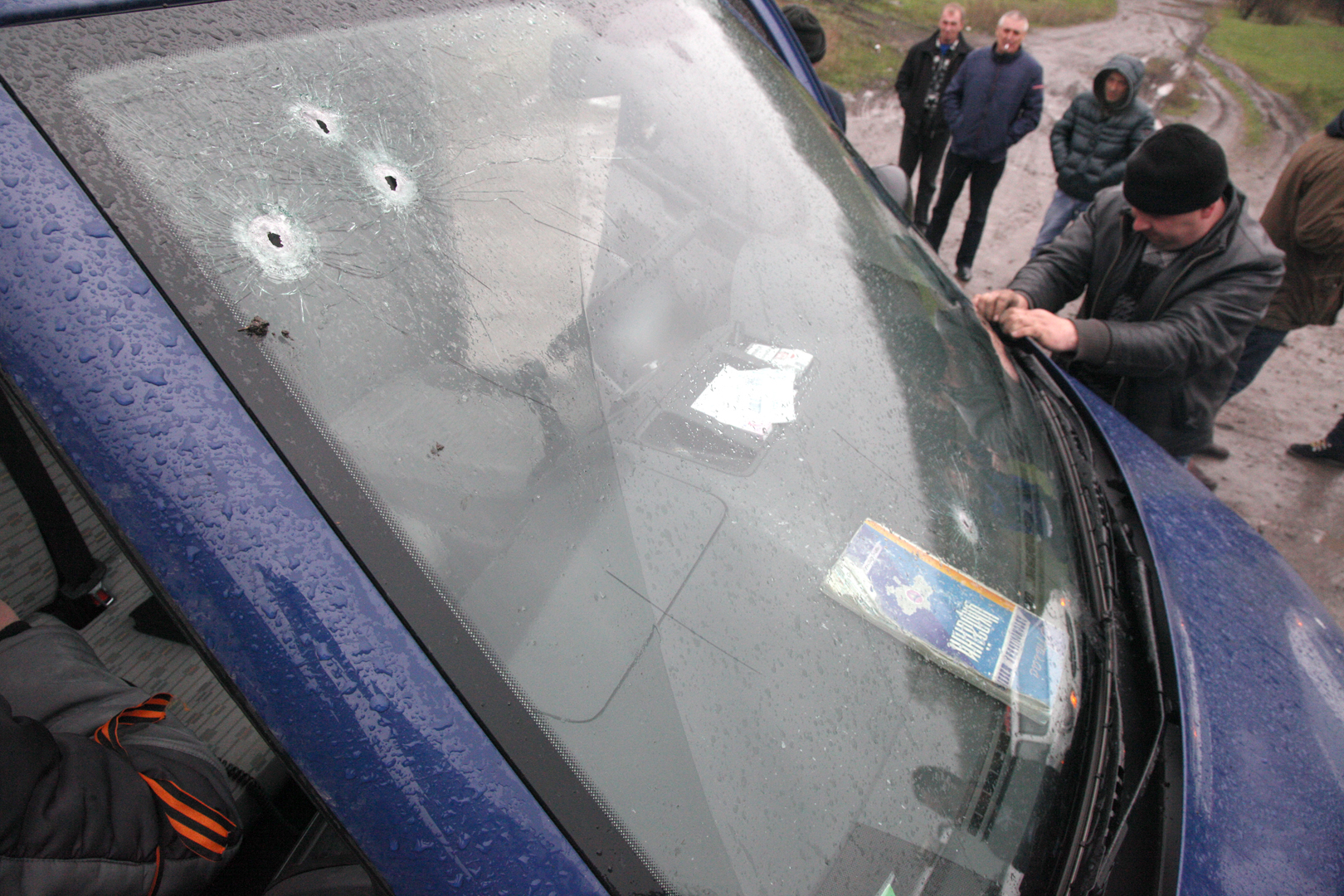
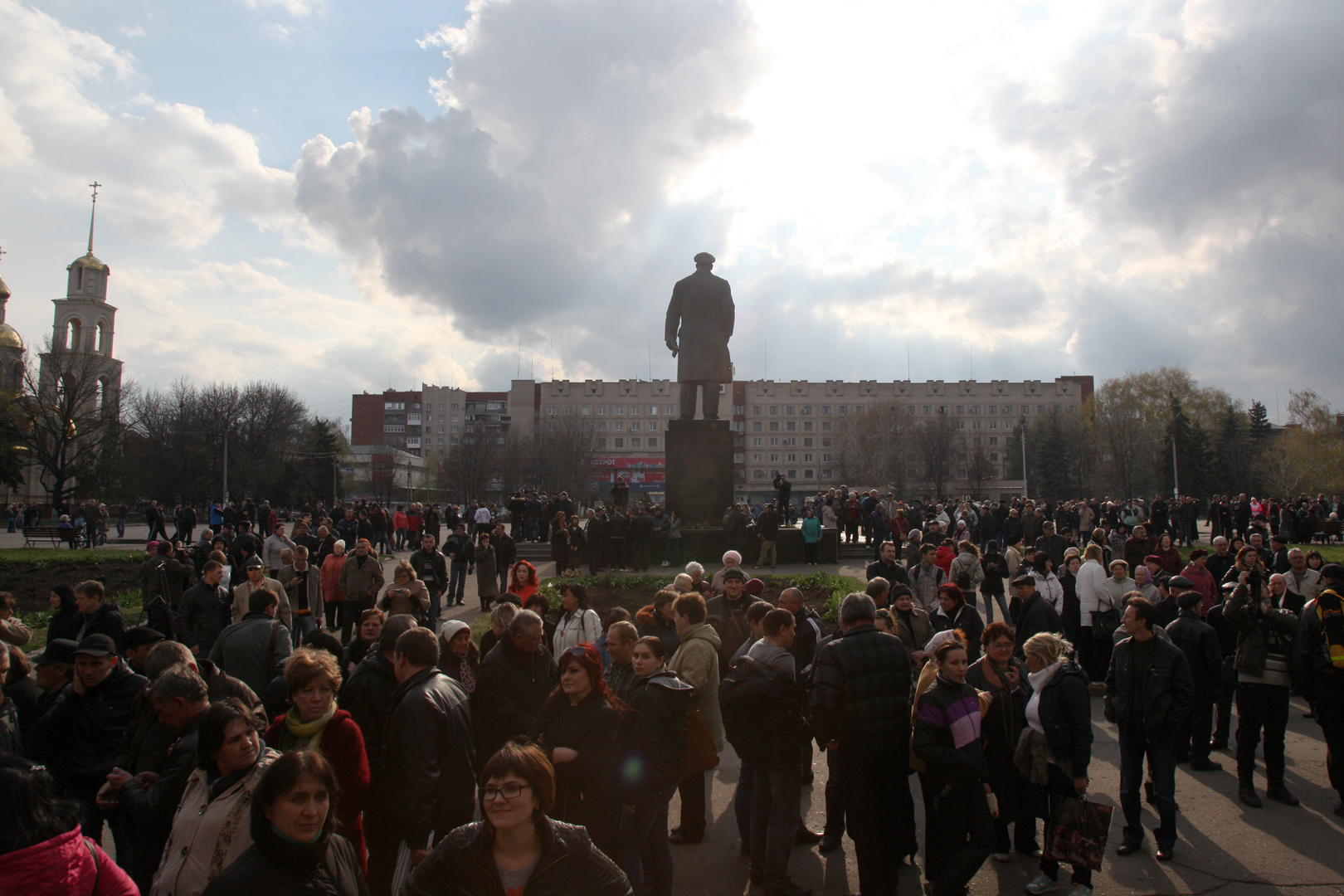
And the next day, a rally was held in the city, at which Nelia Shtepa, an odious local mermaid, spoke. After the rally there was a “brotherhood”: locals came to take pictures with armed people, brought children.
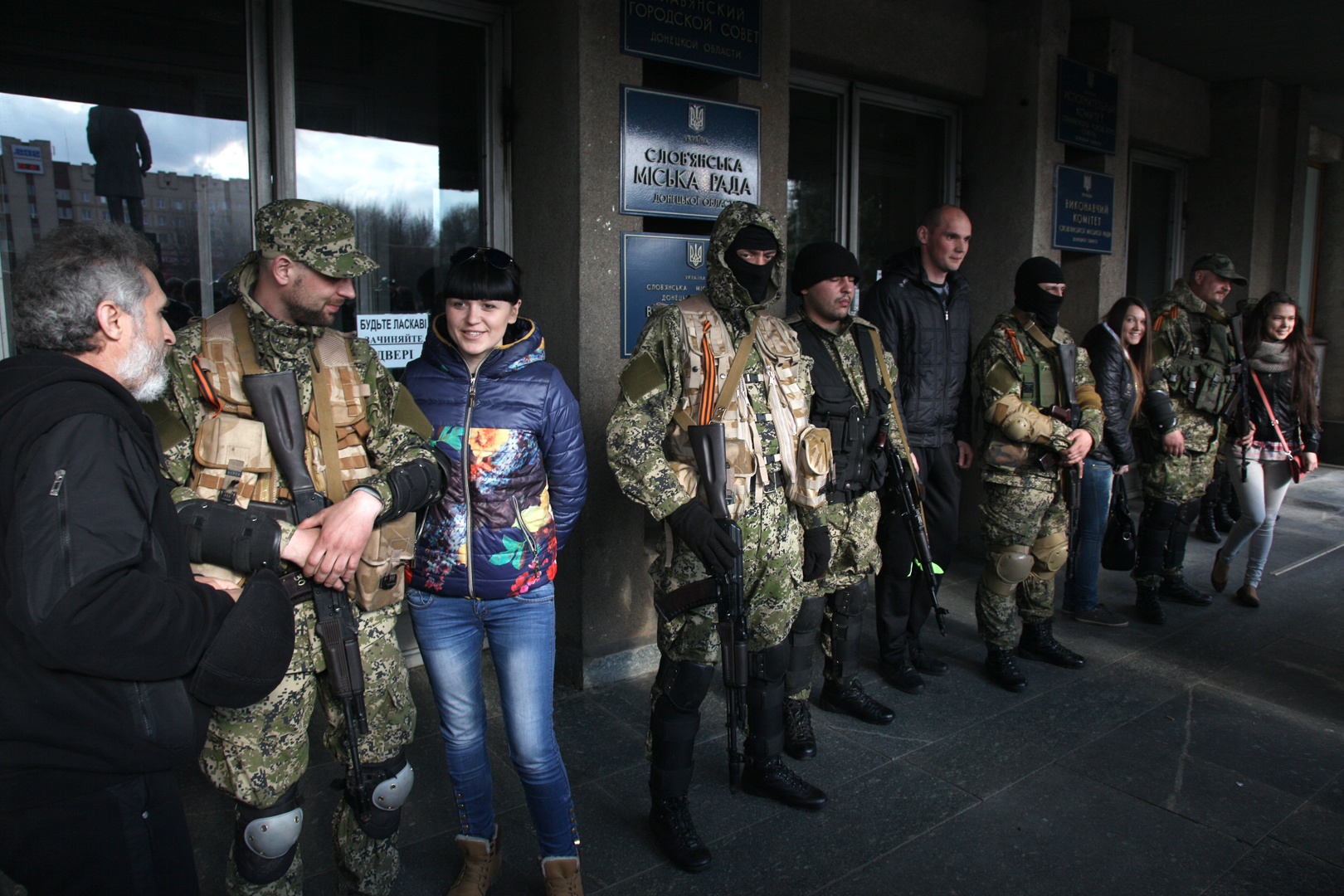
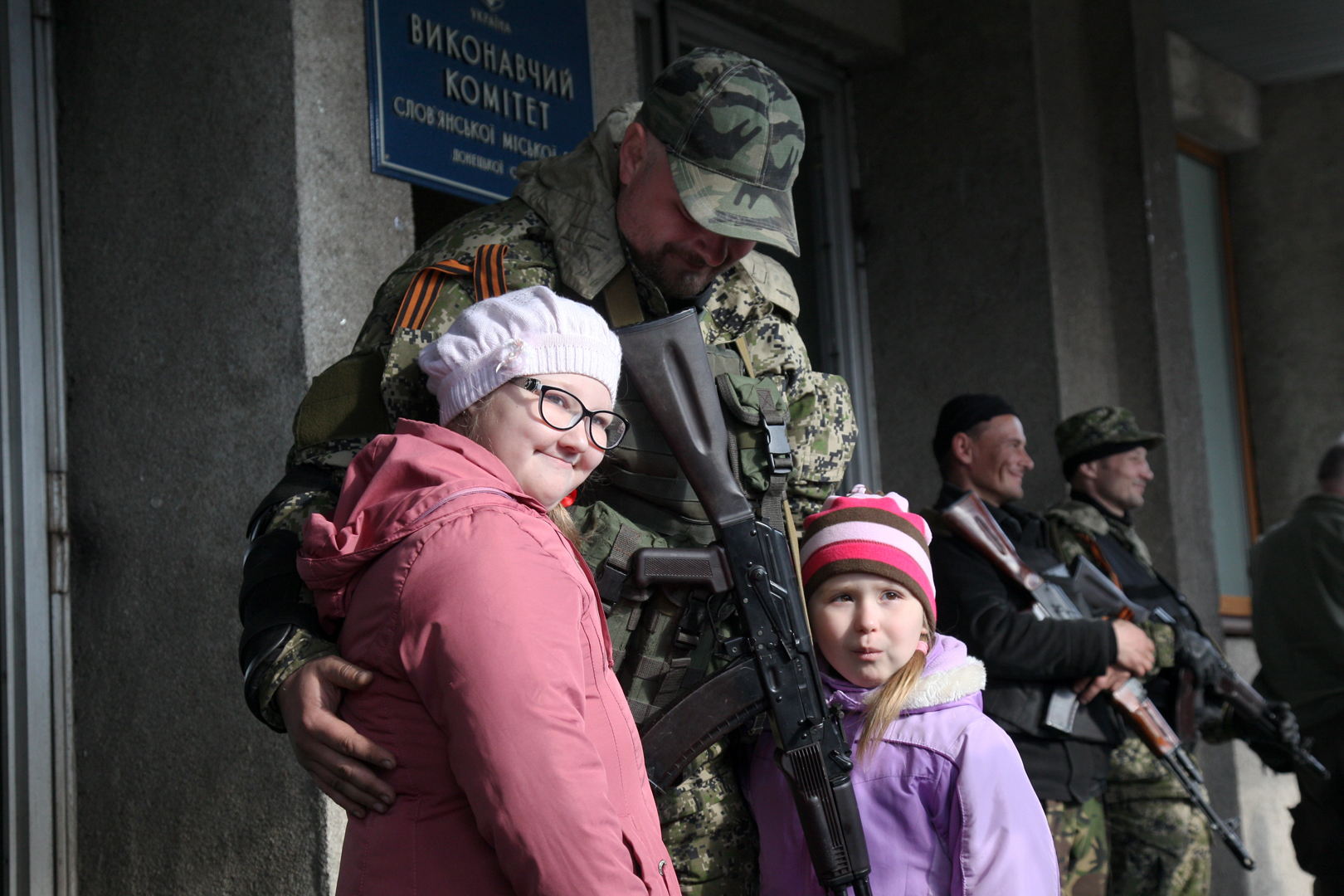
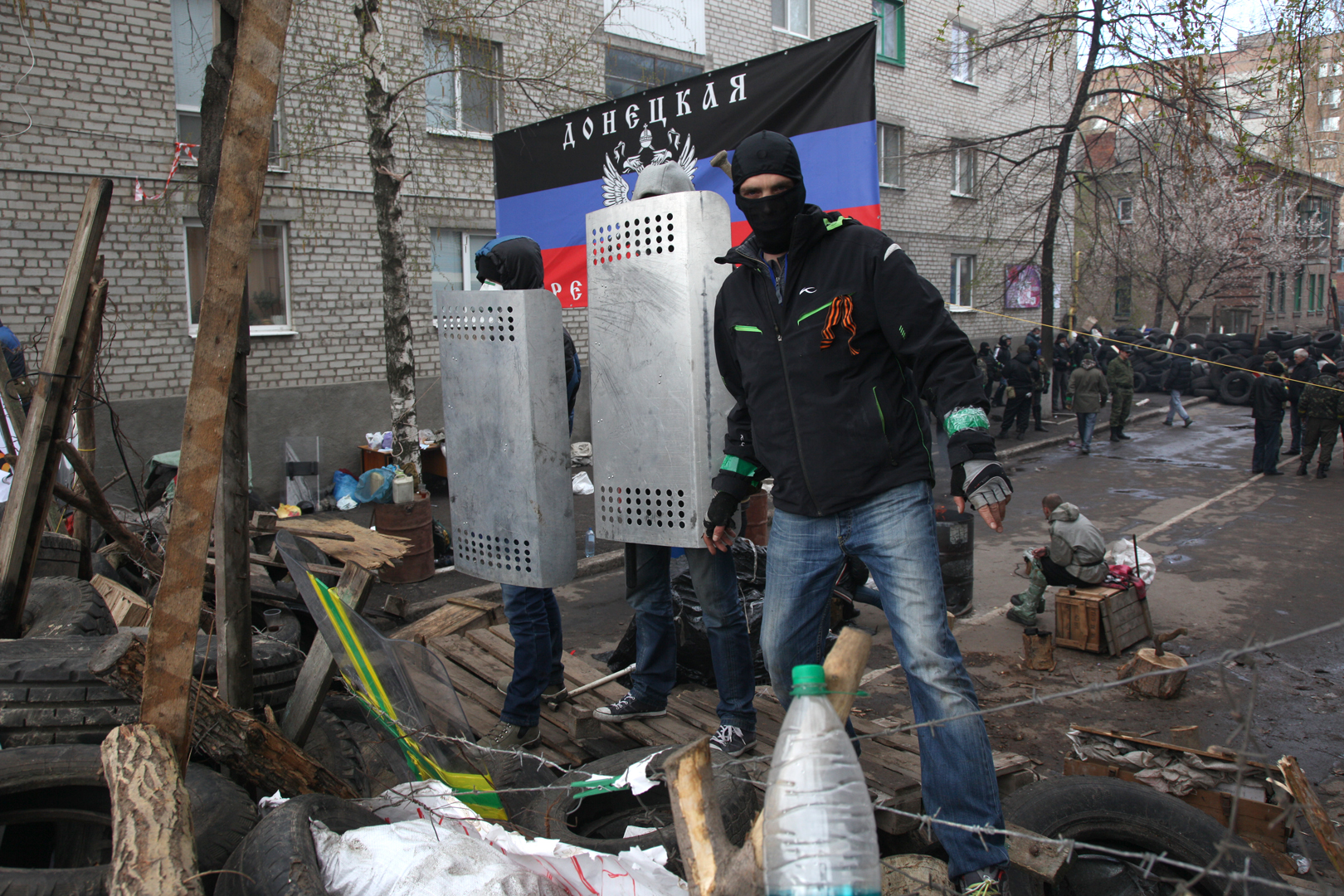
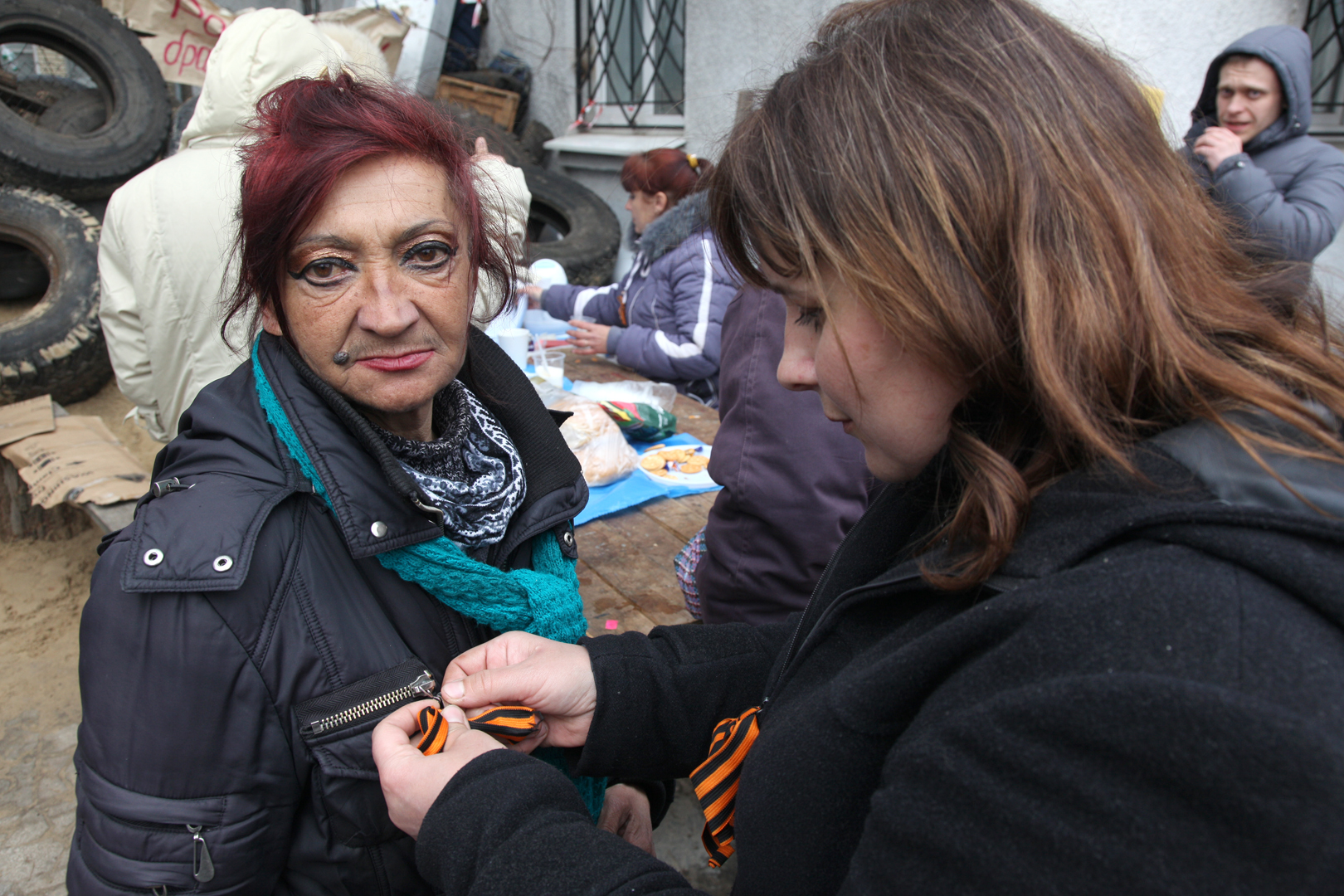
I remember that our An-26 reconnaissance plane flew over the city hall of Slavyansk. The flag of Russia and the flag of the Donetsk region were then raised on the building, but later the Russian flag was removed - apparently, they decided not to annoy.
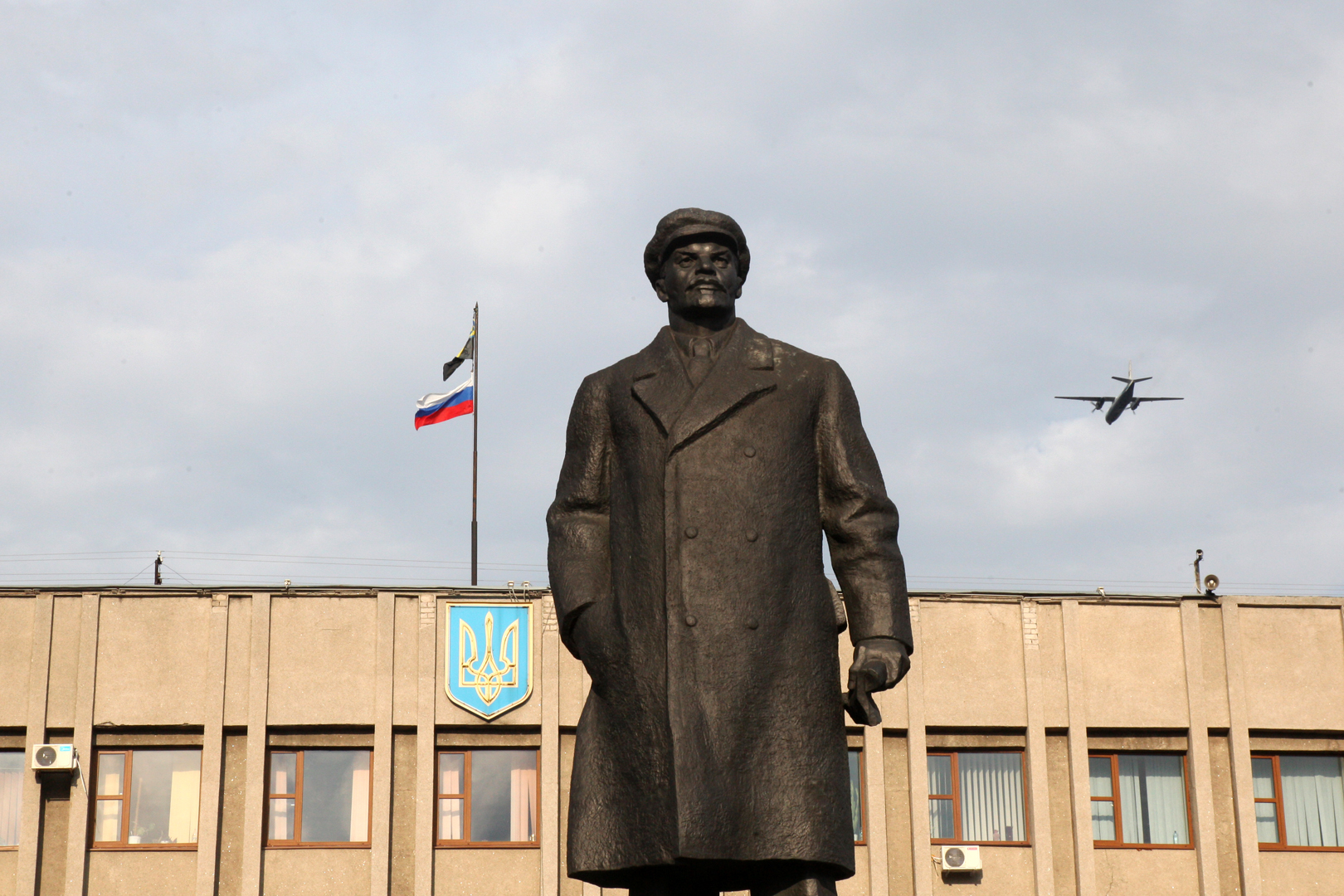
I recorded all this, and now we can say openly that it all started with a small sabotage group that entered Donetsk region on April 12, and then spun off.
On April 14, it was announced the start of the Anti-Terrorist Operation, and on the 15th we went to Kharkiv region to search for Ukrainian troops with a few more cameras. At the checkpoint at the entrance to Barvinkove, I saw the Ukrainian flag for the first time in many days, and then under Izyum — new BTRs with soldiers and Ukrainian flags. After all the Russian darkness that raged in the Donetsk region, emotions were overwhelming.
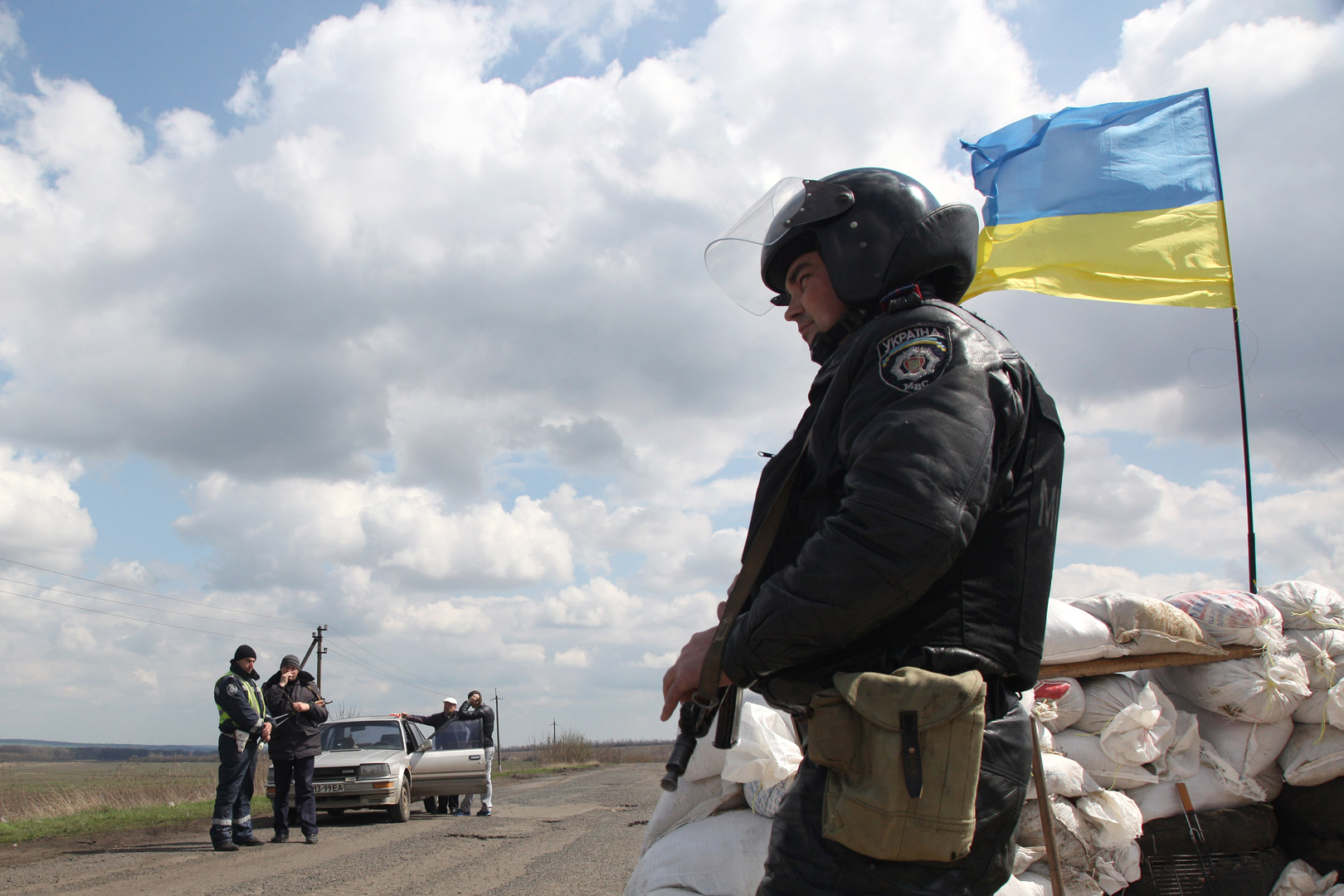
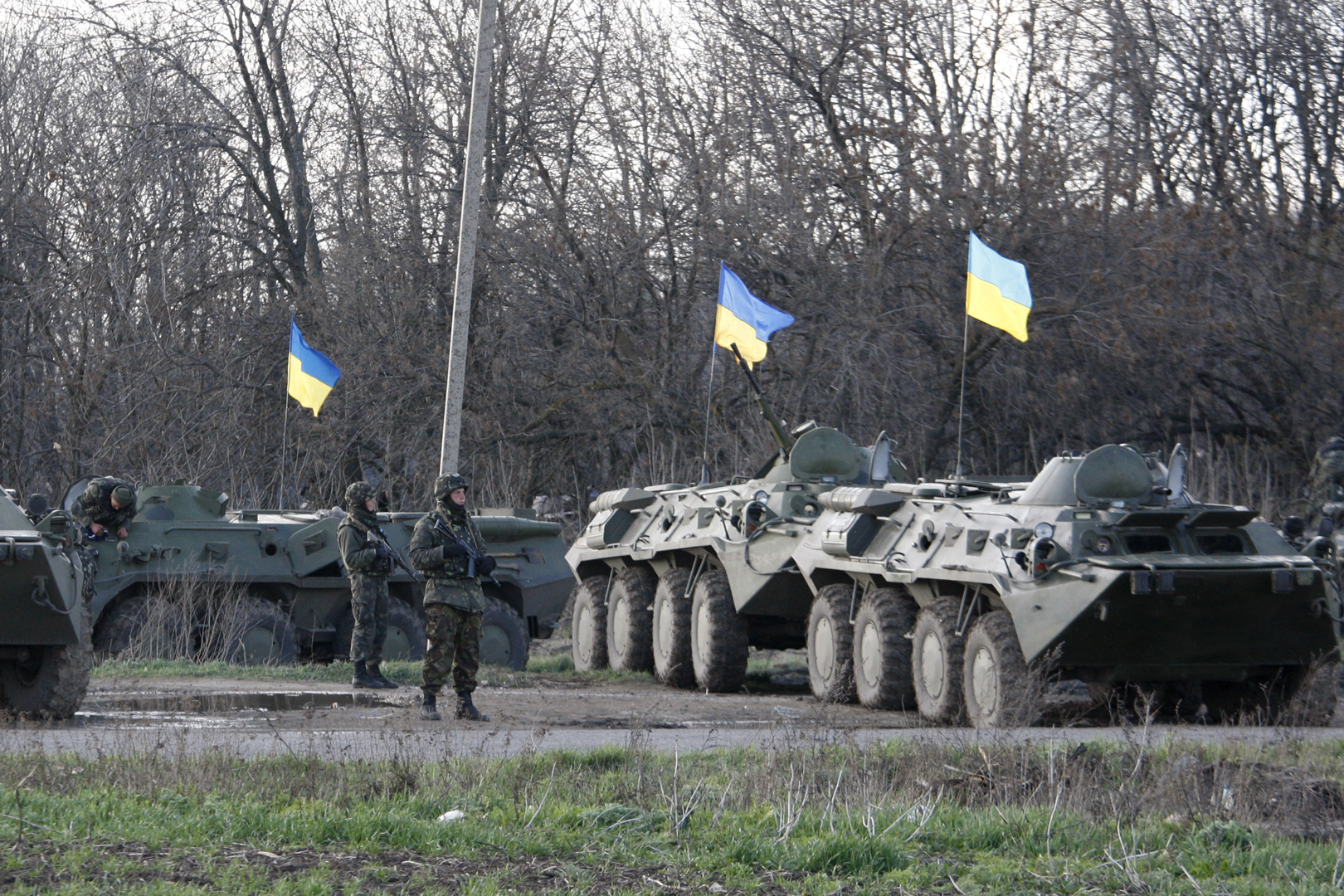
— I looked through your archive and want to clarify: one of the photos shows how the military in oak camouflage are riding on tanks. Somewhere on armored vehicles Ukrainian flags, and somewhere - St. George's ribbons. So who was it? Ukrainian military or Russian?
— These were the events of April 16. The spring of 2014 then developed stunningly. Every day something happened that was hard to believe: in your country — shooting, armed people in the streets... I remember, in Slavyansk on April 12, a car was shot near the hotel “Ukraine” — people were killed. I don't know who it was — special agents or SBU officers — but they were just killed on the street. Then random passers-by took their documents out of the car. One young man stood on the opposite side of the street — a bullet hit his jaw, he went to the hospital.
What you are talking about — BMD, “Noni” (self-propelled artillery installation 2S9 “Nona-S” — N.B. ed.), military — it was April 16. Then our paratroopers from the 25th Brigade went to Kramatorsk to block the airfield. This is a strategic object, and it had to be held so that, conditionally speaking, Russia could not “fly”. Then a serious operation was already being prepared, the paratroopers went in several columns. One of them was stopped just near the railway station of Kramatorsk. Local people came there — women, children, began to surround armored vehicles, shouting that they were peaceful, that you could not shoot. And then they arrived “at the very end” - and the equipment was simply lost.
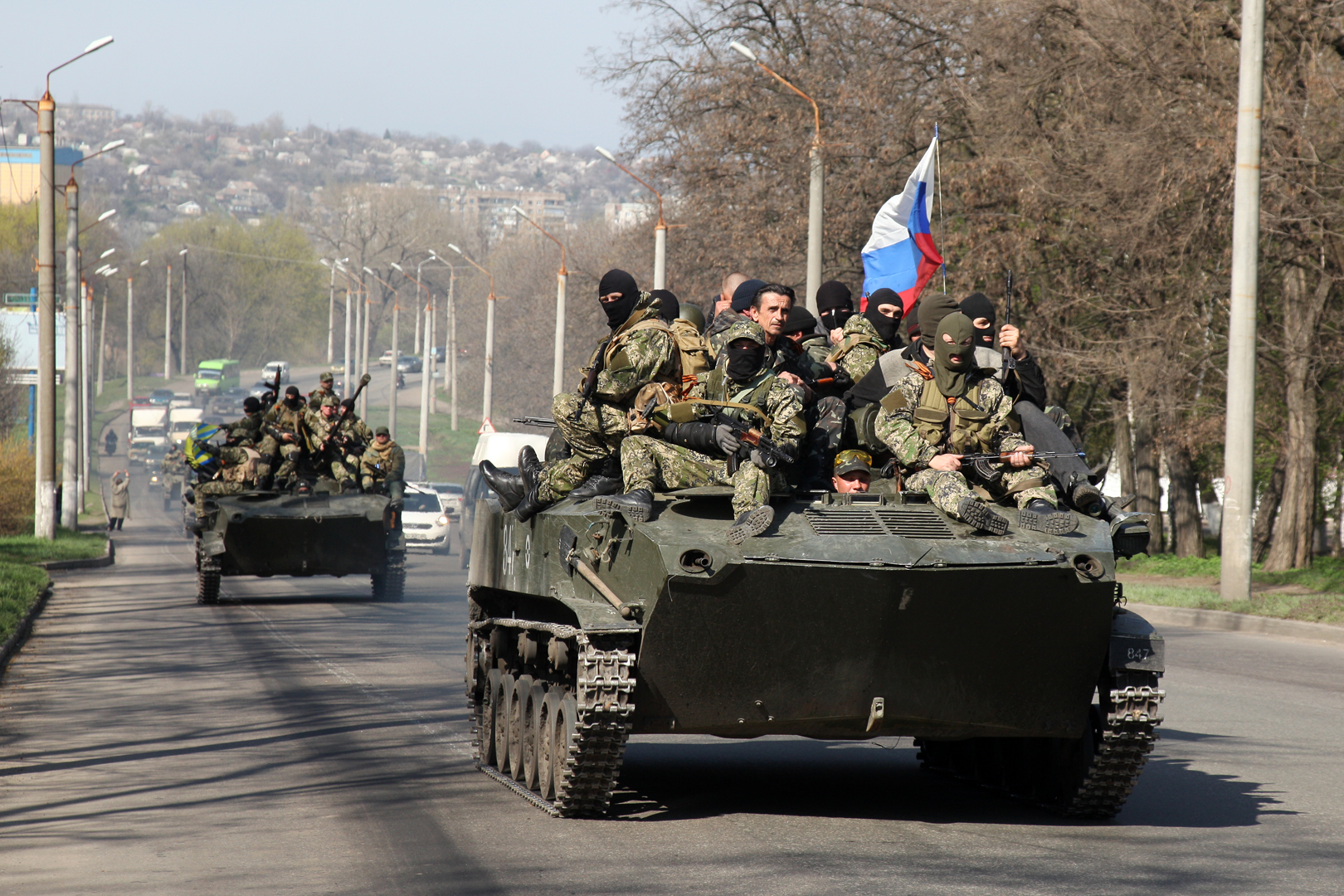
This column that you see in the photo — the one that goes down Kramatorska Street in Slavyansk with Russian flags — that's it. It had both Ukrainian soldiers and Russian special forces, possibly volunteers. Then on this technique they went to Slavyansk. I heard that then the Ukrainian soldiers were released.
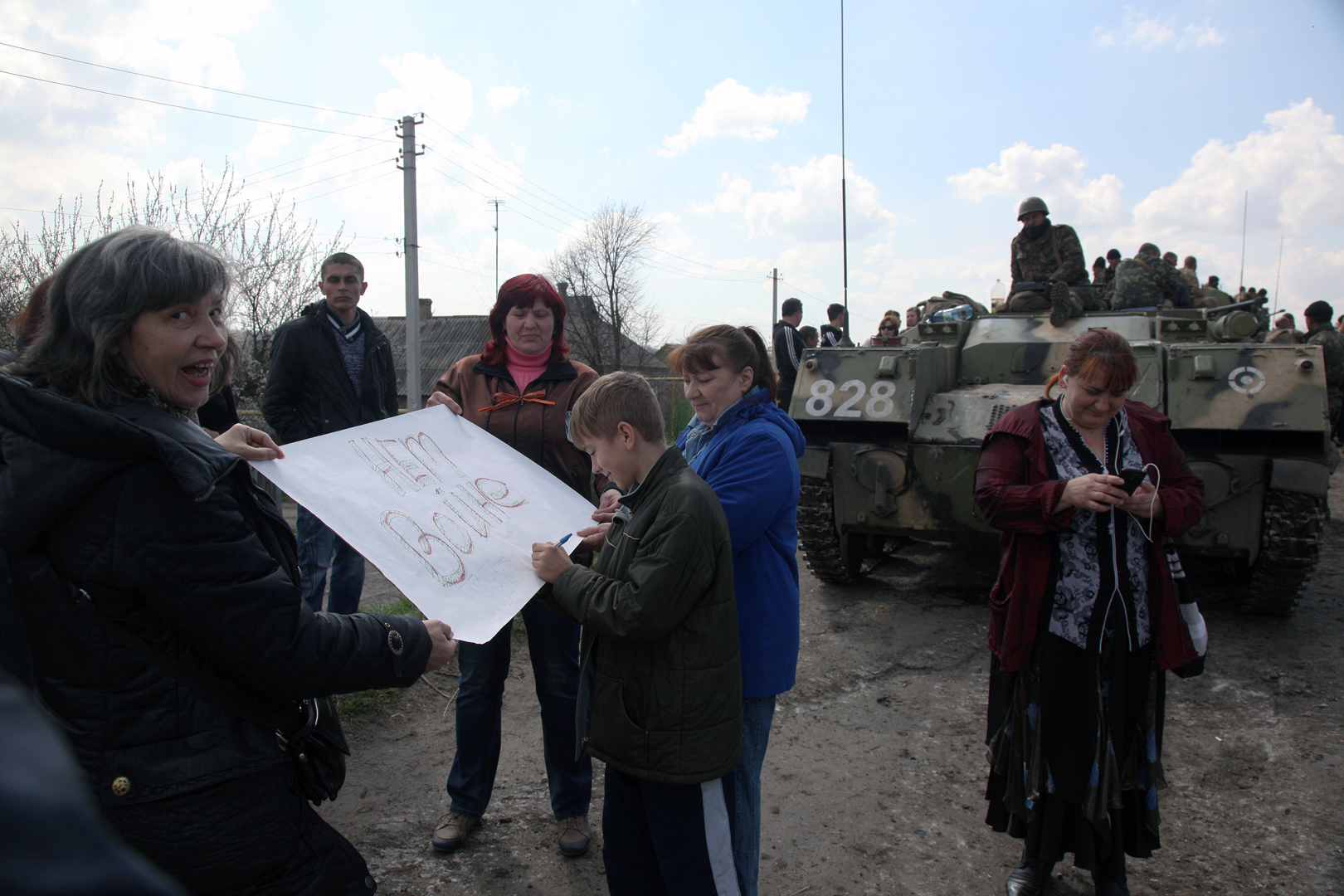
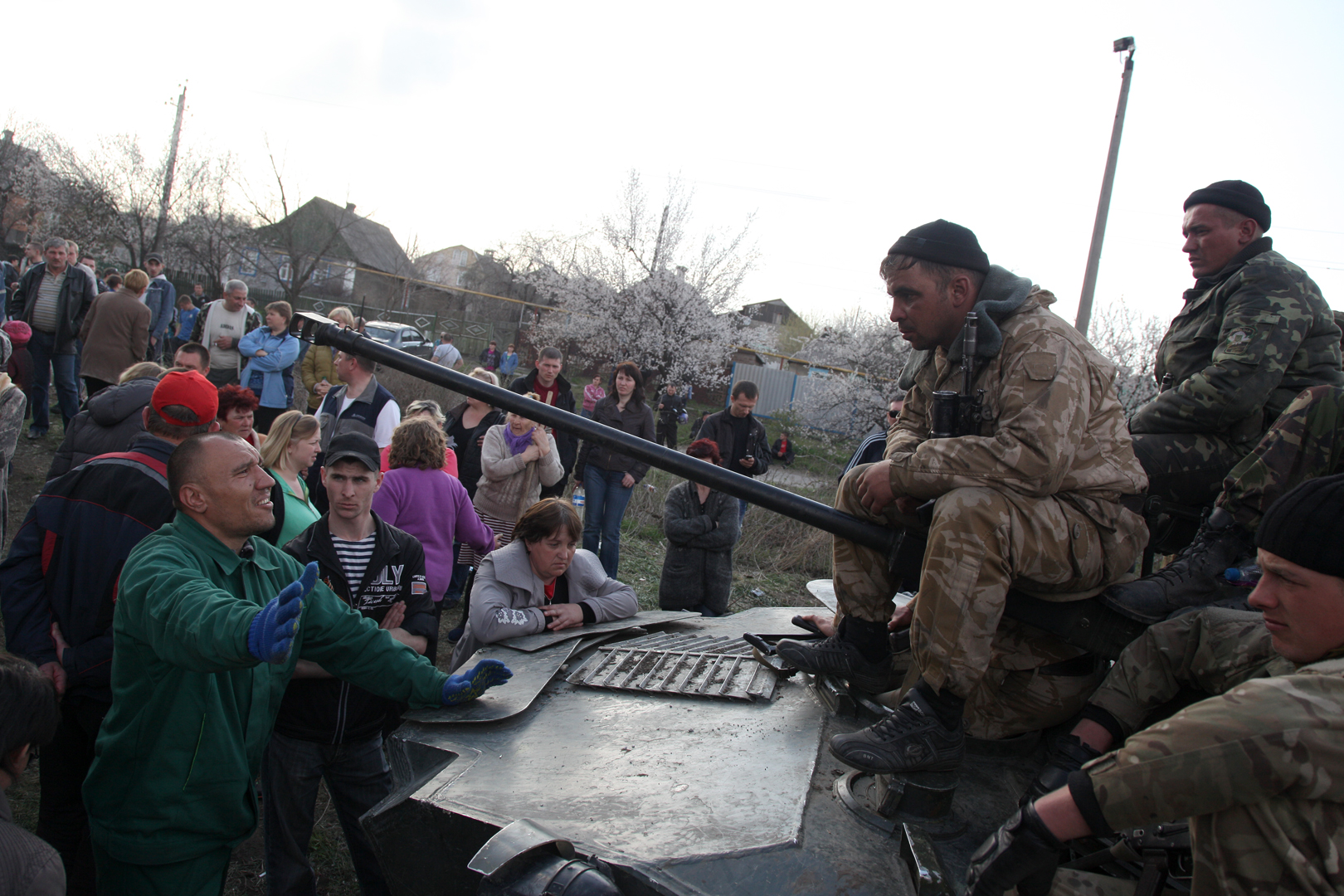
And I stayed in Kramatorsk and went to the station “Pcholkino” - it is also within the city. There they blocked another column of our paratroopers. They were kept all day. Around again there were “civilians” — women, children, but also people who clearly belonged to the special services, and certainly not Ukrainian ones. They just sat on the BMD and “processed” the soldiers, told: “move on the side of the people.” The soldiers were visibly depressed. It was clear that they were working very professionally. But then, fortunately, neither the equipment nor the weapons could be taken away by the Russian militants.
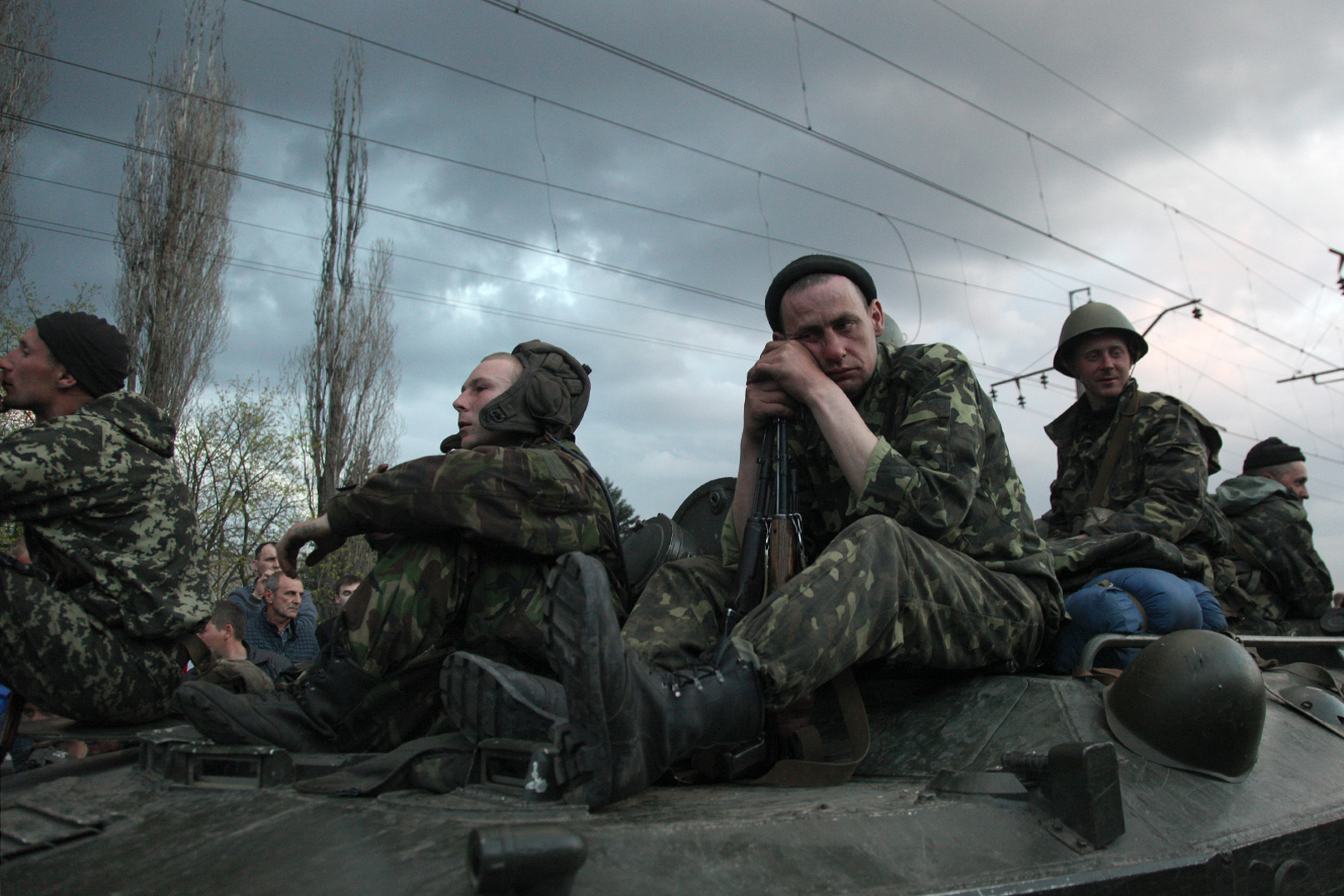
In the evening, the Russians arrived there at the very end. Then came another military man — the commander of the Highly Mobile Landing Forces of the Armed Forces of Ukraine, Colonel Oleksandr Shvets. He negotiated with the militants.
It was agreed that the paratroopers would release the shutters from the automatic rifles, and on each car they would leave one RKK - a Kalashnikov hand machine gun. After that, the column was released.
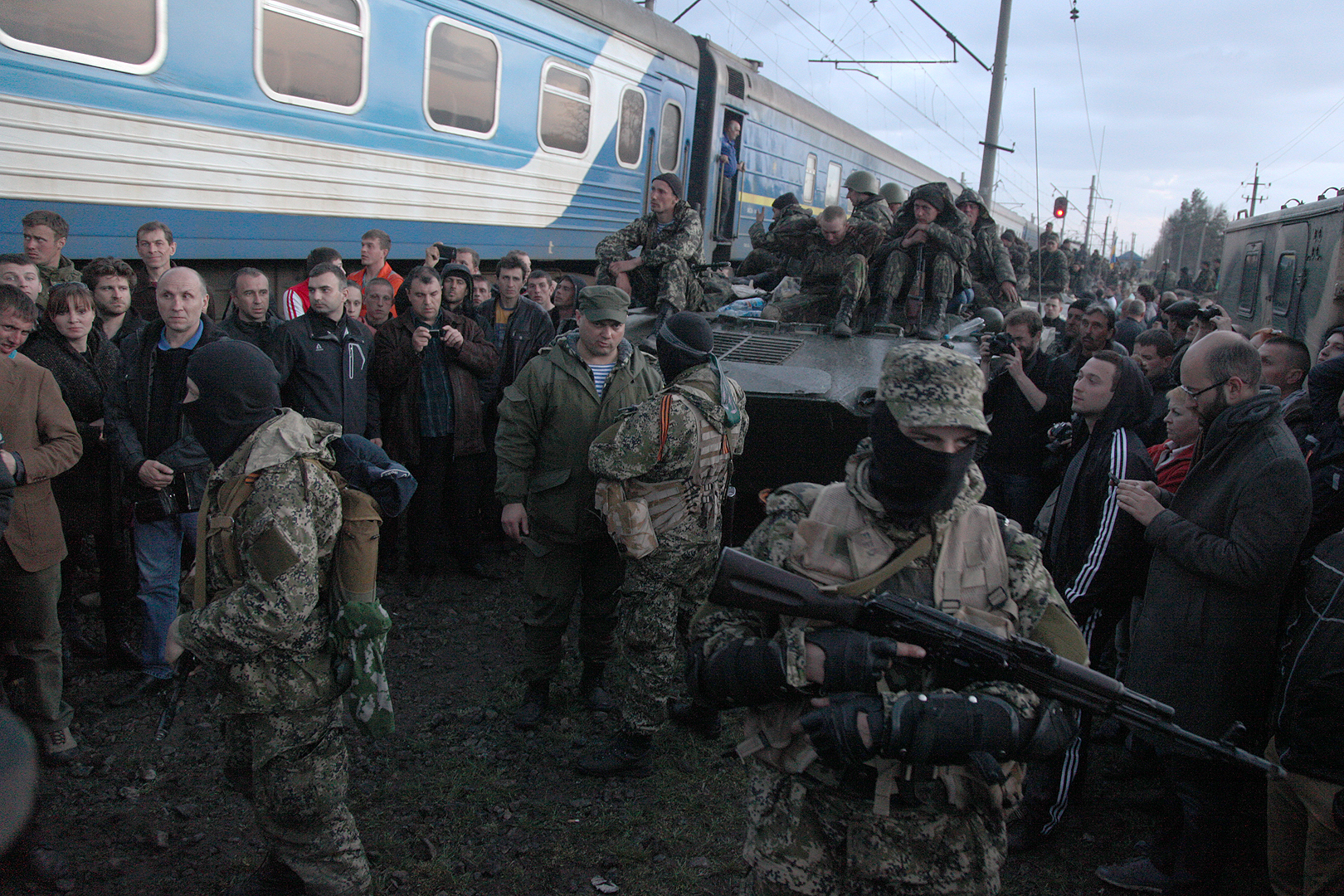
Meanwhile, another column of Ukrainian troops took a different route — and broke through to the airfield. There they were anchored, although they were blocked. The defense was then led by Serhiy Kryvonos. The Ukrainian military held the position for a long time, in extremely difficult conditions. We arrived at the very perimeter of the airport. The paratroopers asked us - bring at least some socks, water, something elementary - it was impossible to wash things and change clothes, but the guys held on. They had a task, and they accomplished it.
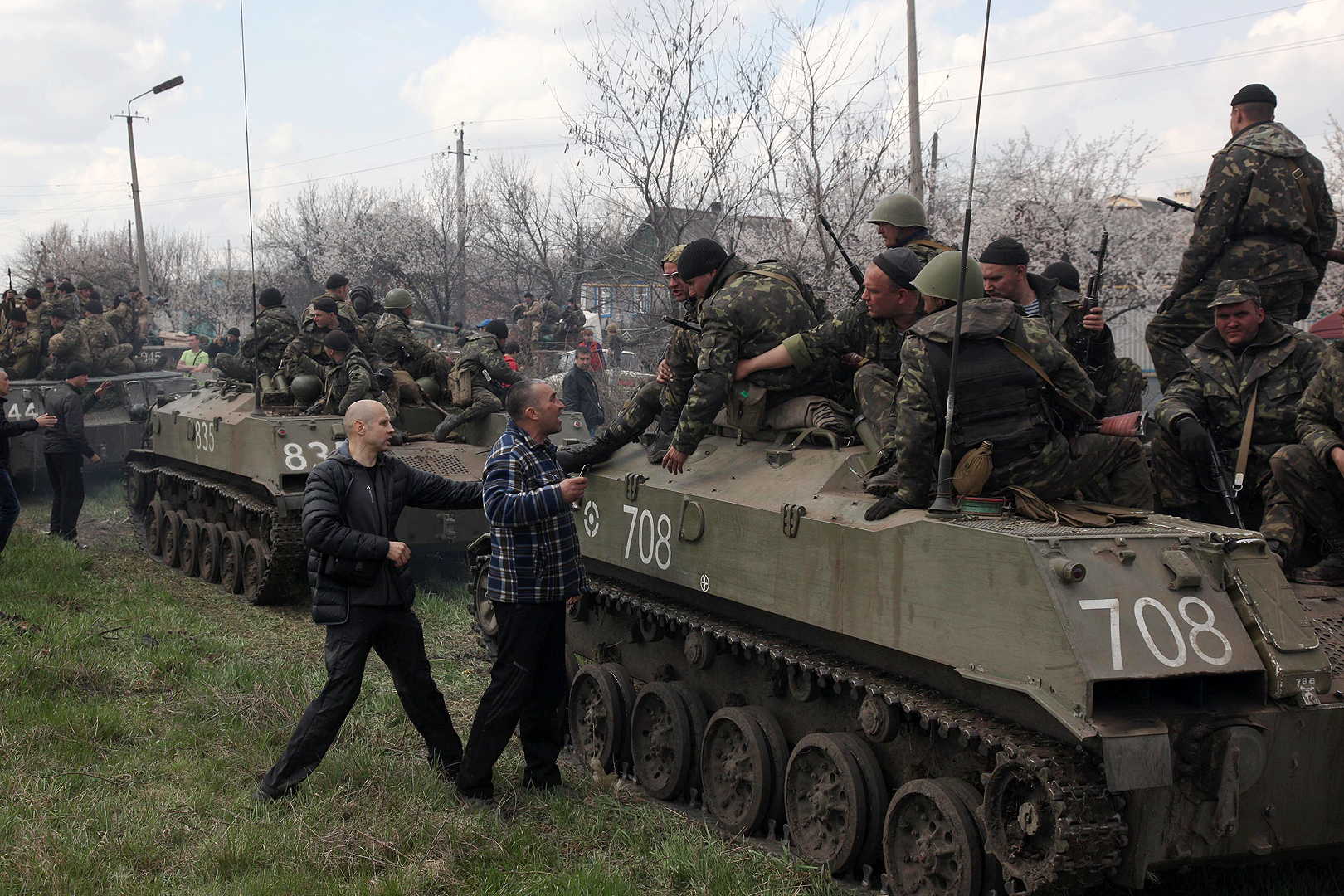
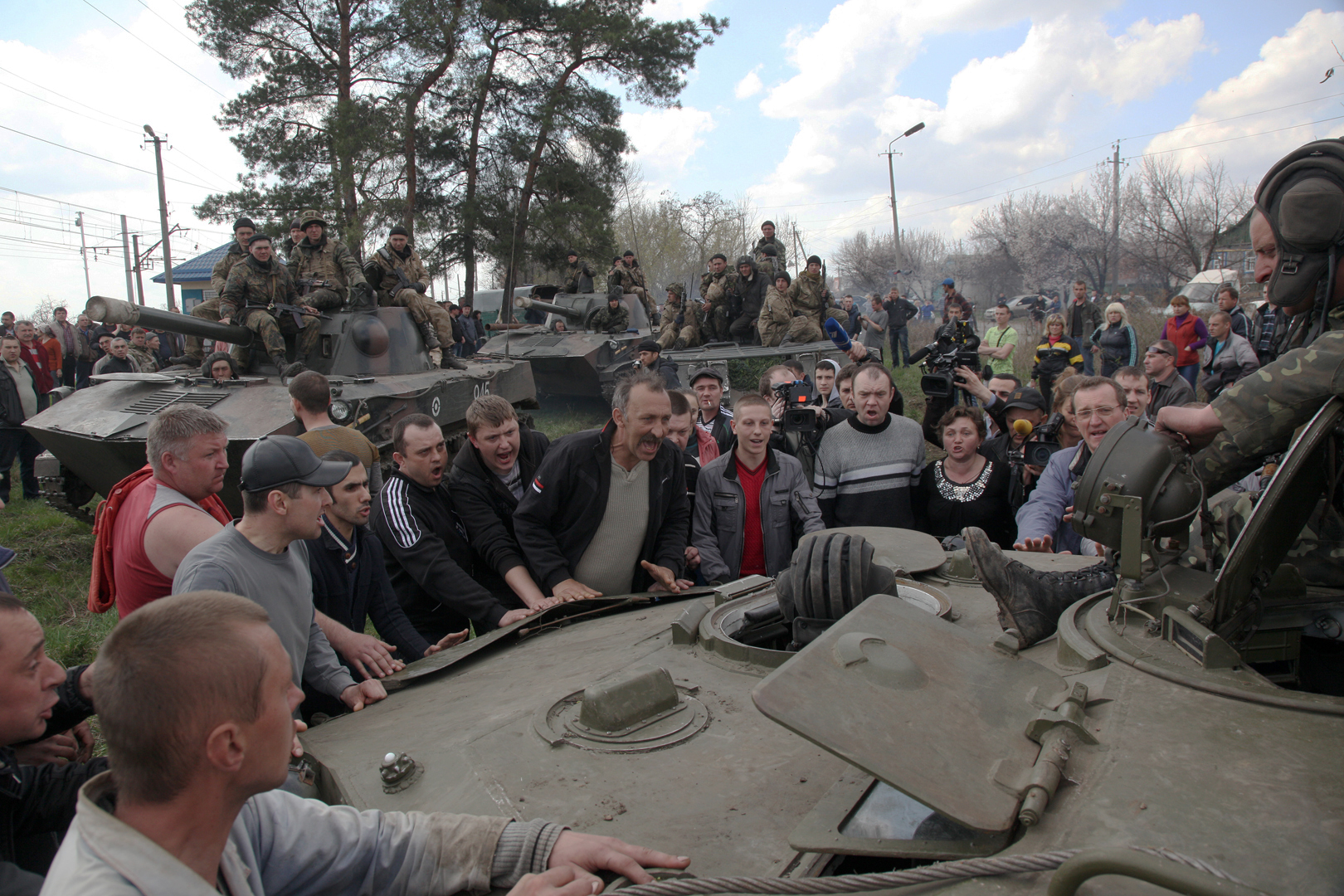
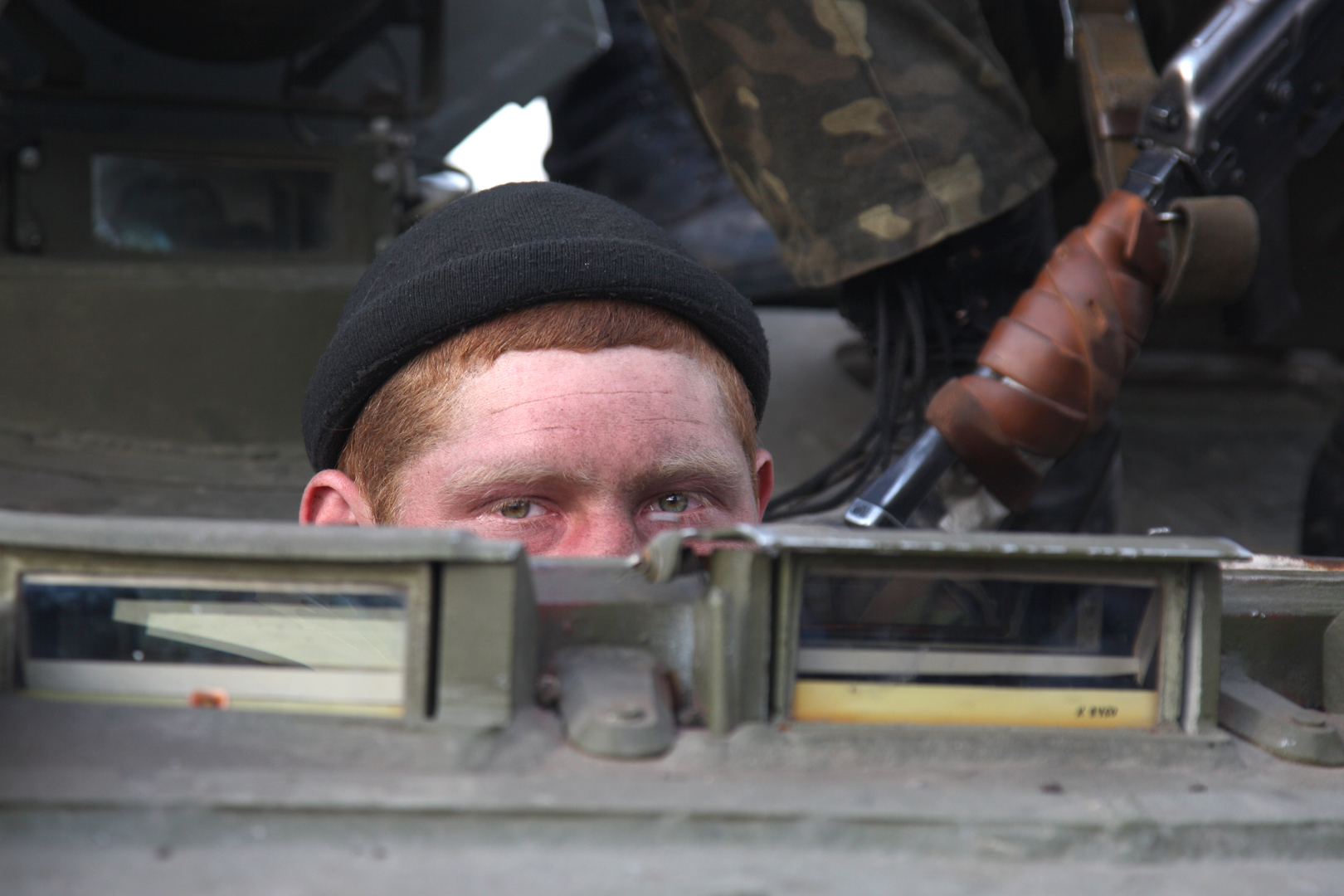
But on the “Pcholkino” on the same day they tried to provoke a fight, but, fortunately, it worked out. Ours were able to go out in the evening. Later I communicated with the fighters of the 25th Brigade. They saw my photos and recognized my comrades: “This one died, and this one is still fighting.” This was long before a full-scale war, but the war had already begun.
— You have photos from the funeral of the deputy of the Gorlovsk City Council from the Batkivshchyna party Volodymyr Rybak. He was kidnapped. Can you tell us more about him, the circumstances of his death and burial? Was he really pro-Ukrainian?
— Yes, Vladimir Rybak was pro-Ukrainian. In the city, one of the administrative buildings hung the flag of Russia or “DPR”, and he wanted to replace it with a Ukrainian one. He was brutally twisted, kidnapped and taken to Girkin just before the eyes of the people. In the same number, a student disappeared — if I am not mistaken, his name was Yuriy Povpravka, and the third person — I did not remember the name at first, but now I remember: Yuriy Dyakovsky. These guys did not fully understand who they were dealing with, did not realize how dangerous it was. And they were simply rolled up — their stomachs cut, thrown alive into the State Gate and drowned. These so-called “liberators” were engaged in such methods. I found out that Vladimir Rybak's funeral was going to take place, I came there and filmed everything for the agency. That's how I actually crossed paths with his story — through the funeral.
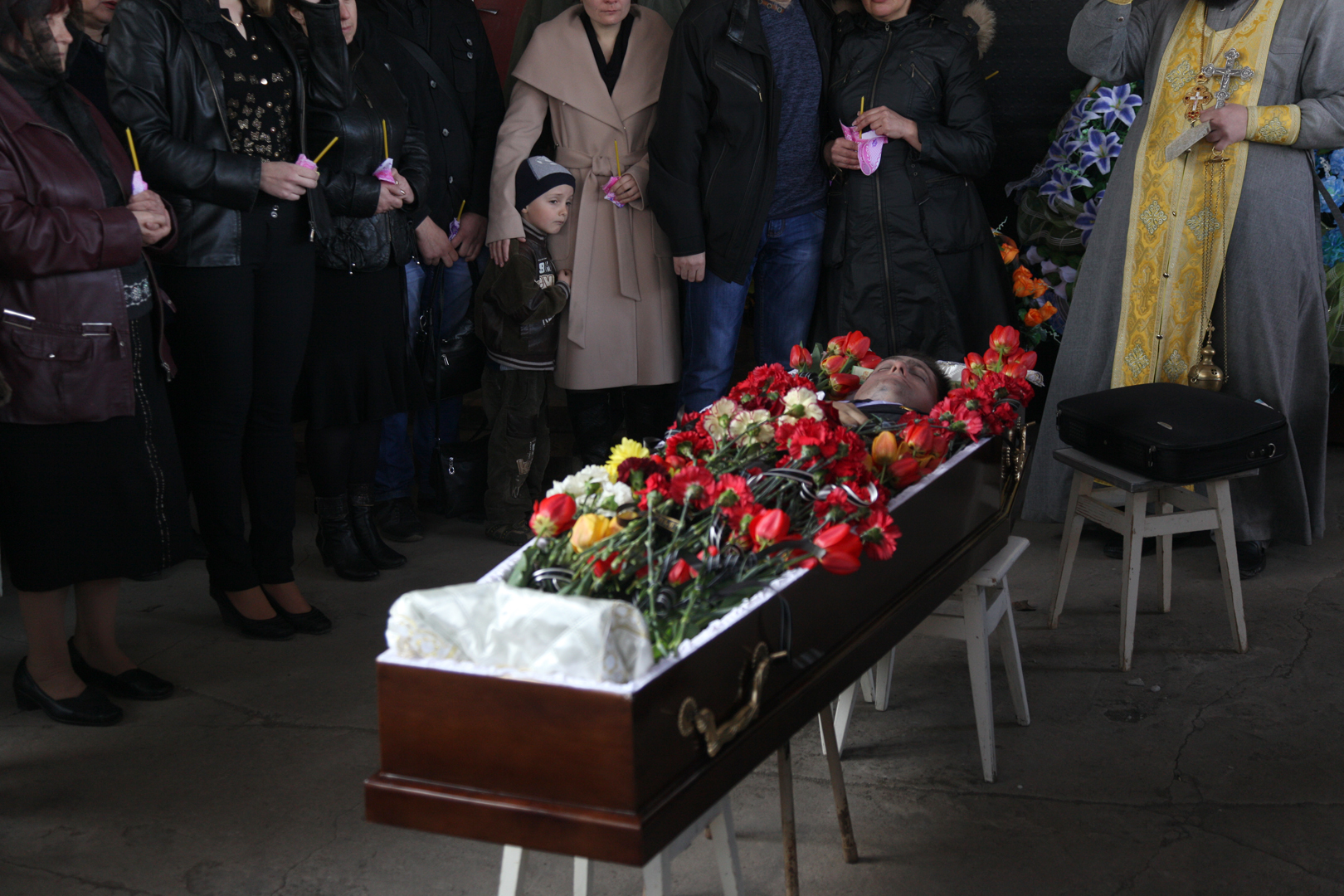
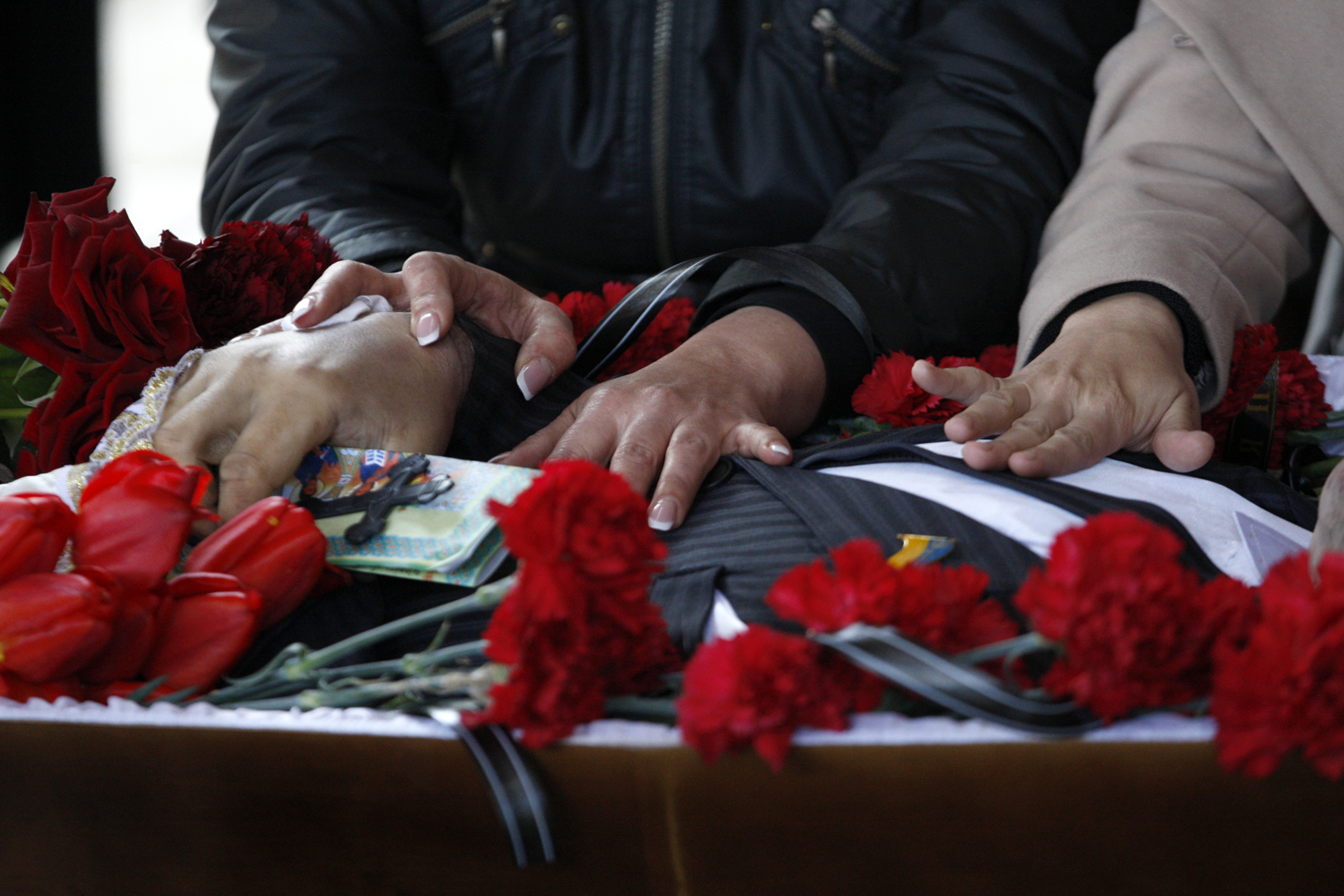
— Many people came to the funeral of Vladimir Rybak? Were people afraid to leave?
— You know, there were very few people, in fact only relatives. I can't say for sure if people were afraid to come, but there was no crowd. Perhaps the reason is that the resonance around his death was terrible, even unhealthy. Everyone knew exactly how he died, and it was shocking. We were not at all prepared for such events in our country. All the sleaze, the outspoken addicts, took the vending machines, went to the checkpoints and began to set their “rules”. Many things then looked absolutely wild.
— When you filmed pro-Ukrainian rallies, what was felt in the atmosphere? What did it look like when the war was going on?
— There were such people — smiling, sincere, with wreaths, with flags... Now you look at these frames — and your heart contracts, because even then it was clear that the script was written and implemented.
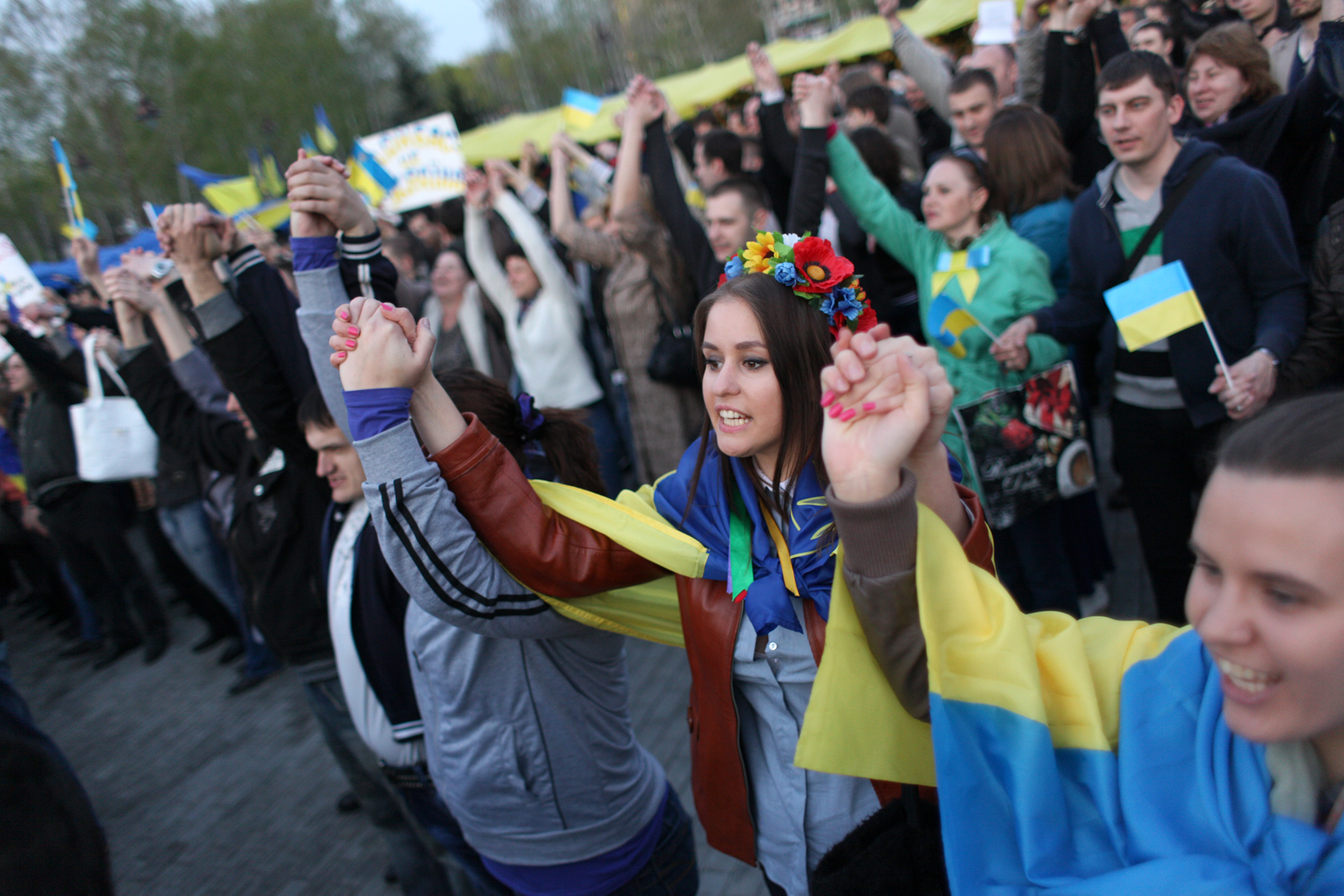
Our authorities tried to respond to the threat in the spirit of peaceful initiatives — rallies, demonstrations that there are pro-Ukrainian forces in Donbas. But it didn't work anymore. A completely different mechanism was launched - they began to break Ukraine through the knee. I am not sure that it was worth doing this then, because on April 16 there was already a blockade of Ukrainian paratroopers in Kramatorsk. And the next day, April 17, a pro-Ukrainian rally was held in Donetsk. There the same sincere people came out with flags, girls in wreaths. It was seen that there are a lot of pro-Ukrainian people in Donetsk. They went out, sang a hymn, filmed everything... But at the same time, the Russians tortured Rybak. I don't remember exactly when he died, but I filmed his funeral after all these rallies. Ukrainian politicians spoke at that rally. They thought it was just a rally activity, but in fact it was already a hybrid war. And from that side they were absolutely ready to kill.
Subsequently, I went to Novoazovsk — there were rumors that they were supposed to bring Yanukovych there in order to “return to power”, but it turned out to be fake. And so I got to Mariupol. There was also a pro-Ukrainian rally — the girls sang the anthem of Ukraine near the drama theater. It was also the spring of 2014.
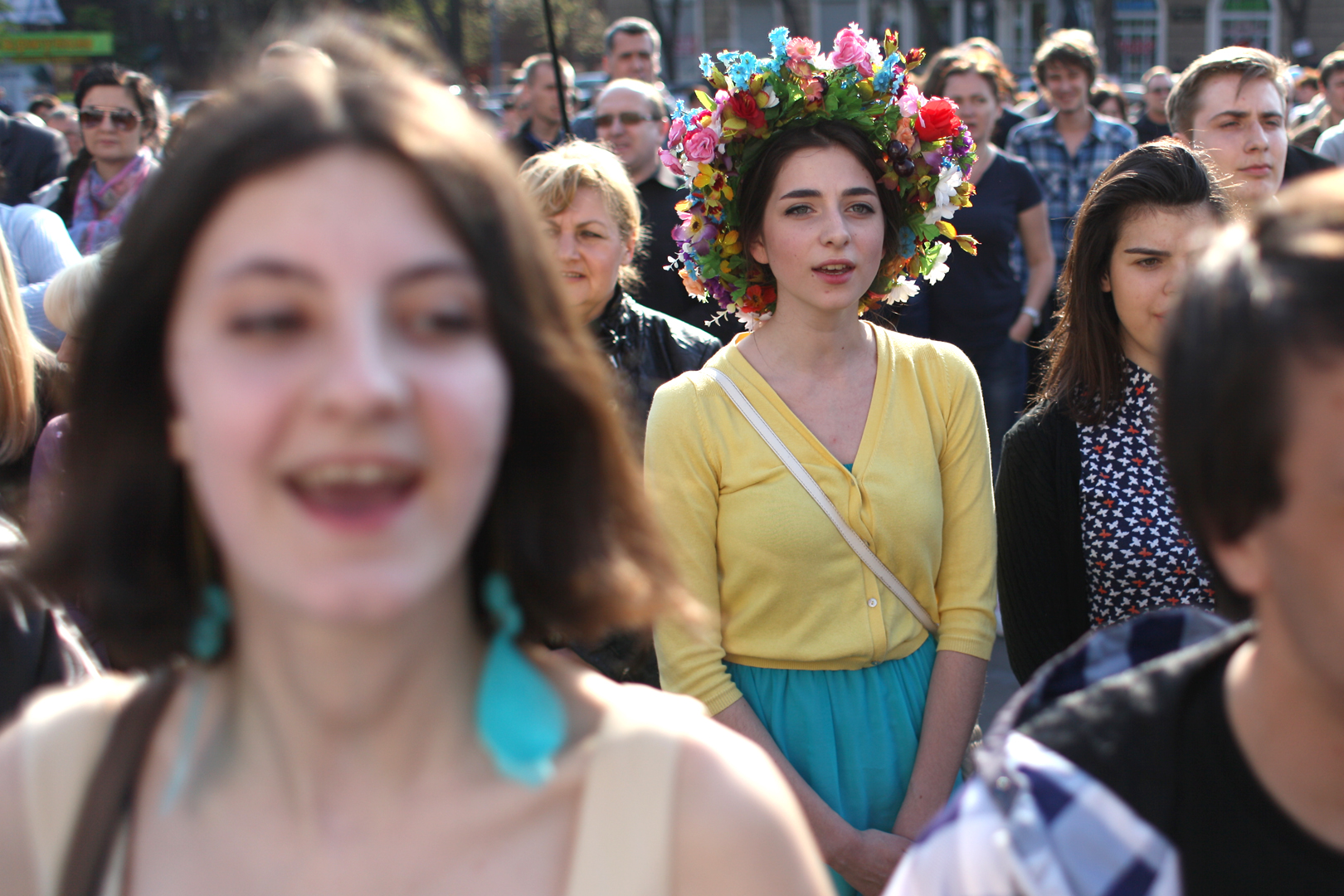
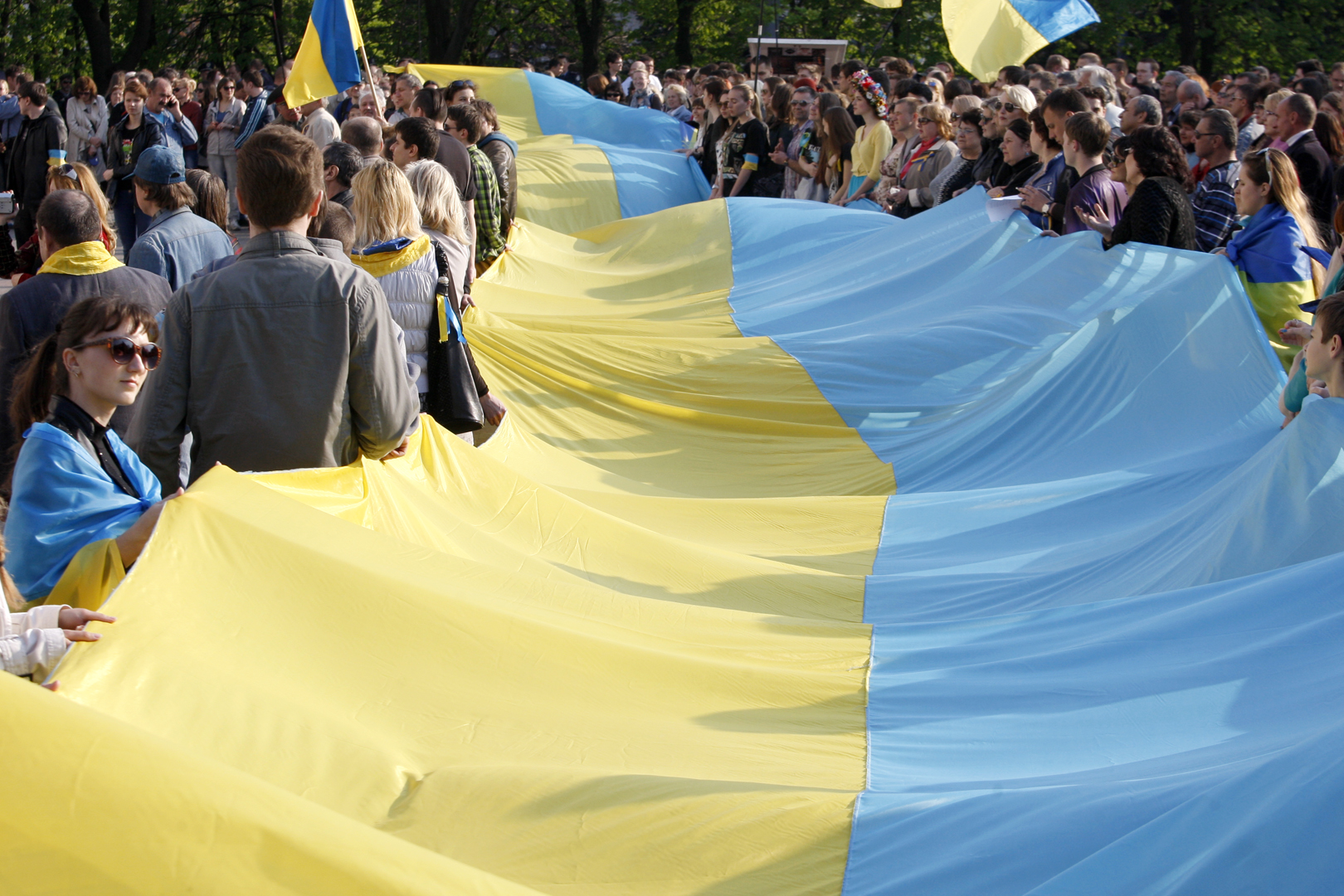
— God, how hard it is to listen...
— Yes, it is, this is our story. After Mariupol, I went again to Slavyansk and Donetsk. My last day in Donbas was April 27, 2014, it was a Sunday. I remember well that then in Donetsk there was a large pro-Russian rally. And here's what struck me: every weekend the hotel I stayed in was filled with visitors. These people did not speak in the same way as the inhabitants of Donbas. By accent, by language — you could hear that they were “not from here”. Of course, I did not ask them for passports, but maybe they were from Rostov. And so it was every week. Buses with “new people” appeared for each rally action, it was systematic. On April 27, the rally was really big, Pushilin also performed there.
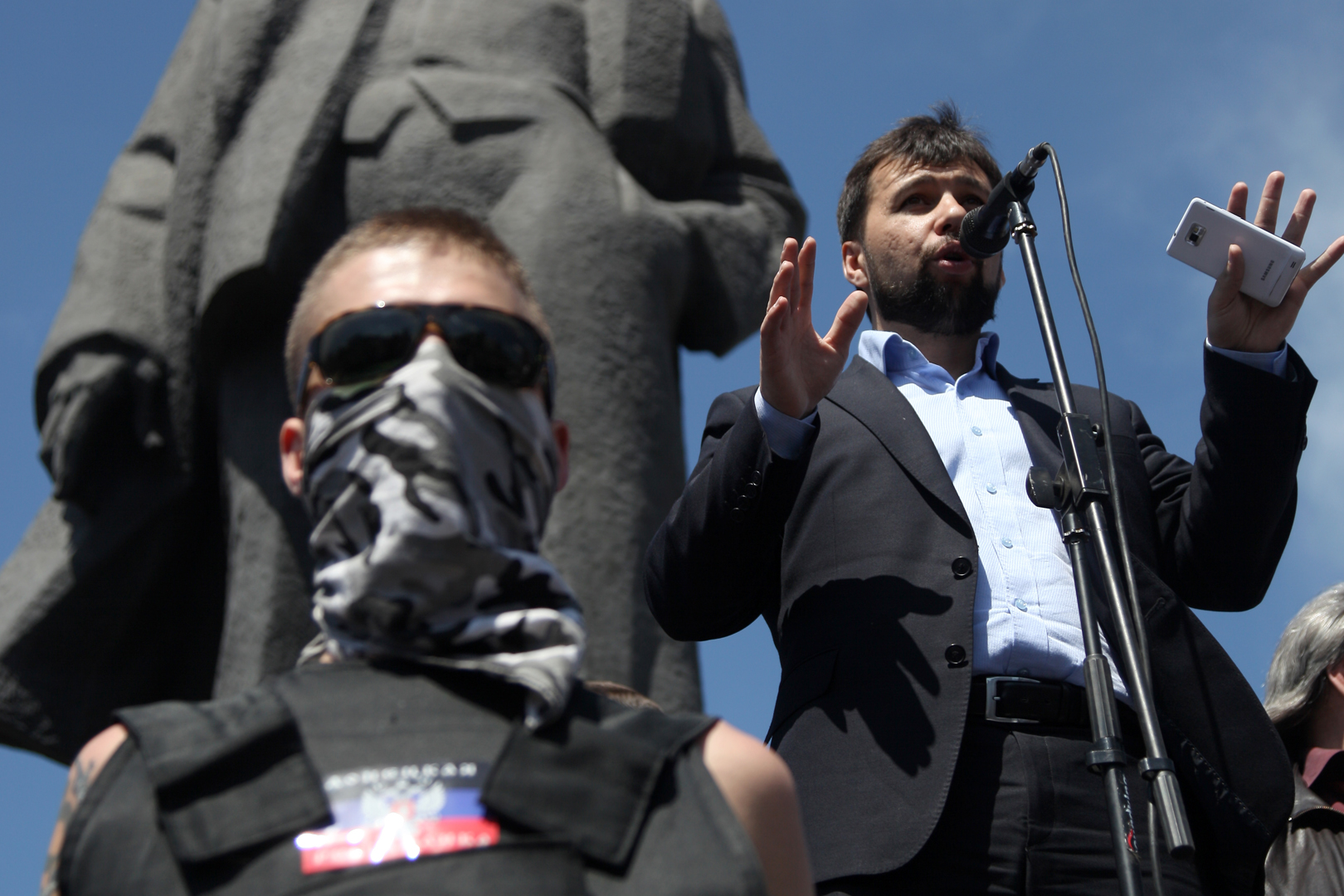
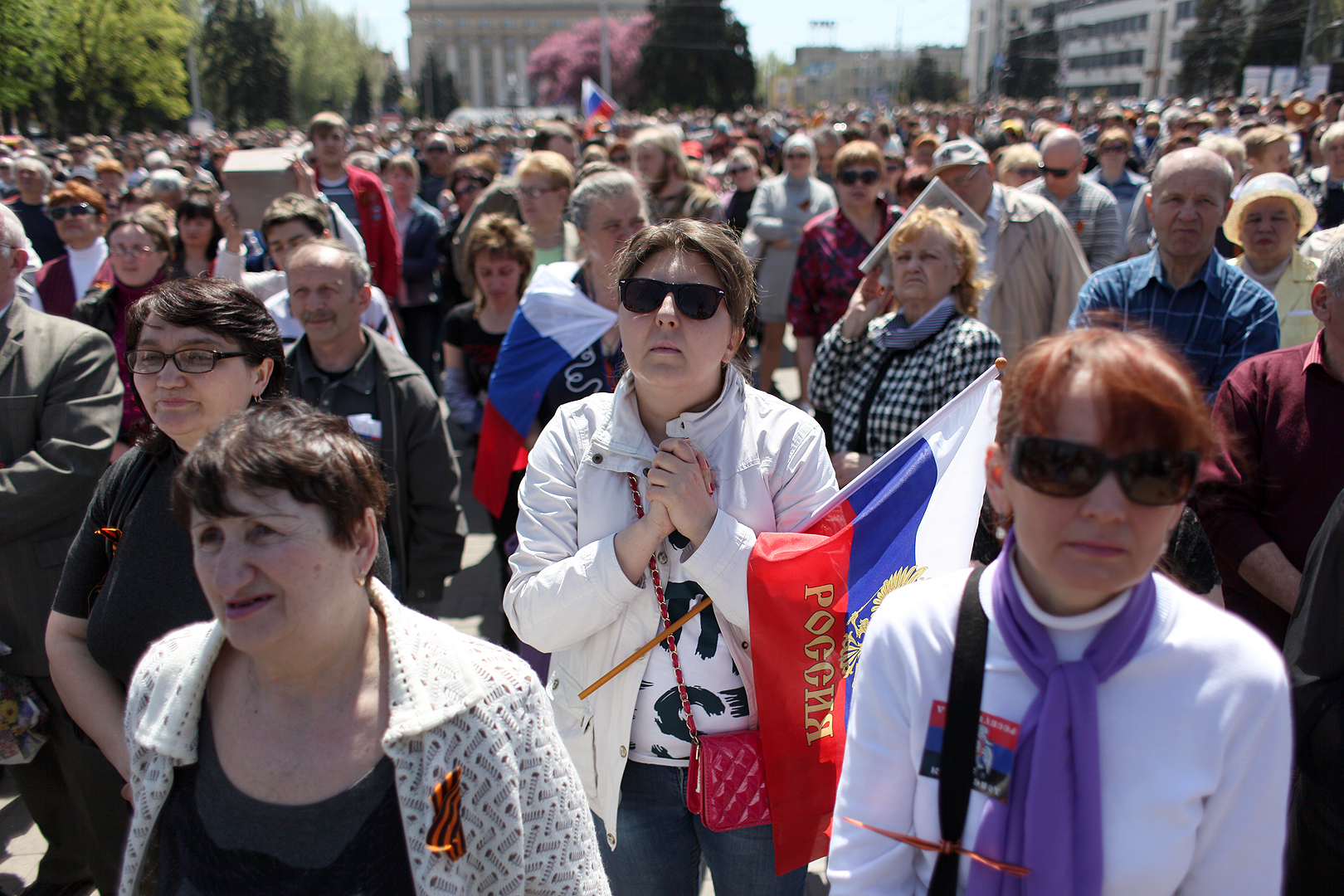
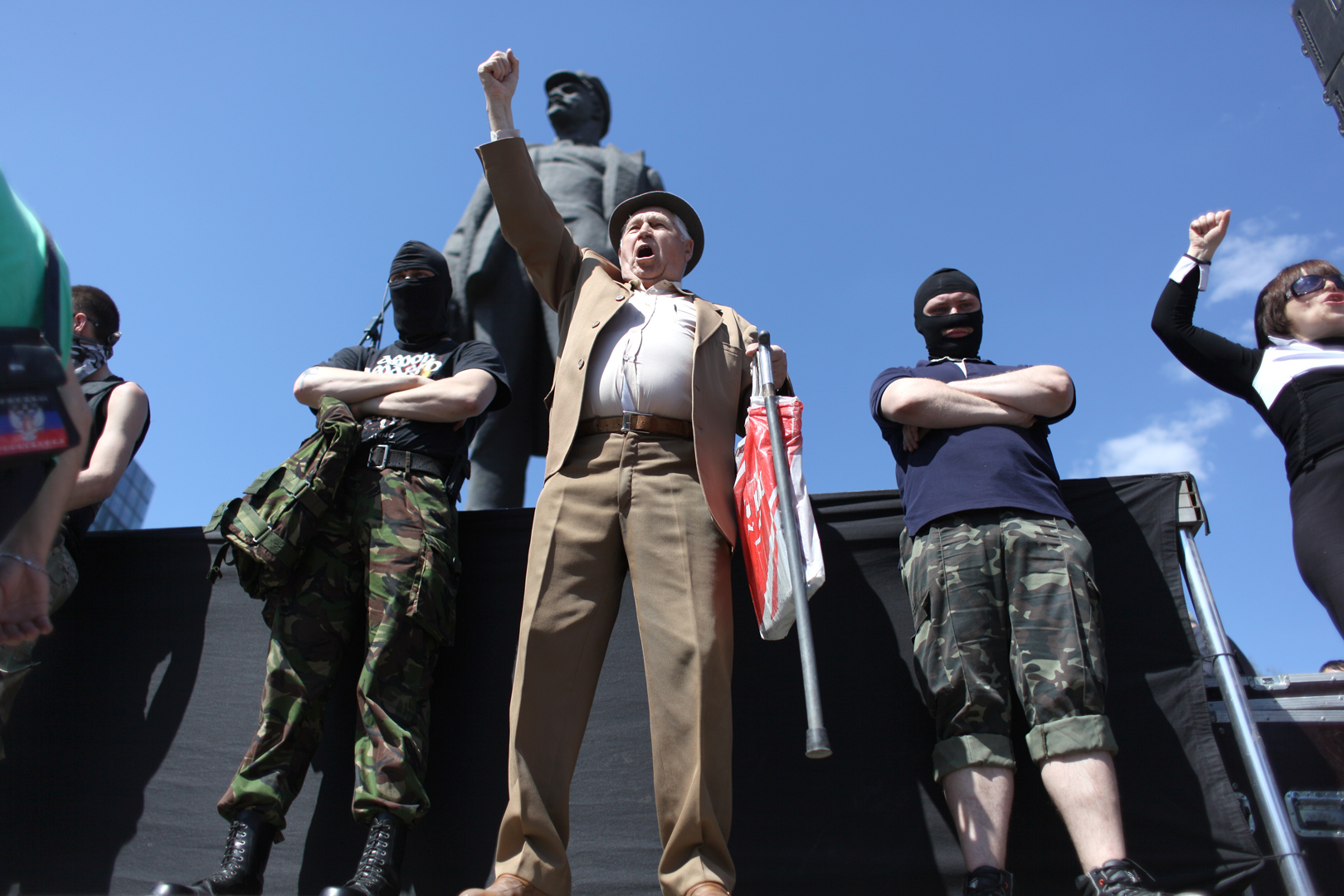
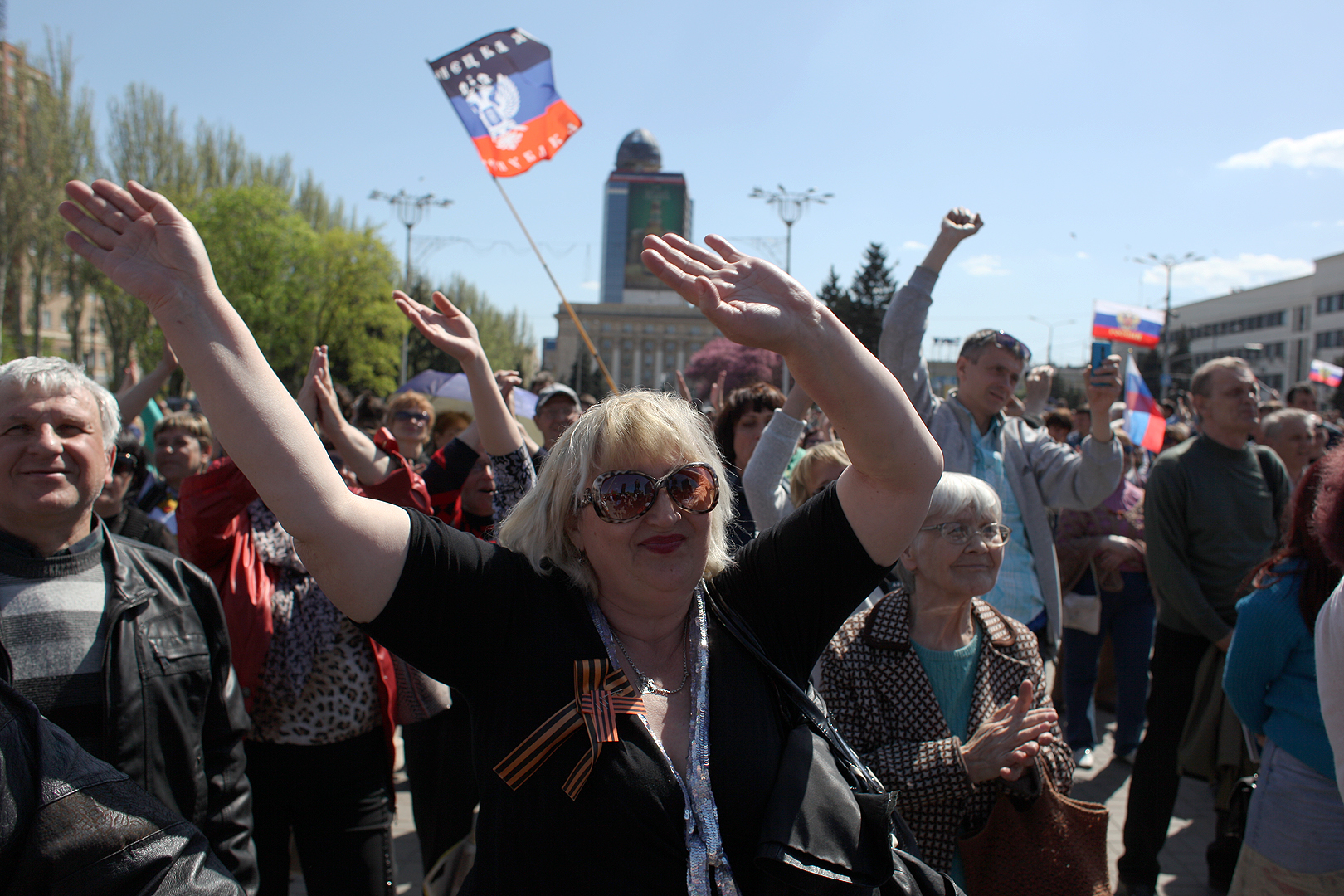
People waved flags of Russia and the “DPR”. After his speech, the crowd went to seize the building of television in Donetsk. The police, armed with automatic rifles, just left when the crowd approached the office of the local TV - this is all captured in my photos.
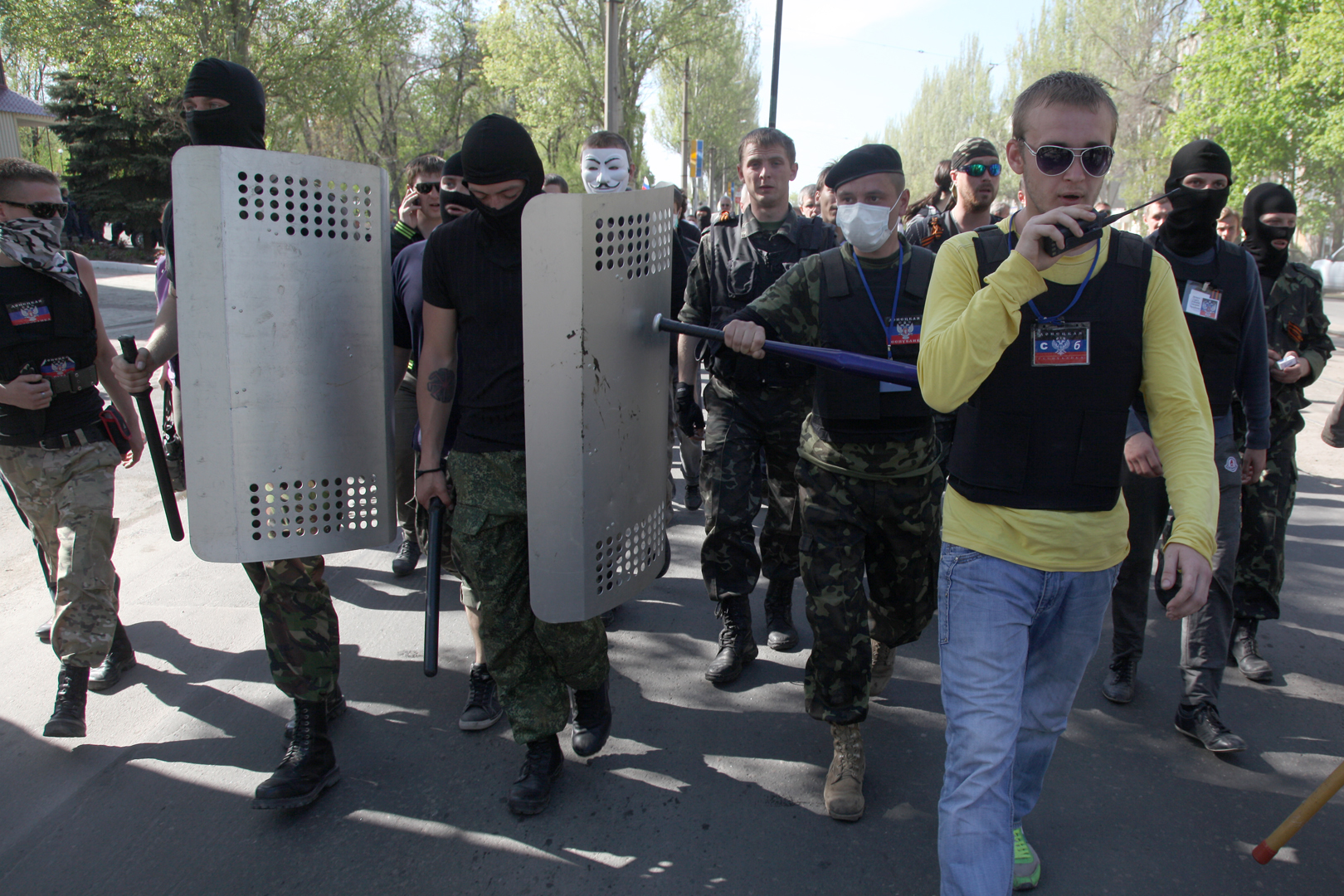
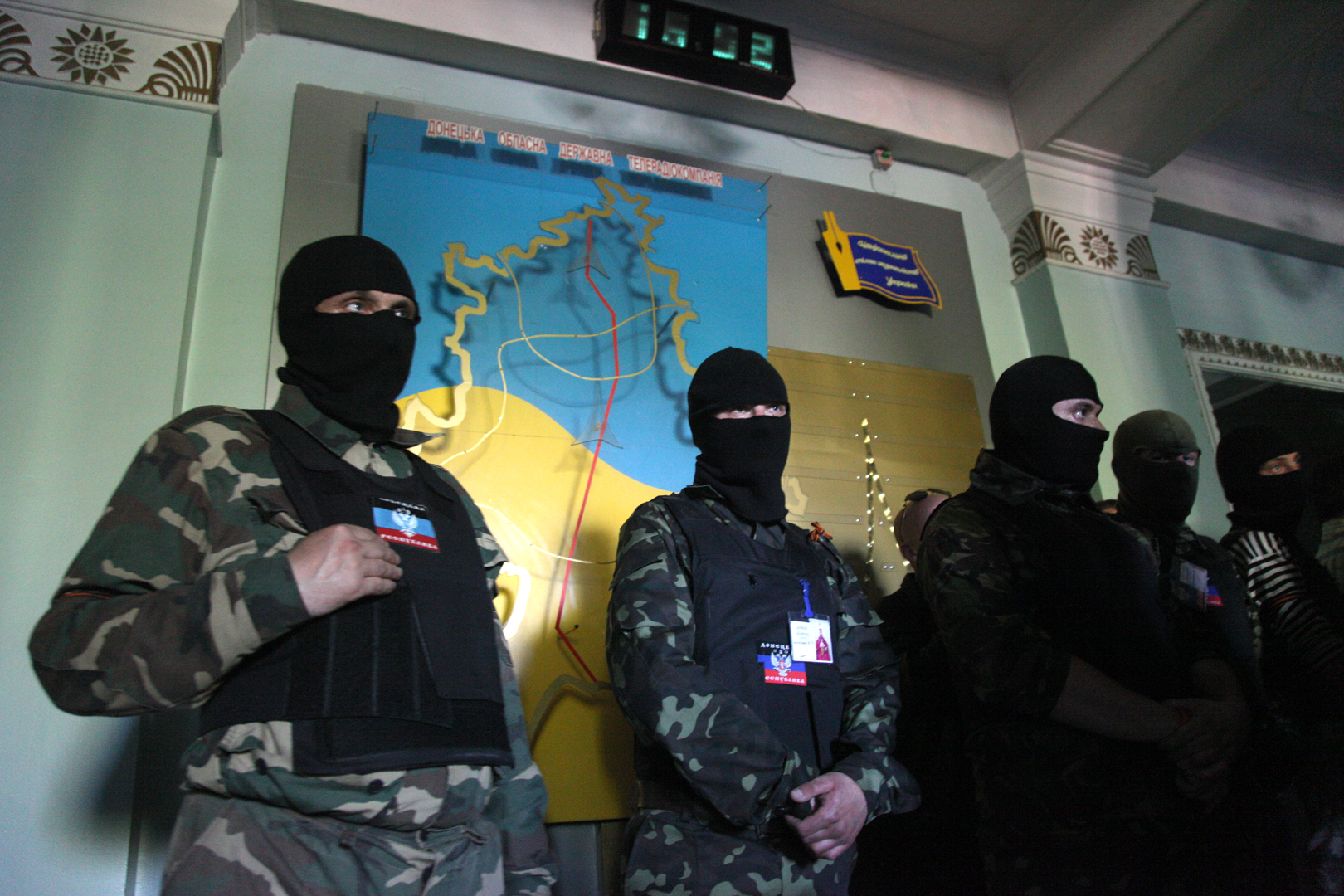
I remember well the last time I left Donetsk: I got in a taxi, went to the station, and then the taxi driver began to say: “We will live in the Soviet Union, you know? Without Coca-Cola.” I answer him: “Wait, without Ukraine, Donbas will not be able to live normally.” And he says, “No, we can. Well, you think - children without Coca-Cola sit” - that's literally.
I got on the train and went to Kiev, and the very next day, on April 28, a pro-Ukrainian rally took place in Donetsk, where people were simply killed in the streets. I didn't stay — it was my last time in the city. And closer I came only from the other side — to the weather station near Donetsk airport, already when everything there was smashed by artillery. I was also on the “Ant” — it is near the runway (“Ant” — the unofficial name of the fortification on the terikon near Donetsk airport — N.B. ed.). But there was already a full-fledged war, with all its consequences.
— Did the police come to their side? Did she stay neutral?
— The police had a very interesting story, their role was completely passive. There are a lot of pictures of me that show the policemen just standing on the side and doing nothing — complete inaction. One episode was particularly memorable: it was even before television was captured, near the monument to Lenin. On one side of the street there are pro-Ukrainian people with flags. From the second - a group of new people with Russian flags. They shout, they call, they almost throw, and the police stand behind these young men and do nothing, just look. And it was everyday — they did not interfere, did not become between people, did not divide. It seemed like tacit support.
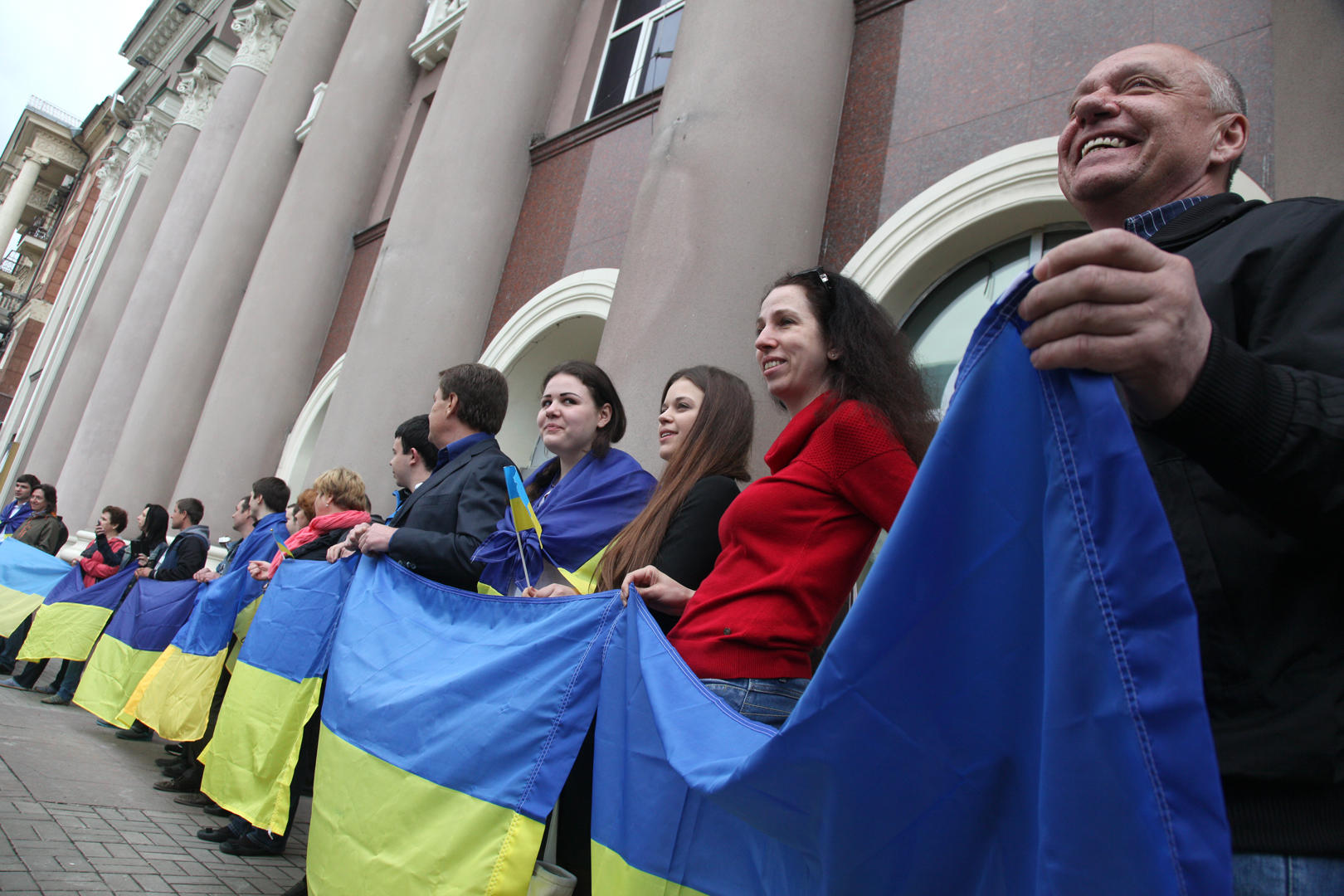

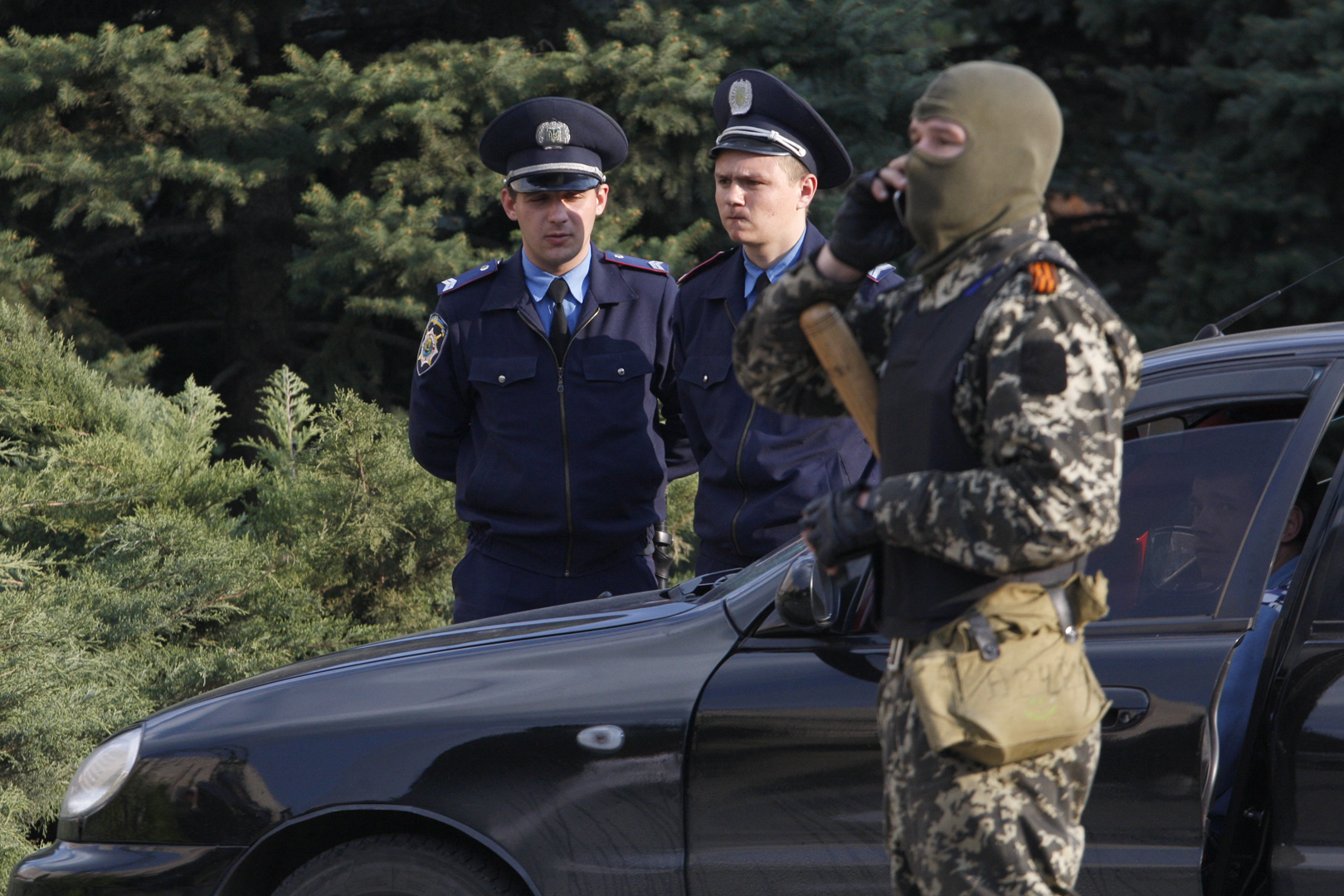
By the way, I took a lot of faces on those little pickets. And then people wrote to me: “Here is this one — he became a militant, he has already been killed.” For example, there was such an action man nicknamed the Dwarf, and the same previously mentioned Dingo. Then, in April, in Slavyansk, I didn't know who I was talking to. There was a Cossack in front of me in a Kuban, and I asked, “Who are you?” — and he says: “We are “Tver wolves”, we have come to defend our soldiers.” And later, already in August, I accidentally saw his photo on the Internet — and found out that it was Dingo, Yevgeny Ponomarev, commander of the Wolf Hundred, the same one with whom I spoke in Slavyansk. Subsequently, he was killed near Krasnodon (now the city of Sorokine, Luhansk region — N.B. ed.) Ukrainian military. And only then did I realize who exactly I was dealing with in the spring. Now you can google and find articles about Yevgeny Ponomarev on the Internet. Russian media write about him as a hero of Novorossiya.
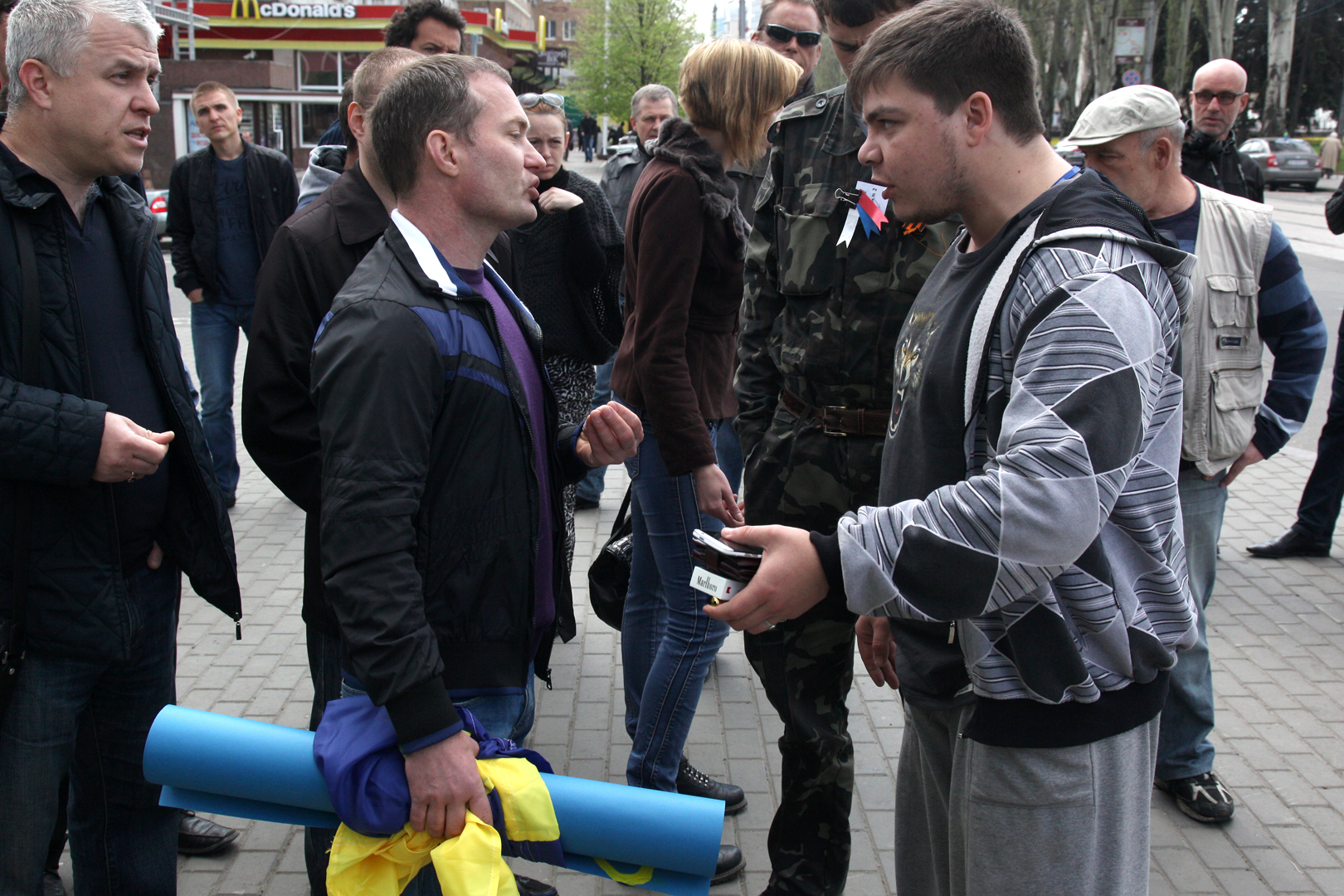
Another story is connected with Ponomarev: in 2018 I worked in Kramatorsk with TV journalists, who were approached by two young boys and told that on one of April 2014 they were arrested at a checkpoint near Slavyansk, taken “to the basement” and began to torture, extract confessions that they are working for the Ukrainian special services. According to them, they were put plastic bags on their heads and made to lose consciousness. But the guys remembered well how the militants approached one of the executioners — it was Dingo...
— Many people remember that at that time Donetsk was a developed city — wealthy, well-groomed, advanced. When you arrived there, was it really such an impression?
— Yes, Donetsk has always had the impression of a successful and cozy city. Especially the center — well-groomed, clean, flowers, roses... Beautiful city in fact. Then everything functioned: expensive hotels in the center, supermarkets, markets. We drove around the city every day — everything was very comfortable. There were many journalists, including Russian ones. They were still working in Ukraine, and every evening they would gather in restaurants — loud and noisy — and these were expensive restaurants. Everything was level there, Donetsk was indeed a prosperous, respectable city. What Donbass Arena is worth... And what it has now turned into — you can see for yourself. And why is it worth the fact that the art foundation “Isolation” was turned by the new authorities into a torture house? And it's scary.
— You were there and you saw it all with your own eyes. Was it possible, in your opinion, to somehow restrain the Russian militants, to save the situation? Were we doomed — with flags against machine guns?
— “No, hold back, that's my personal opinion. What happened was planned long before April 2014. It was a special operation — clearly written, calculated. This is not the first time Russia has done this. Everything happened according to the worked out scheme - like a tracing paper. Perhaps then it was necessary to act very hard, just from the first day — to “overthrow them”. Then, perhaps, it was still possible to fix something, as they did in Kharkov — everything worked out bloodlessly there. What happened later in Odessa was also harsh, but perhaps it was a purposeful Russian provocation. Donbas is a separate story. This region has been under the informational influence of Russia for years. Russian television worked there, people were cultivated for years, and in the end they created fertile soil for the Russians. In fact, it is on the conscience of the “Party of Regions”. They made Donbas their “patriarchy”. And as a result, it was there that everything happened, because nowhere else in Ukraine did it happen - only there.
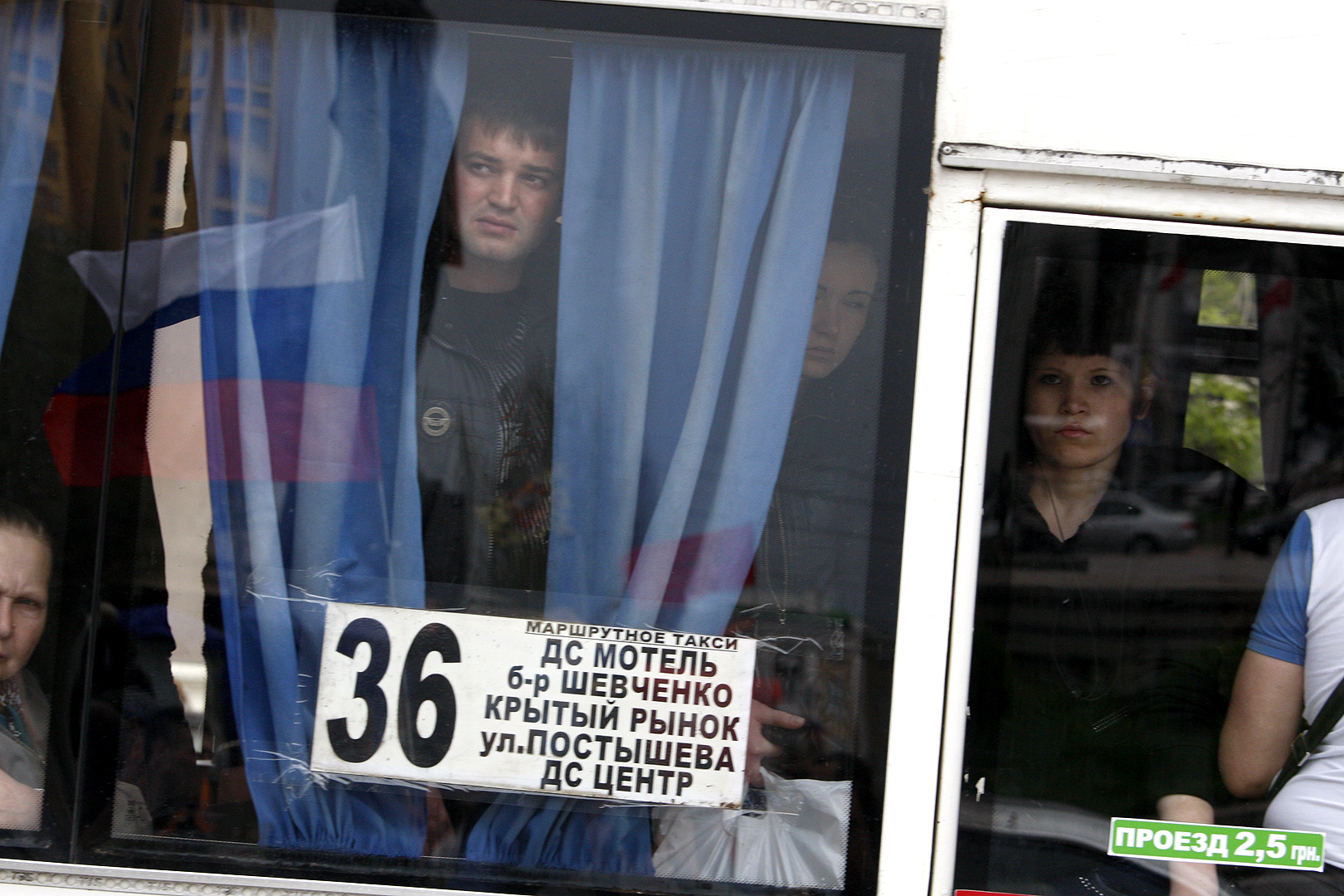
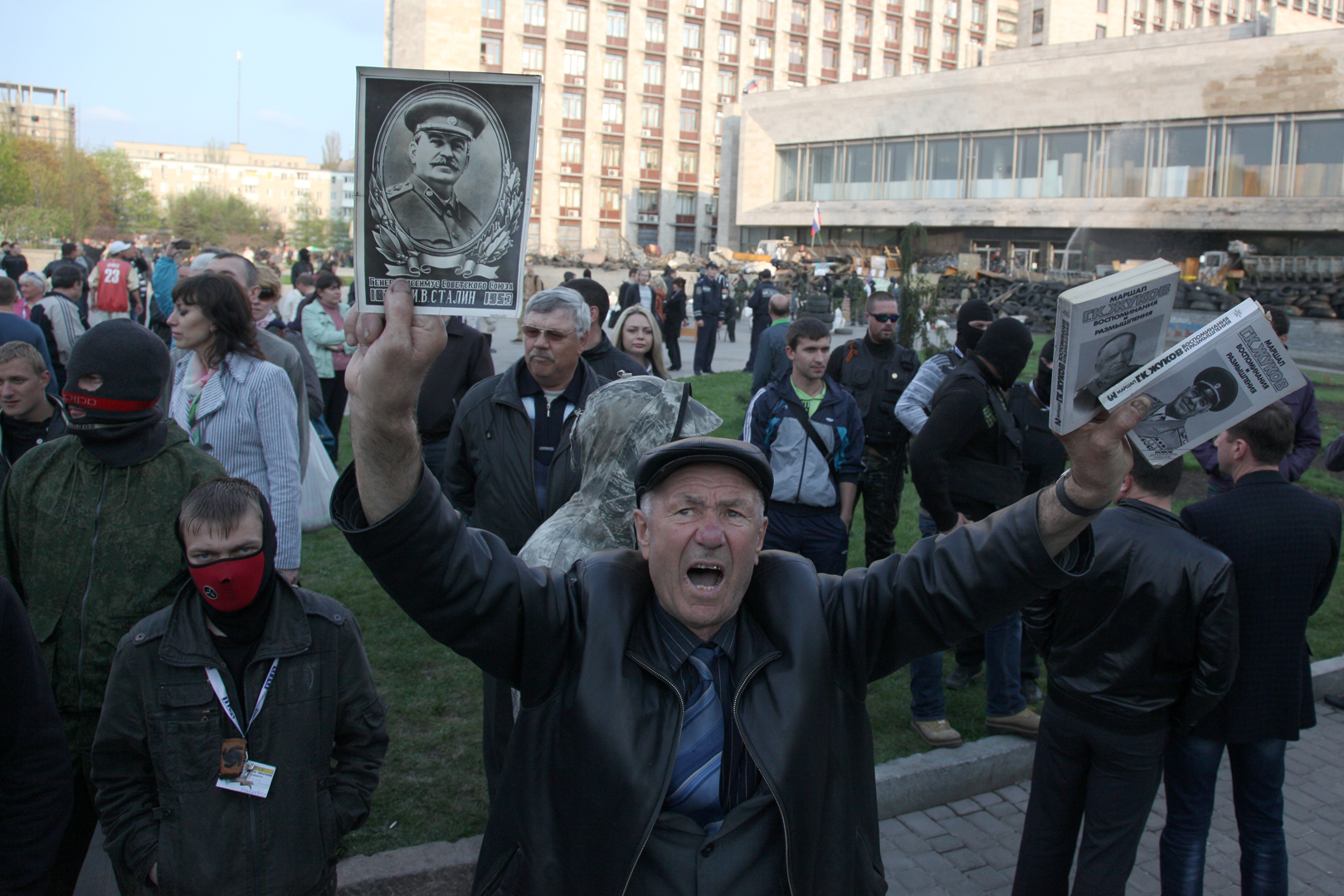
— Have you been to Luhansk? Did they stop there during the events of spring 2014?
— In Luhansk itself — no, during those events I did not come there. But later, already during the active phase of hostilities, I was in the Luhansk region — in Popasna, near Slavyanoserbsk. I drove there to the extreme checkpoints, visited the front line for Happiness. But in the spring of 2014, during the April events, I did not get to Luhansk itself.
— Was there already a clear understanding, in the spring of 2014, of how dangerous all this was? Now we know about “Isolation”, about torture in captivity. And then — there was a feeling that these people were not just waving guns, but were capable of real crimes, of killing?
— I realized this in Slavyansk when they pointed a machine at me — everything became clear. I saw who we are dealing with, I heard that these are Russians, not some “militias”, but a real special squad — the GRU, not otherwise. People without emotions, with experience, trained. Then I clearly realized for myself: this is not a joke, there will be no step back. If they have already started doing this to us, they will not stop.
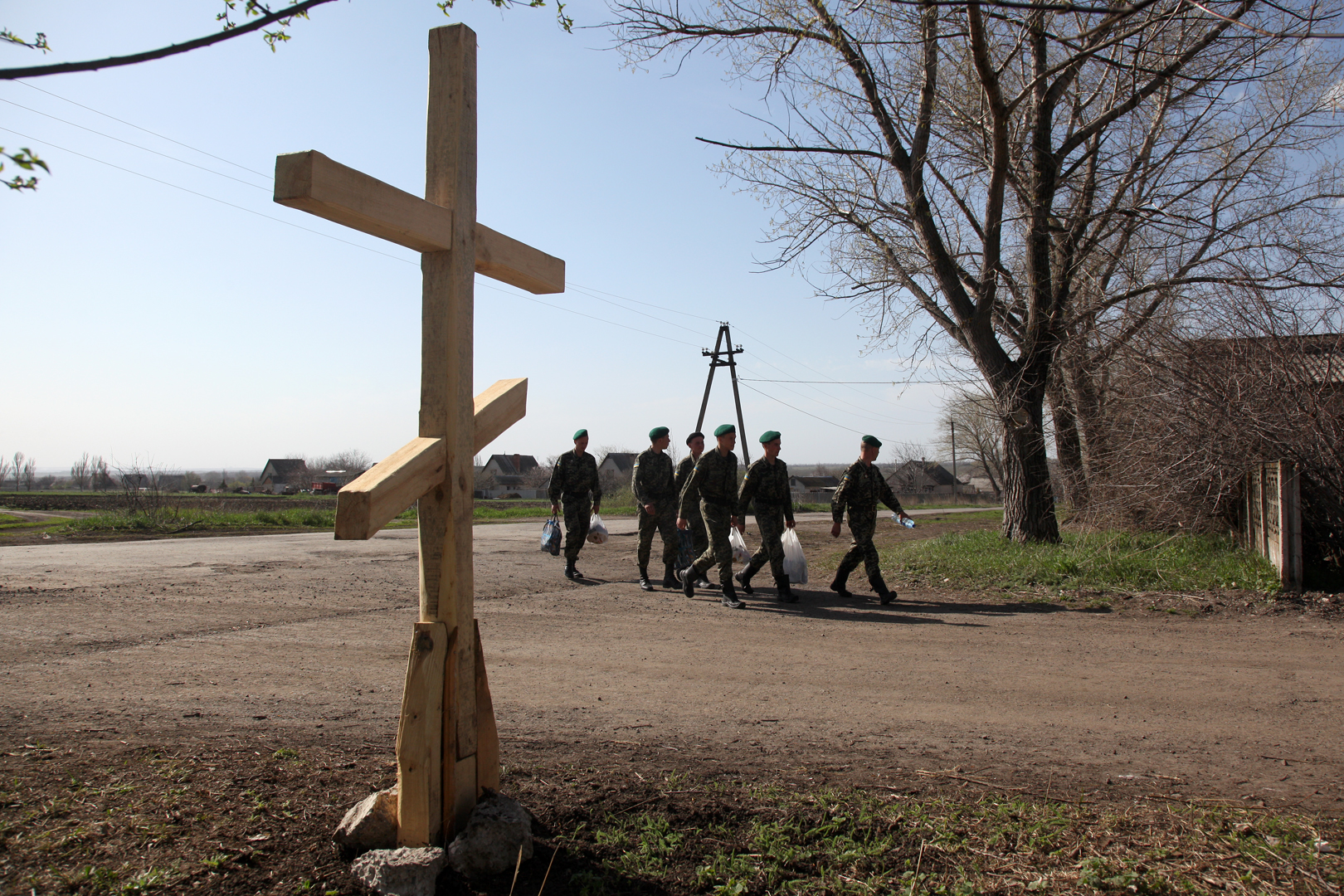
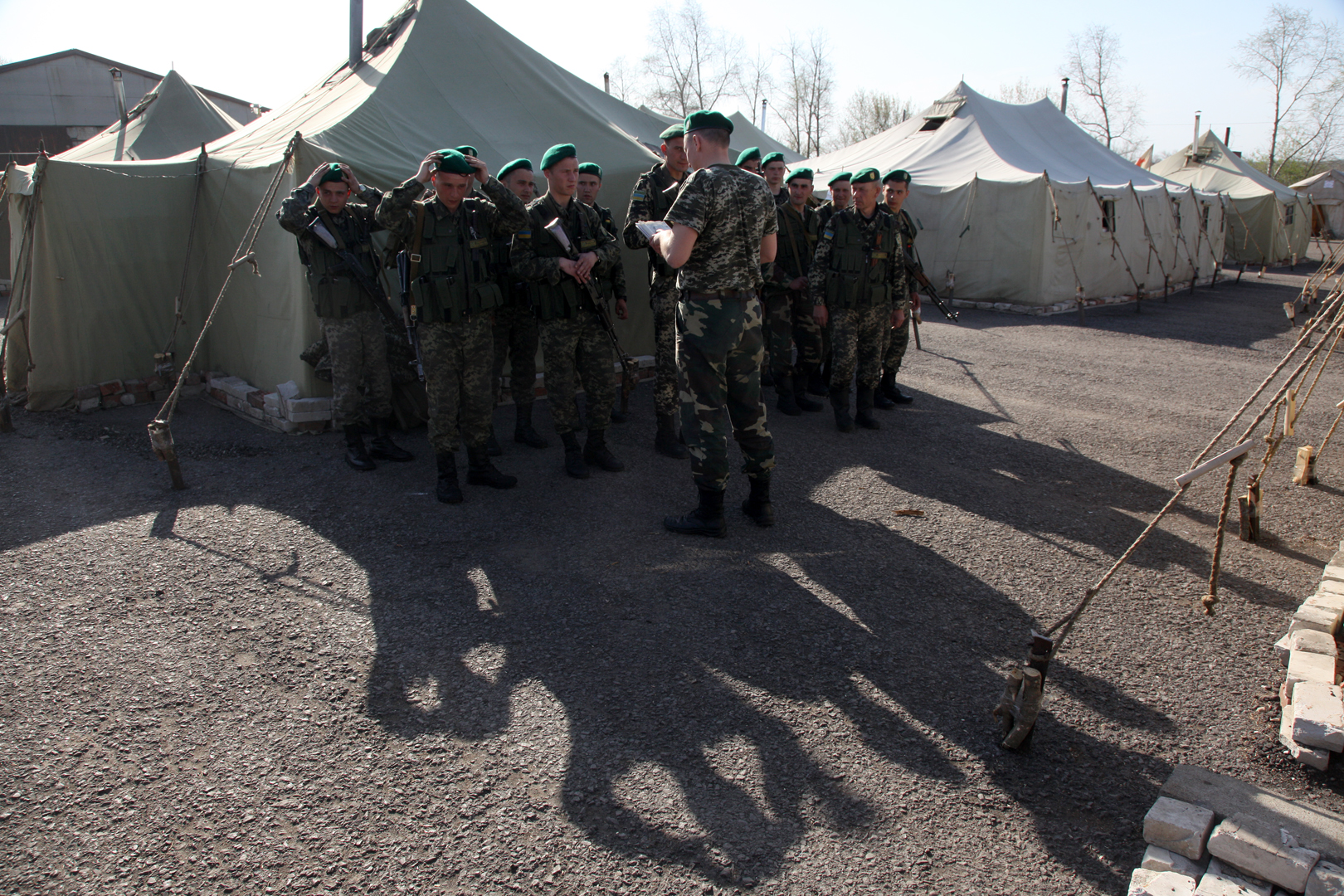
We then went to the border - to the border guards. They lived there in the field, in a tent camp, literally in the open. And later I learned that these tents were then hit with mortars. Then it finally became clear that no one was going to flirt with us, it was a real war, just not officially declared, a hybrid one. Its essence was that the Russians brought “unknown people”, told that these were local activists, volunteers... In fact, it was a Russian special squad, the GRU — that's all.
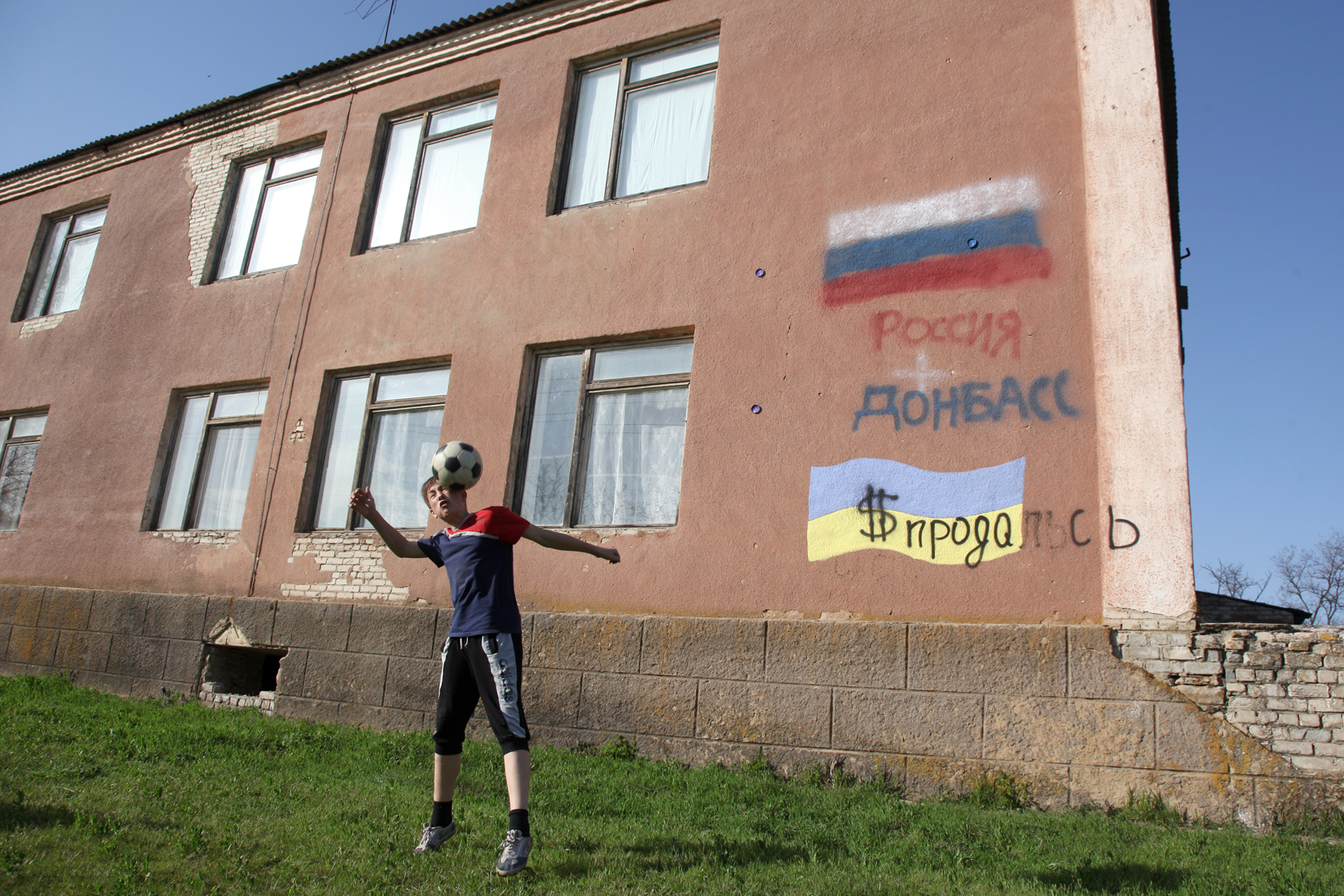
— How did you report news to the international press? You filmed, in particular, for a French agency. Did you write that these are Russian mercenaries? How these people were described?
— “I knew it was Russians, it was obvious, but the agency wrote something like “insurgents”. They could not say directly that they were Russians. This is such political correctness, and it is frankly annoying. In 2024, the French agency did a retrospective, published the same photos that I took back in 2014, repeated the same captions. Again, there is no word that it is the Russian military. This is a political level, on which we then lost the information war, and this is a fact.
— You came to Odessa already during the May events. Everything just started to unfold. How did it happen?
— On April 27, I left Donetsk, on the 28th I was already in Kiev. I was planning to go to Donbas again — even bought a ticket. But on May 2, violent events began in Odessa, and my boss said: “Wait, now we need to understand where it is better to go.” Literally the same evening, he called and said that the situation in Odessa is critical. He said: “Urgently take a ticket and go to Odessa.” When I was on the bus, it was already known about 40 dead.
I decided to go at night to be there as soon as possible. Arrived at about five in the morning. He threw things into the hotel and already at about half past six stood near the House of Trade Unions. There was almost no one there, only the militia — oppressed, completely morally broken. It was evident that they understood: they had to intervene, to stop everything, but they did nothing. I immediately started working. Near the building there were still puddles of blood, burned flags, broken icons...
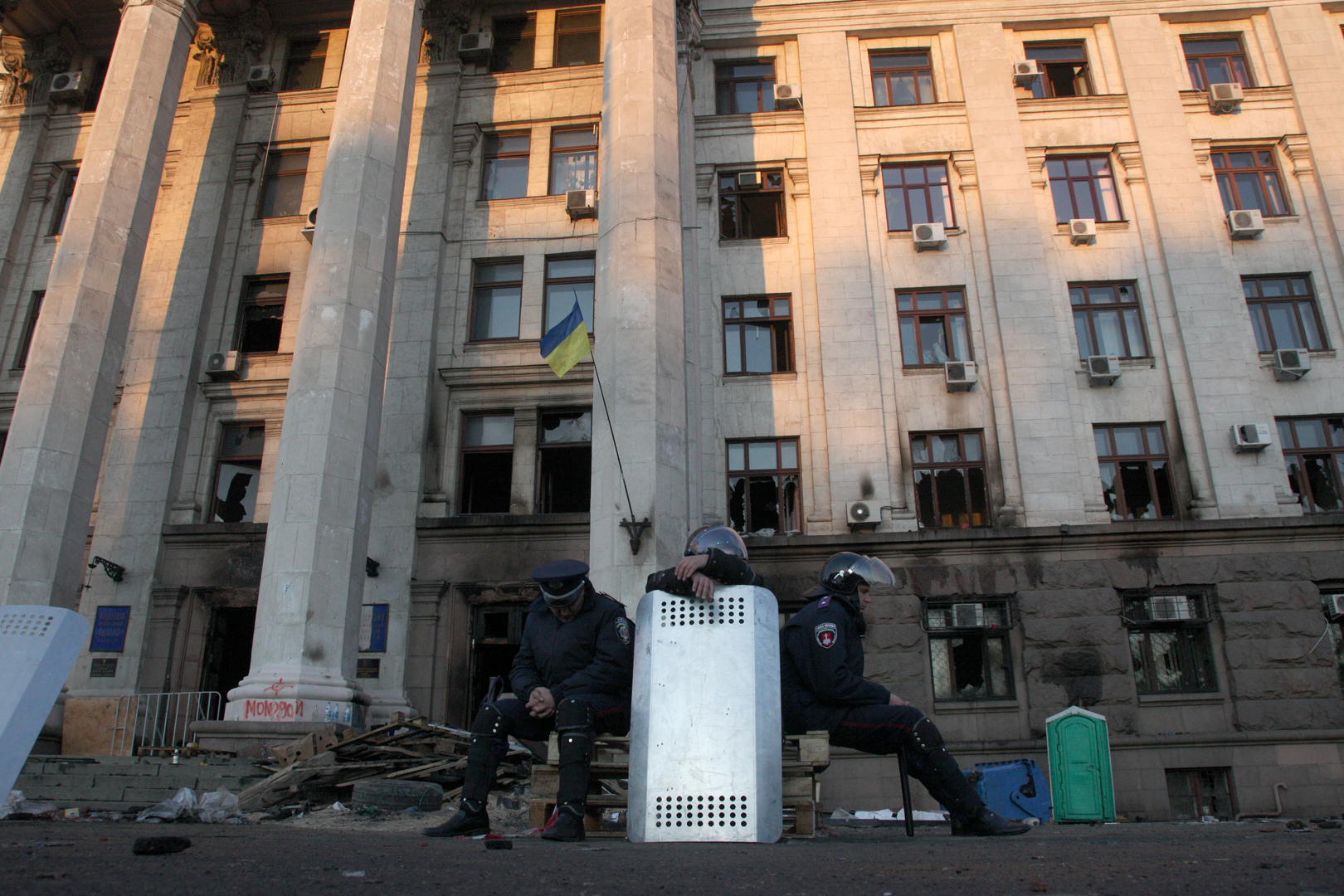
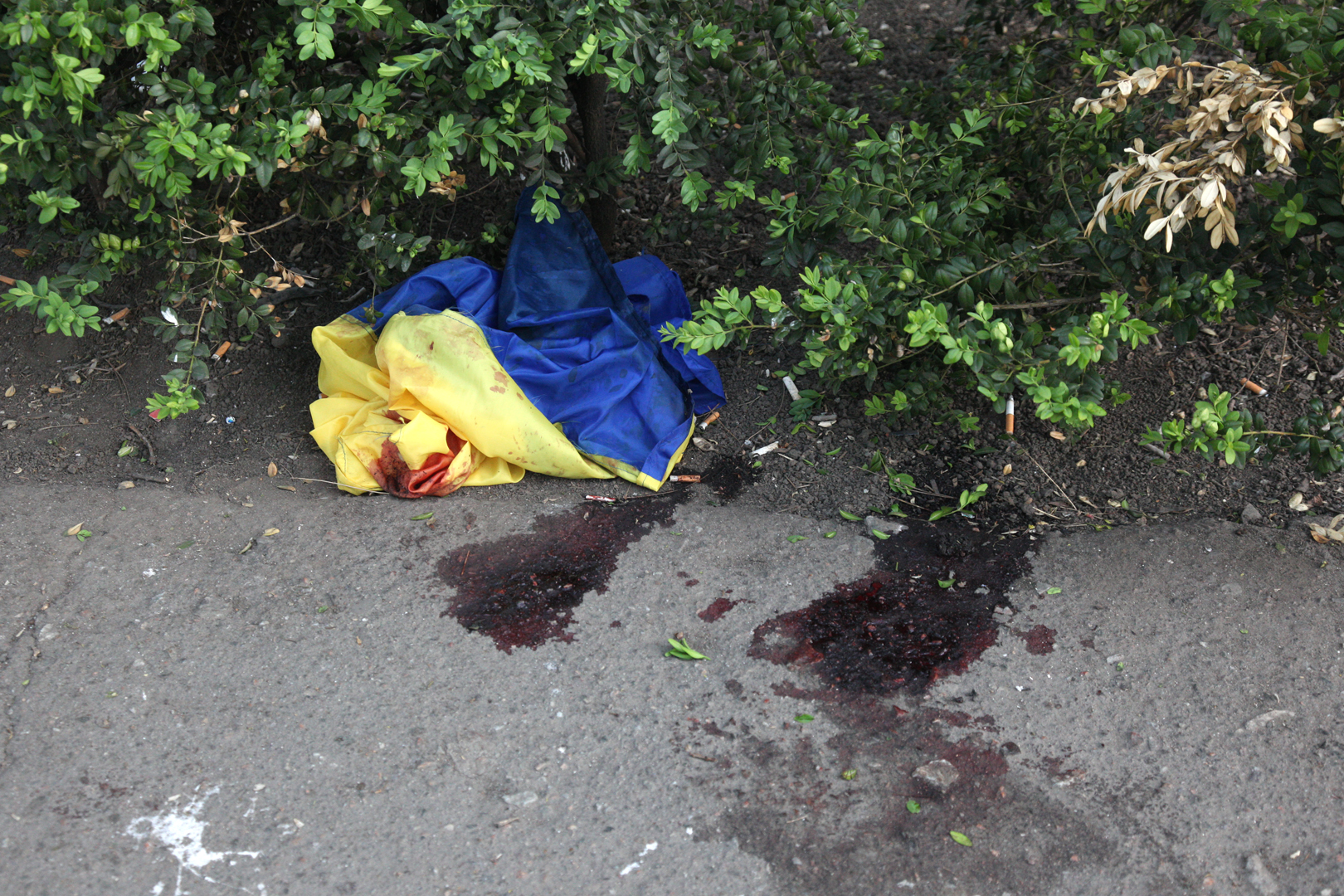
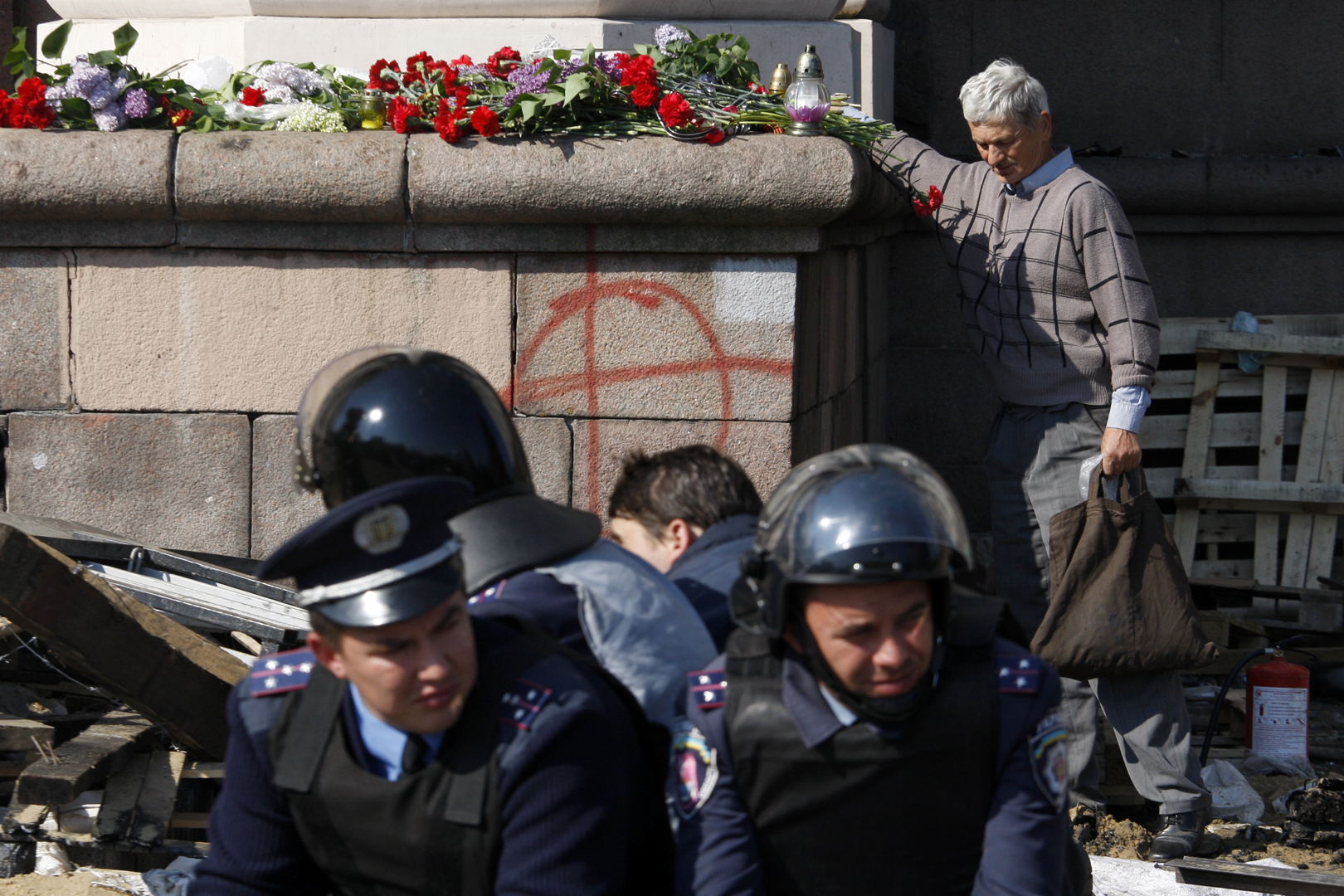
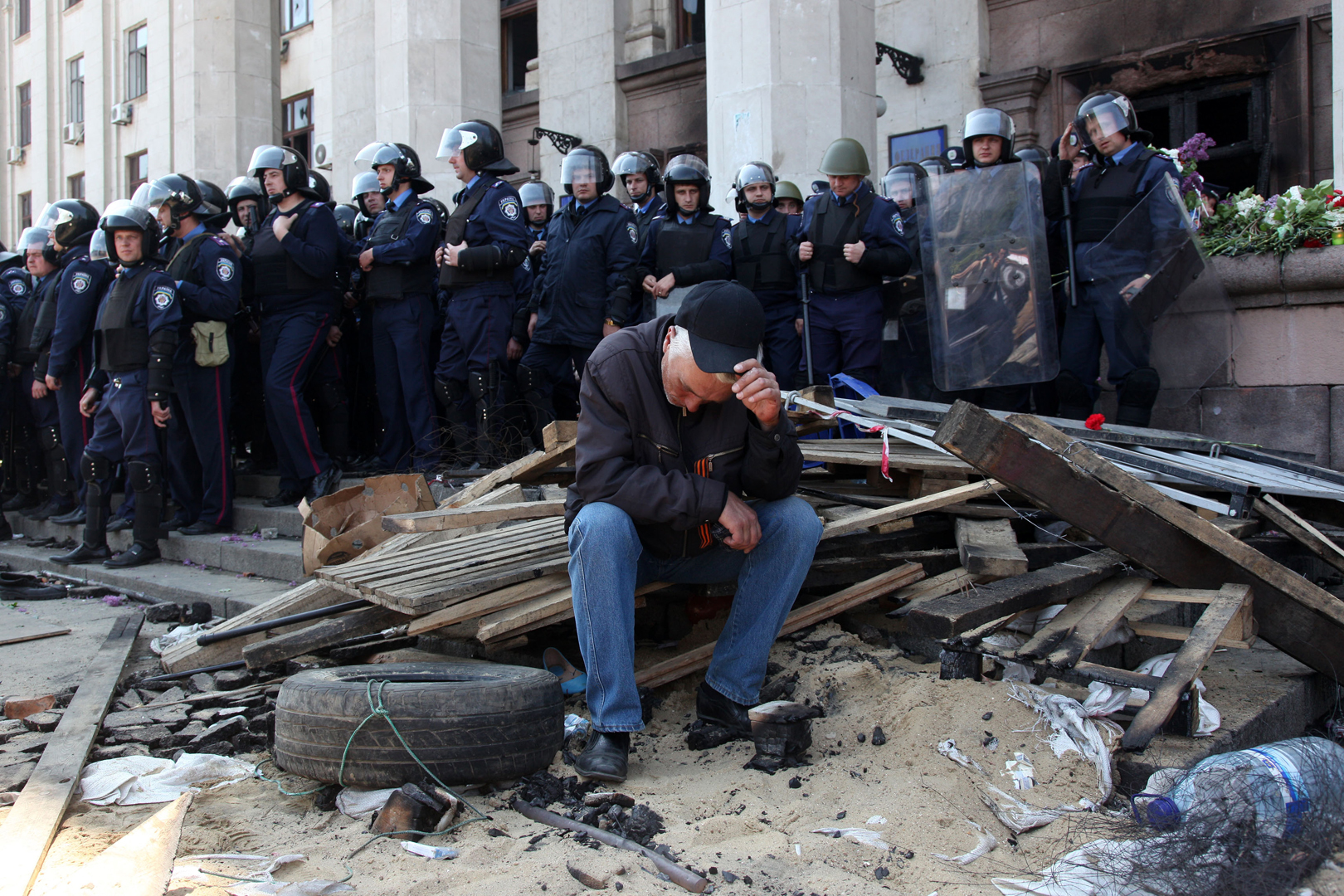
They were not allowed into the Trade Union House itself on May 3 yet — there were ongoing investigations. And closer to noon, protesters began to gather. Actions began: someone burned Ukrainian flags, someone tore them from flagpoles, someone pushed with the police, trying to break into the building. Some Odessa citizen tried to save the flag, but he was beaten.

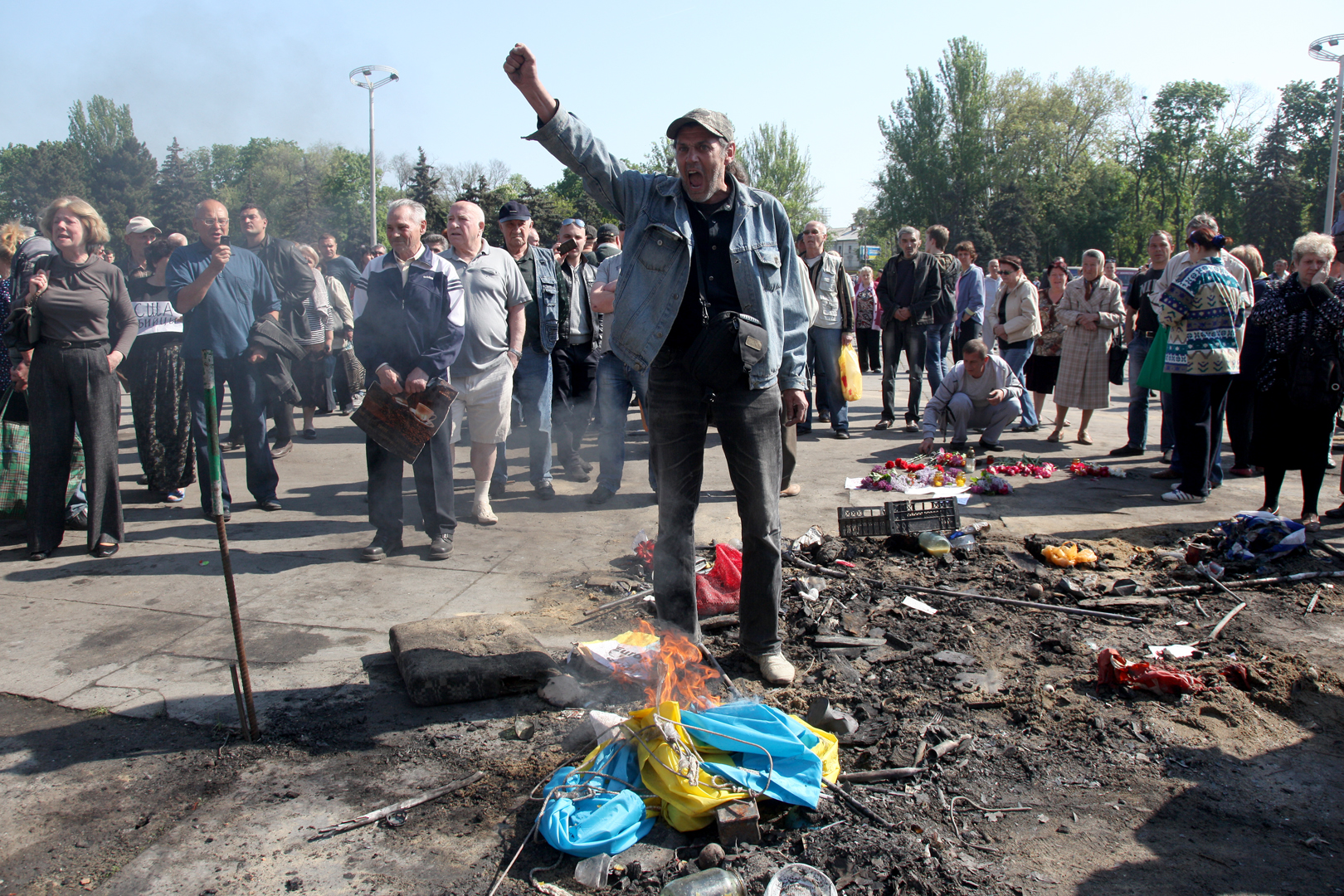
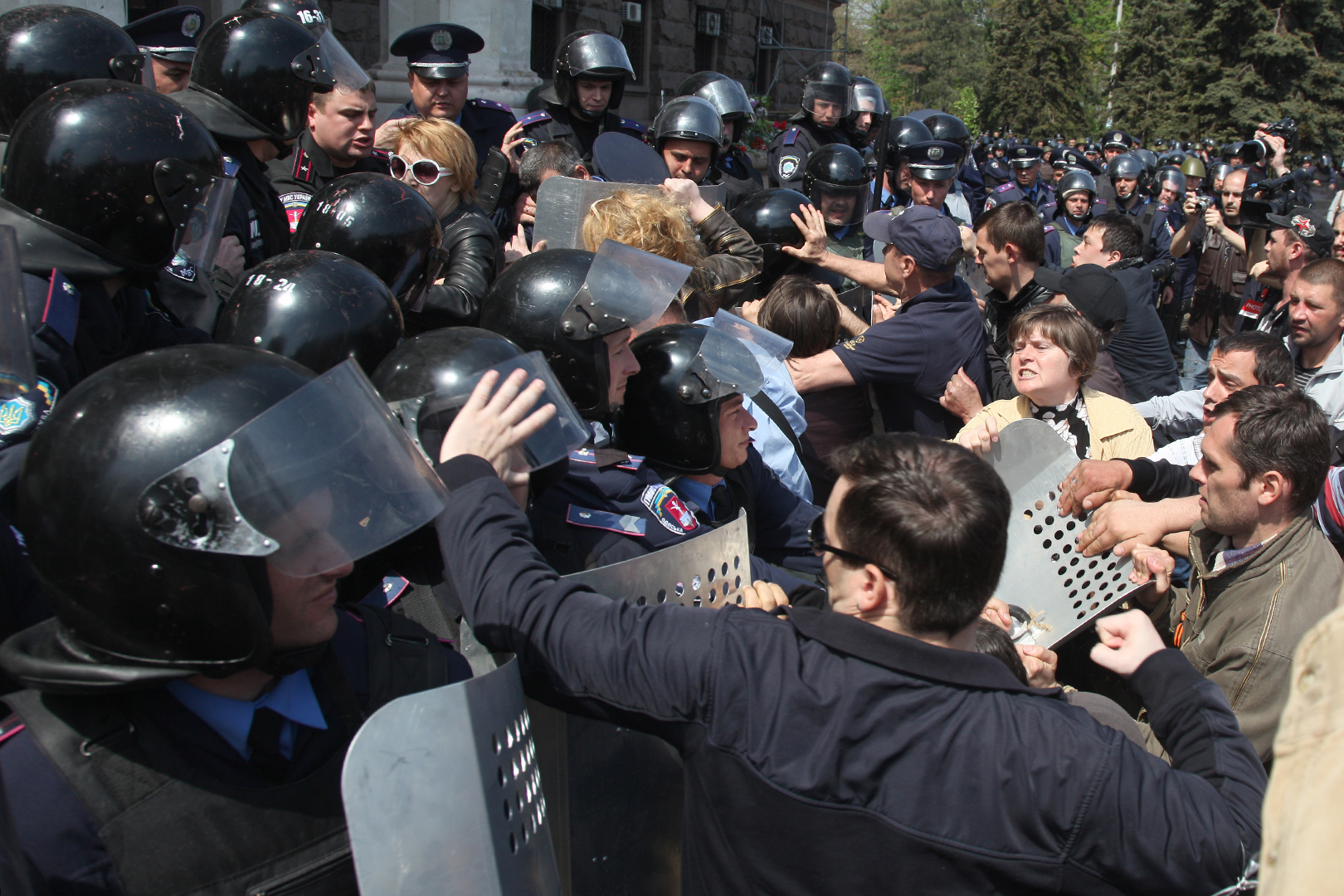
There was a feeling that the situation was unstable, and that everything could flare up again. But at the same time, for the first time, I saw that Odessa was not yet lost.
Odessa residents came, talked with protesters, tried to explain: “This is all staged, you are leading a provocation.” I especially remembered one girl, she just came up and shouted: “Glory to Ukraine!” — and they immediately attacked her, began to pull her hair, beat her — she was barely knocked off. Then I thought: Odessa is not lost yet, people are fighting.
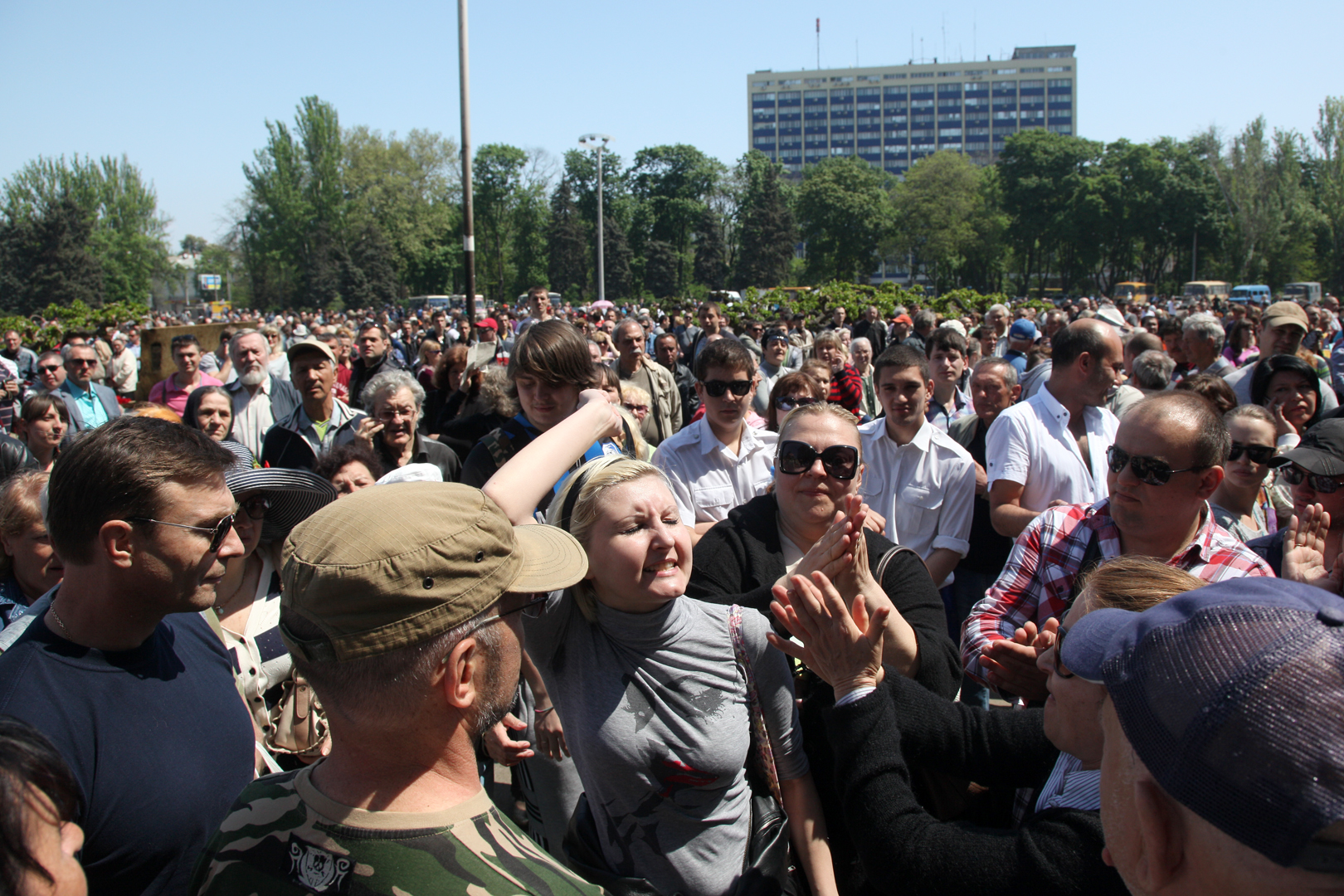
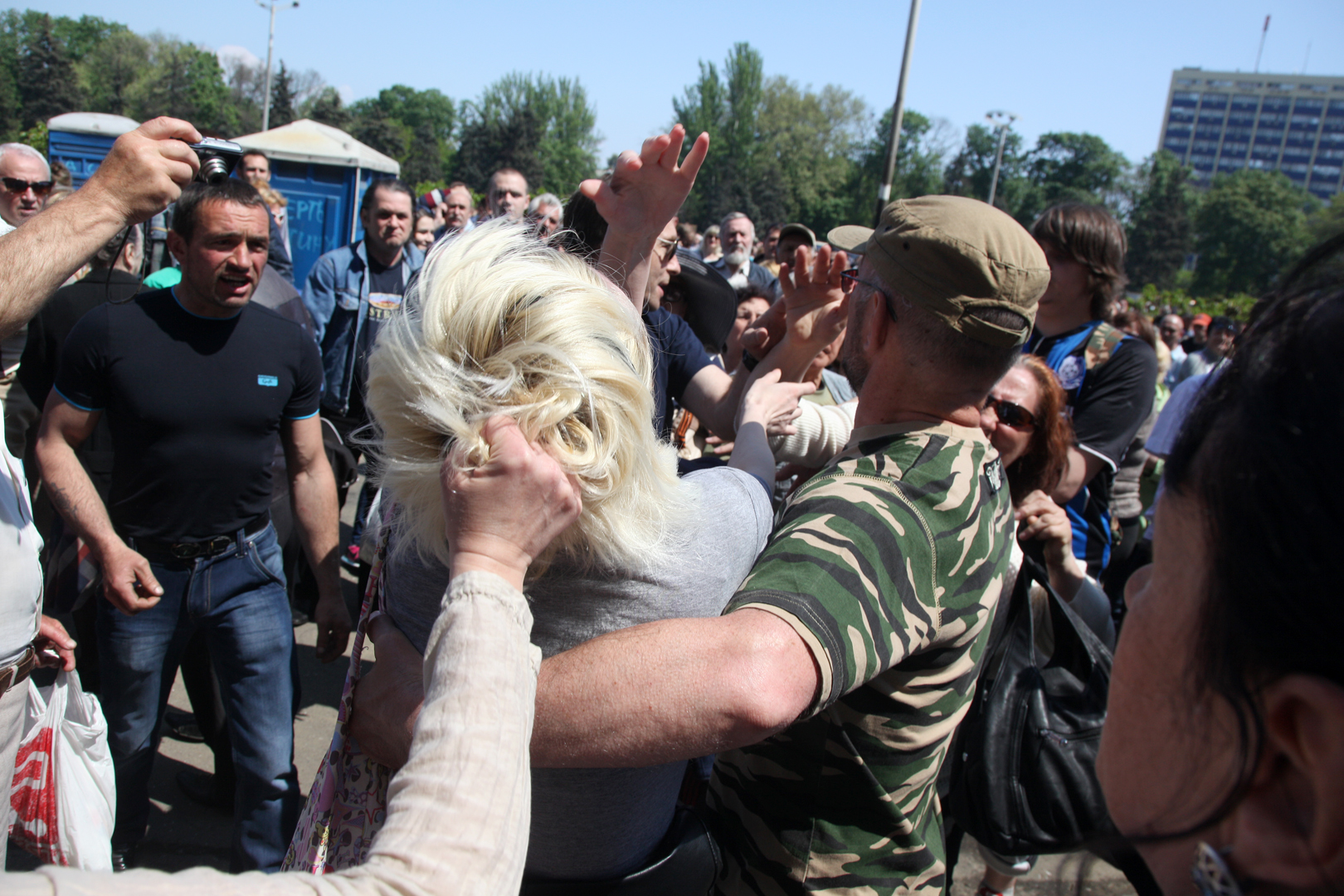
— And in Odessa there was a feeling that some of the people were not locals? That they were brought specially?
— Yes, there was such a feeling. On May 4, we went to the police station on Tiraspol Square — it was there that the crowd came to release the detained participants of the riots in the House of Trade Unions, and the police really released them.
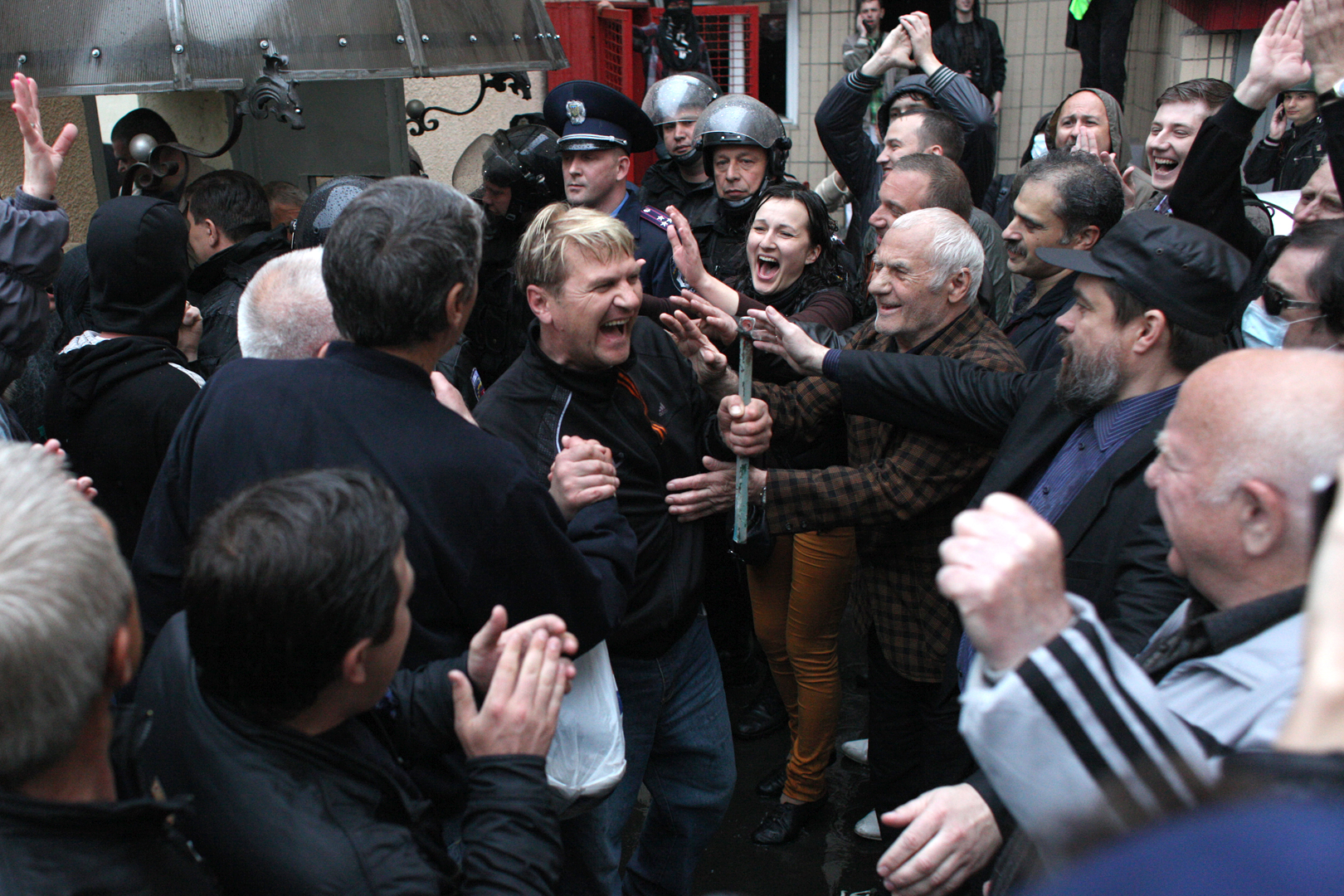
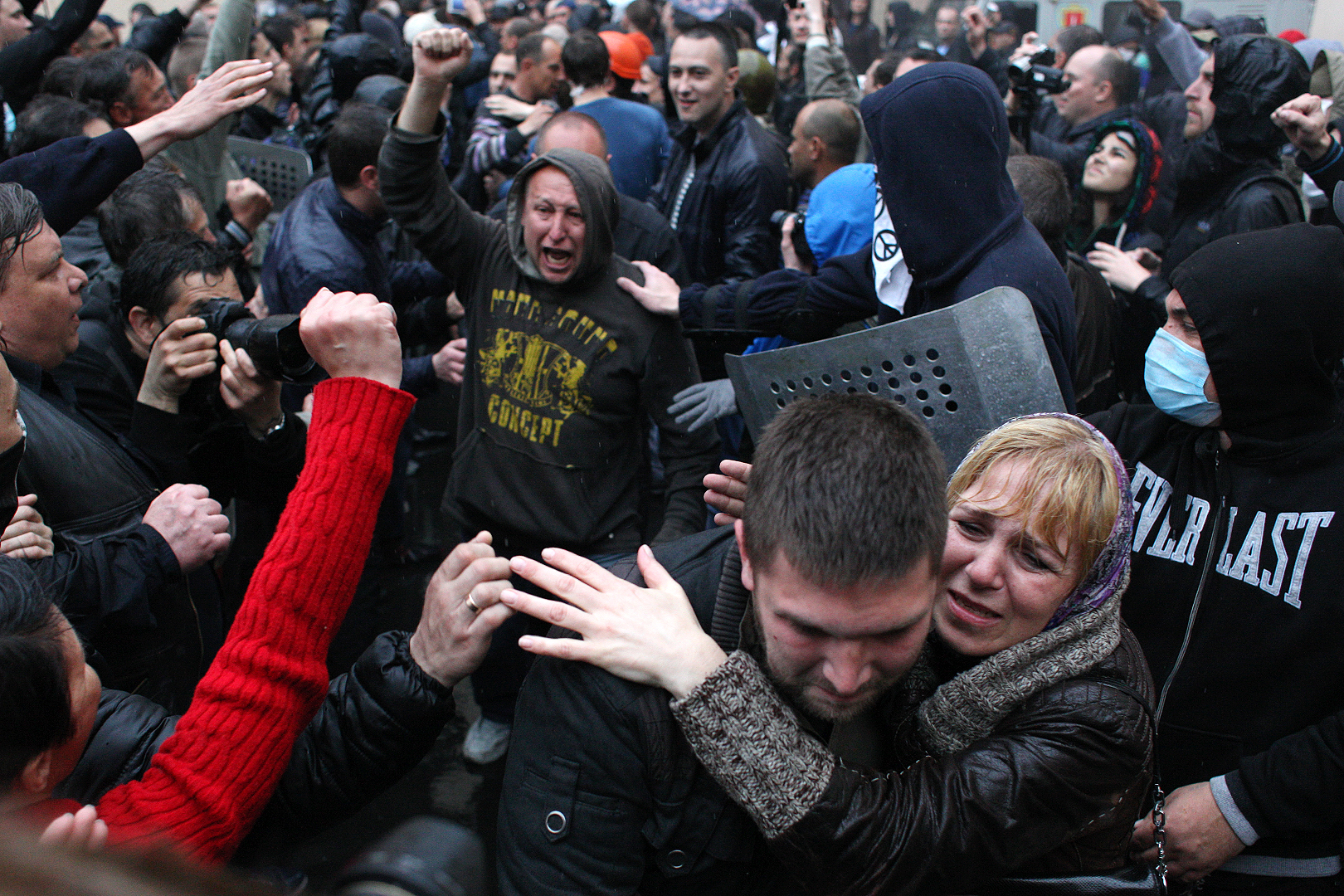
There is footage showing pro-Russian protesters coming out — and they are just being let go. They knitted St. George's ribbons for the militiamen. And then someone in the crowd shouted, “Right Sector is coming!” — and in just 15 minutes there was not a single person left. This myth of the “Right Sector” was so deeply embedded in the consciousness by propaganda that pro-Russian activists were really frightened and simply fled.
After that, the funerals began — the dead were buried near the Cathedral Square of the Maidanovites, then the people who died in the House of Trade Unions.
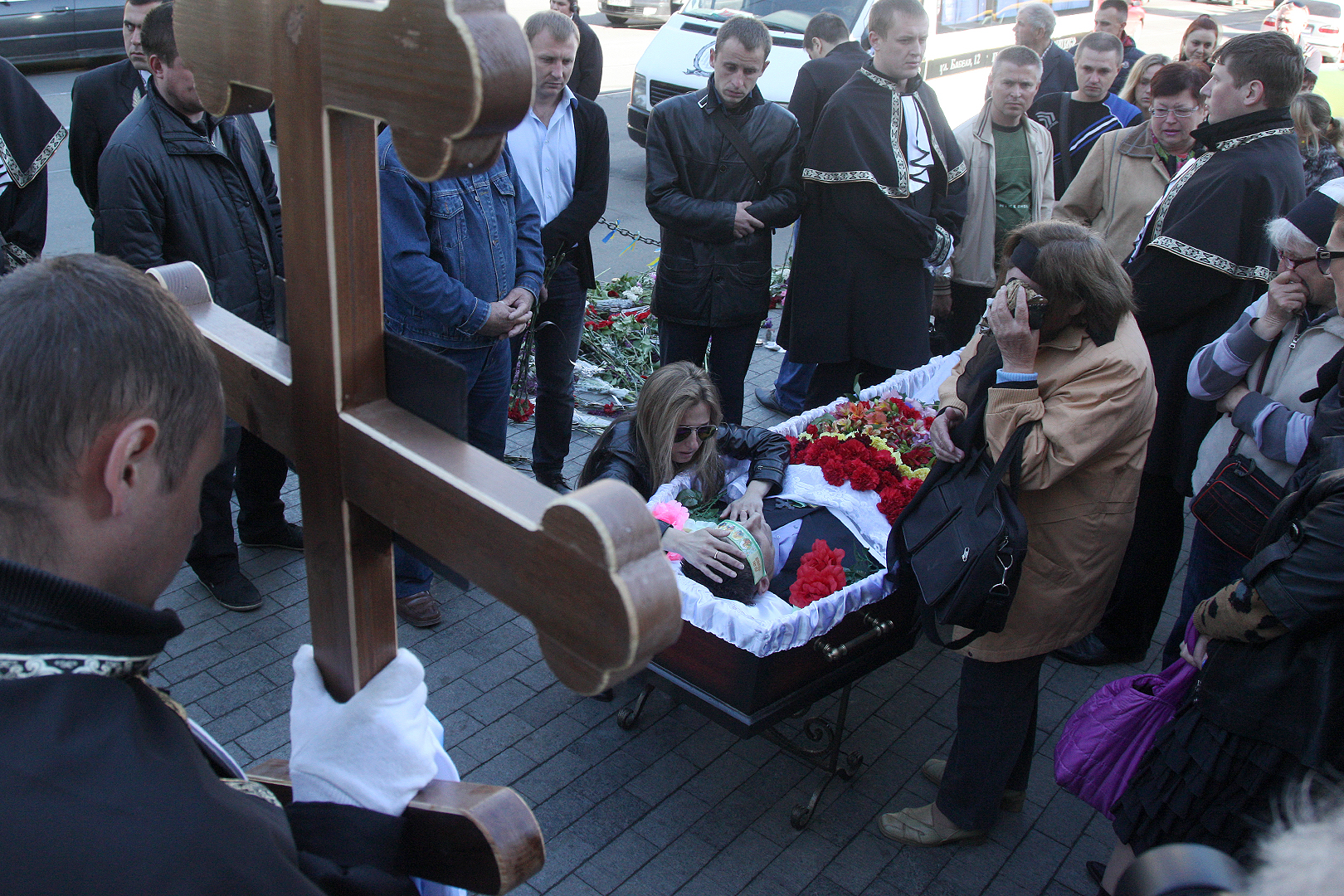
I remember one of the goodbyes well: it was clearly visible there that part of the action was staging. There was a person who led the process — actually the director, there was a “conductor” of the weeping — gathered grandmothers standing in the center, shouting, tearing their hair.
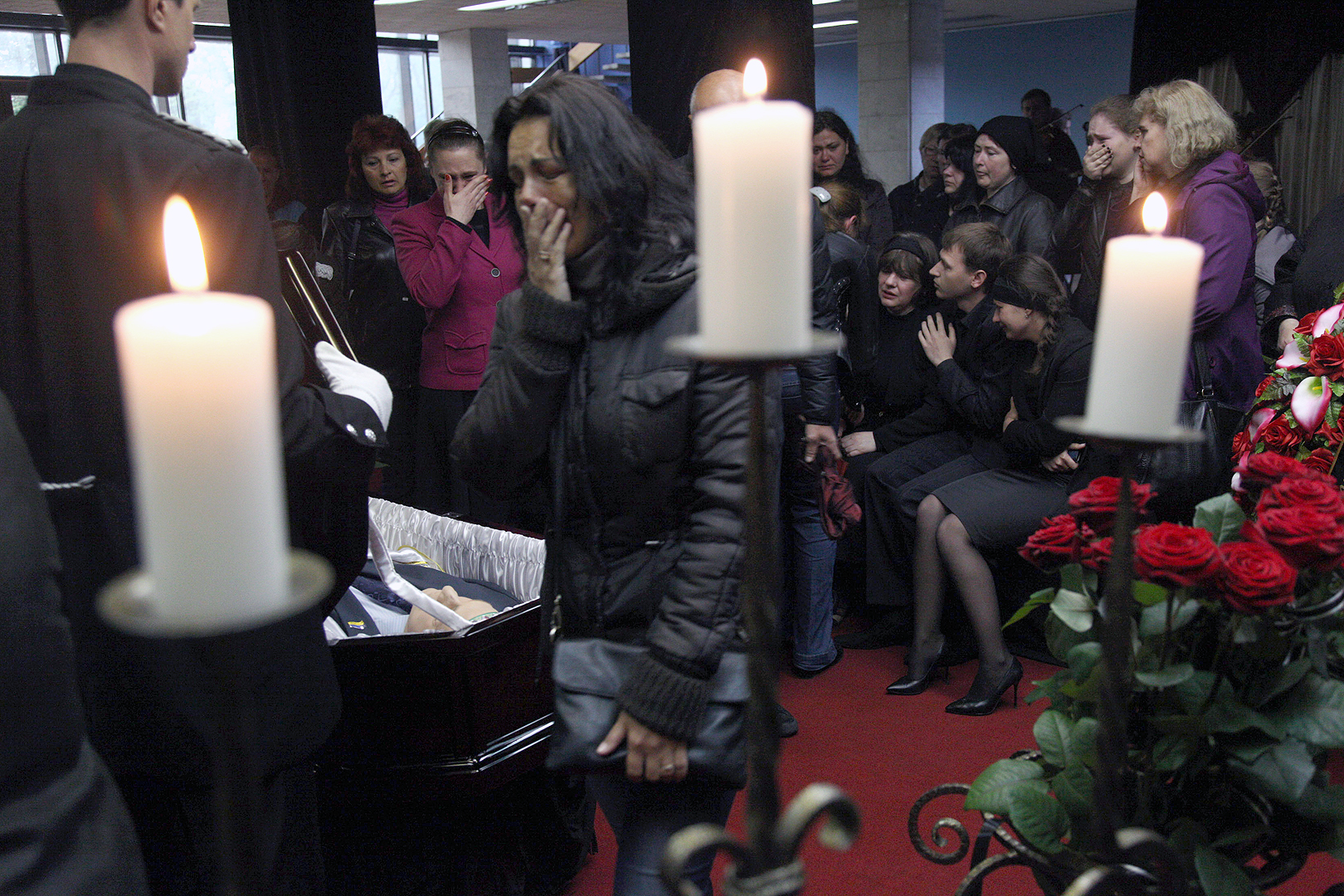
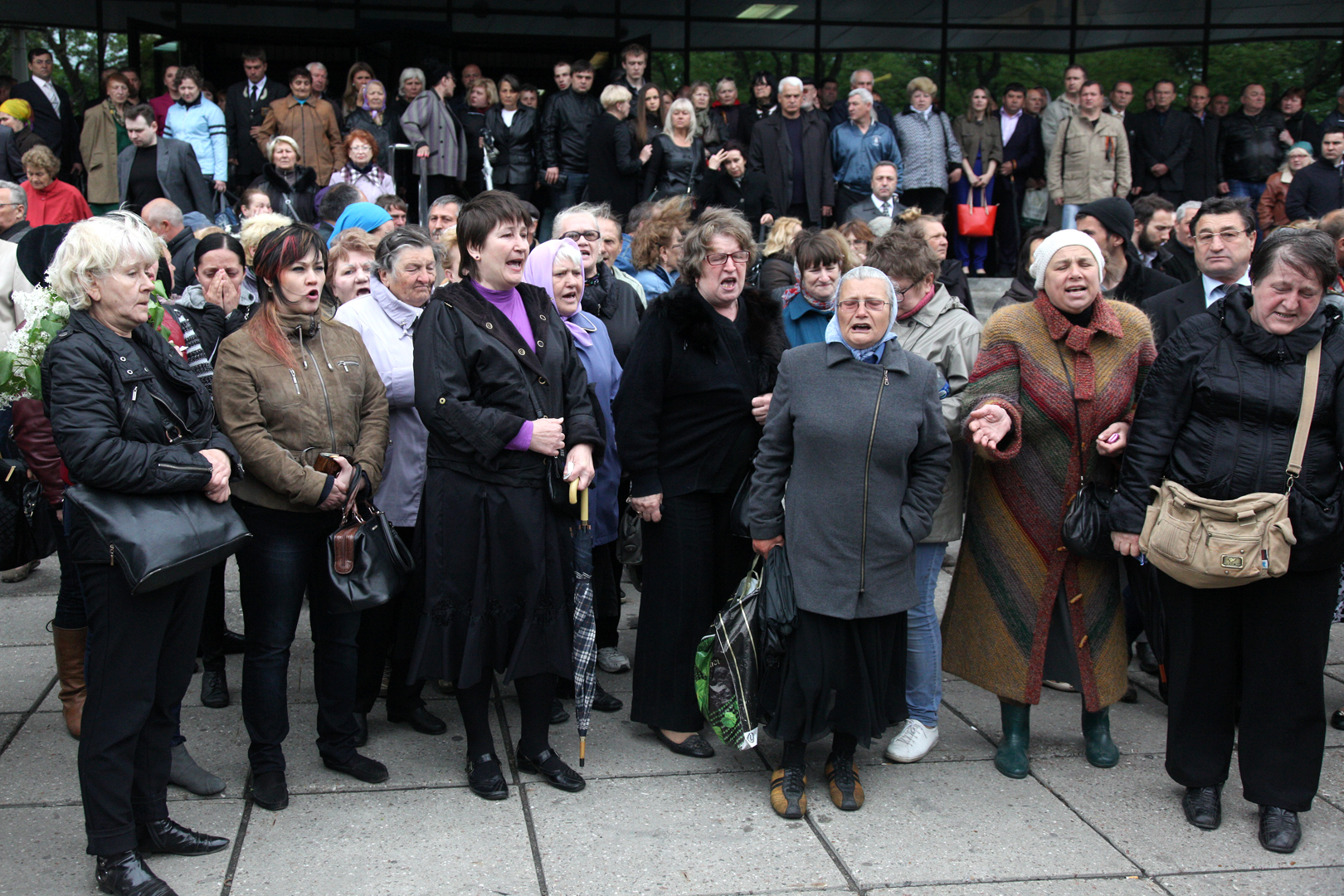
Next stood some “veterans” with medals — it seems, too, picked up. They clearly worked “for the cameras”, for the press. And only further, a little at the top, stood the ordinary Odessa residents, who really came to say goodbye. I shot a lot - and the same grandmothers with George ribbons, with posters, appeared in different frames. It looked like a well-staged information spectacle for the media.
— You have photos inside the House of Trade Unions. What did you see when you went there?

— I was inside after the investigation was over. But all that remained was soot, clogged walls, collapsed plaster. There was a very powerful fire there. I'm not a firefighter, of course, but I heard it was the type where flames and smoke are moving rapidly up the stairs. That is, people ran inside - and the fire, which broke out powerfully in the lobby, instantly covered them.
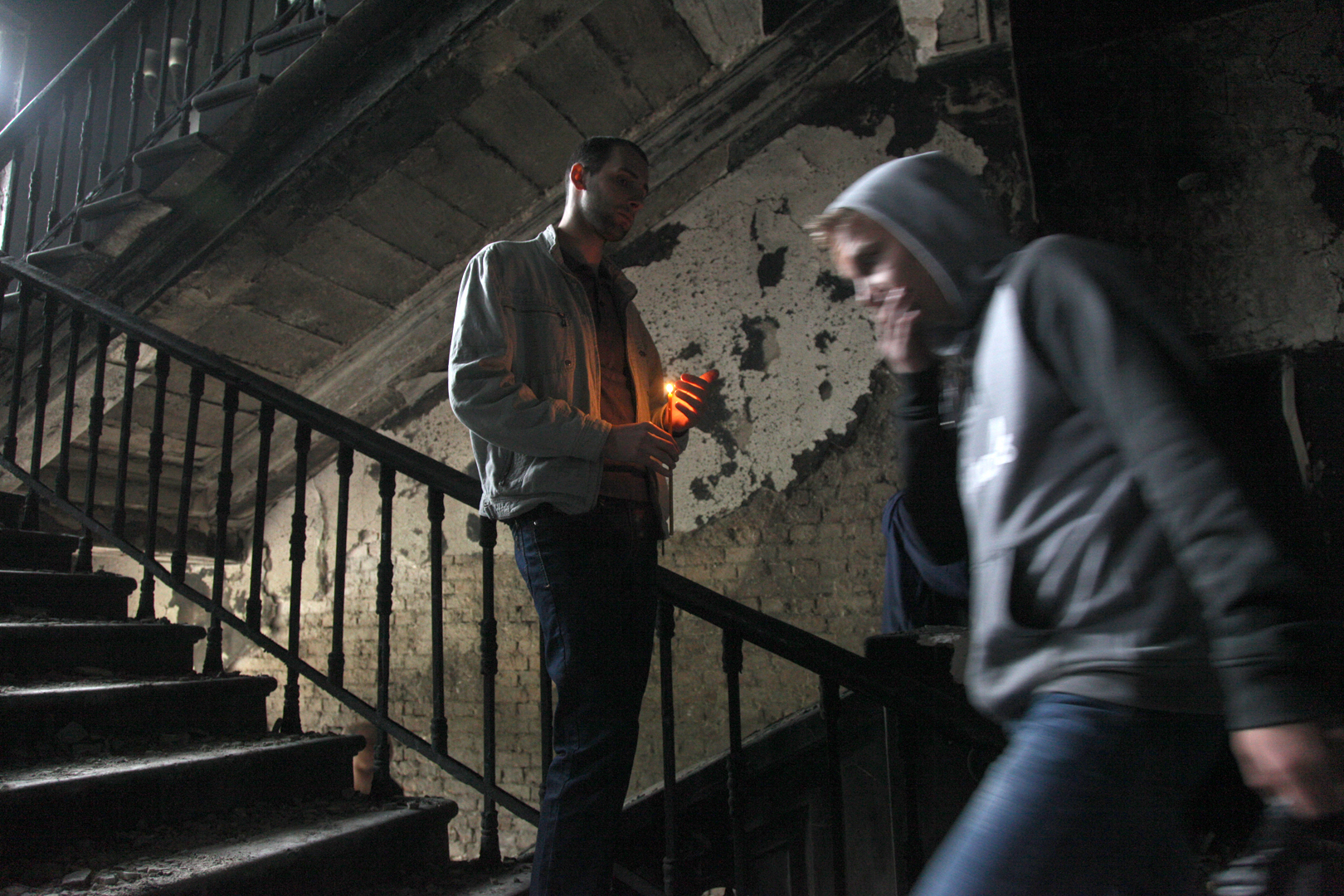
On the ground floor, they say, there were flammable substances. Exactly how it all caught fire is unknown. But bottles of the mixture were thrown there, and everything happened very quickly. The flames went up and many people just suffocated. The fire covered the stairs by which they were fleeing. The tragedy happened in a matter of minutes.
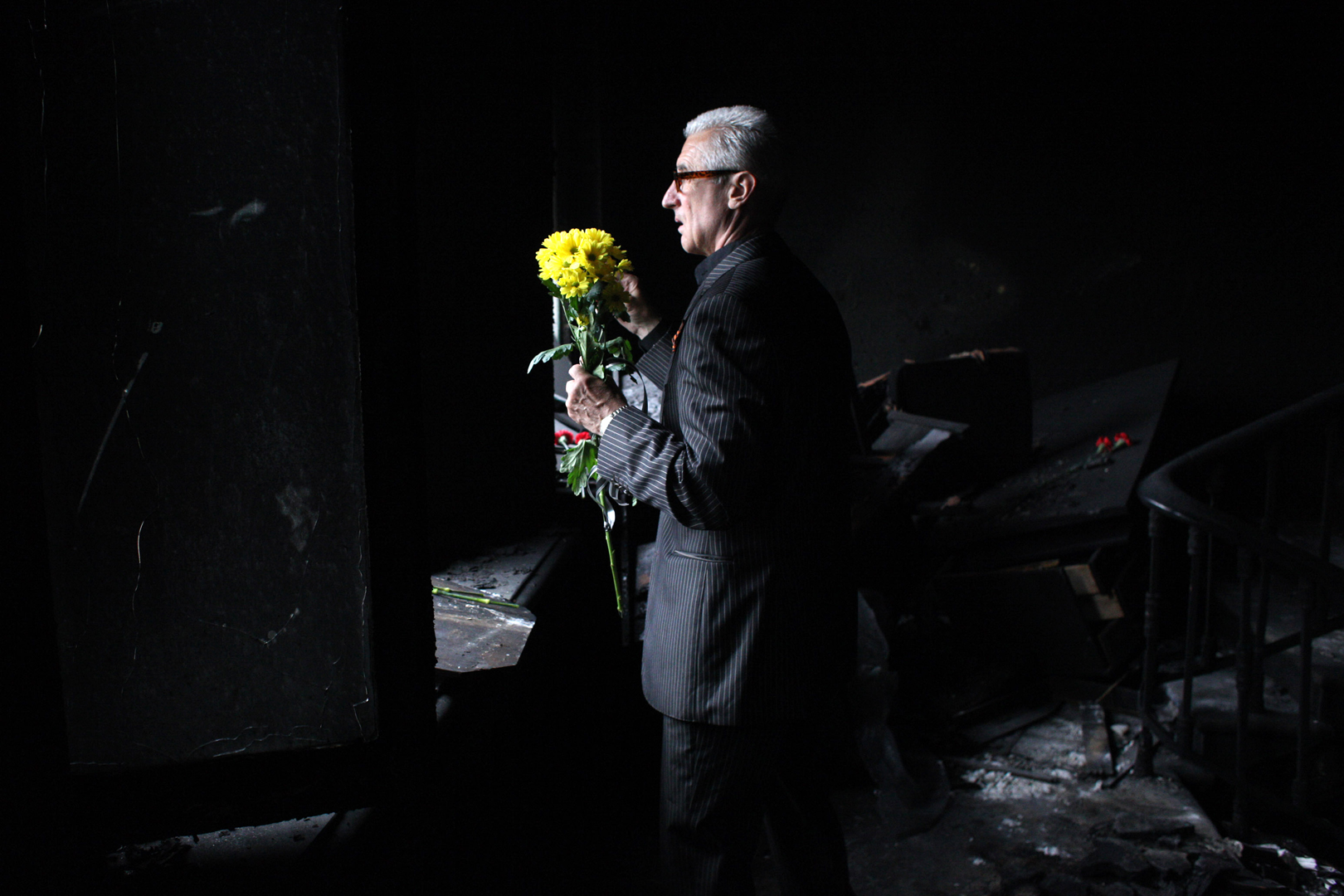
When we got there, the bodies had already been taken out. People came, brought flowers, lit candles, someone, as if in a stupor, wandered through the corridors. People were shocked by the tragedy that unfolded within these walls. There were relatives of the dead, many crying.
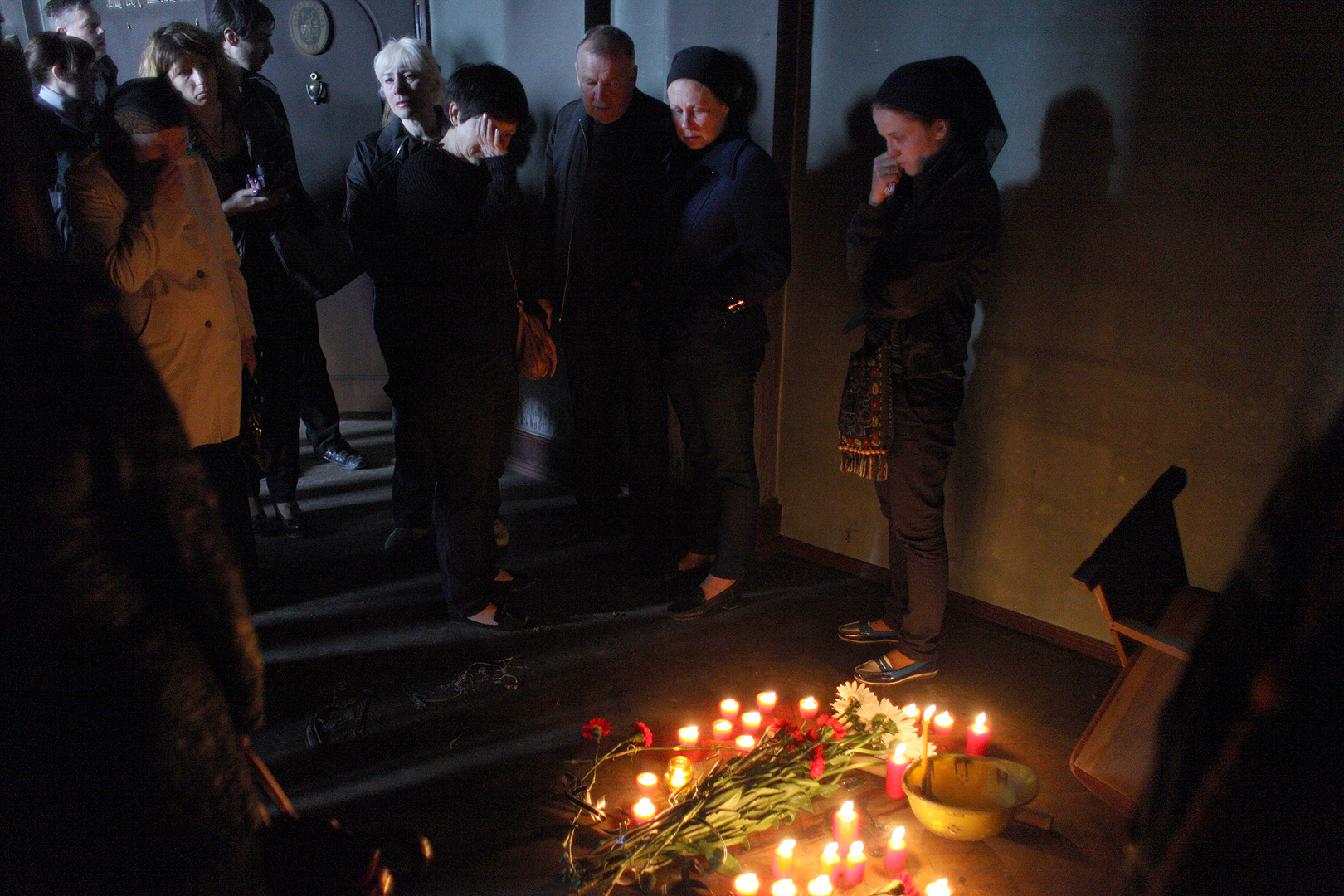
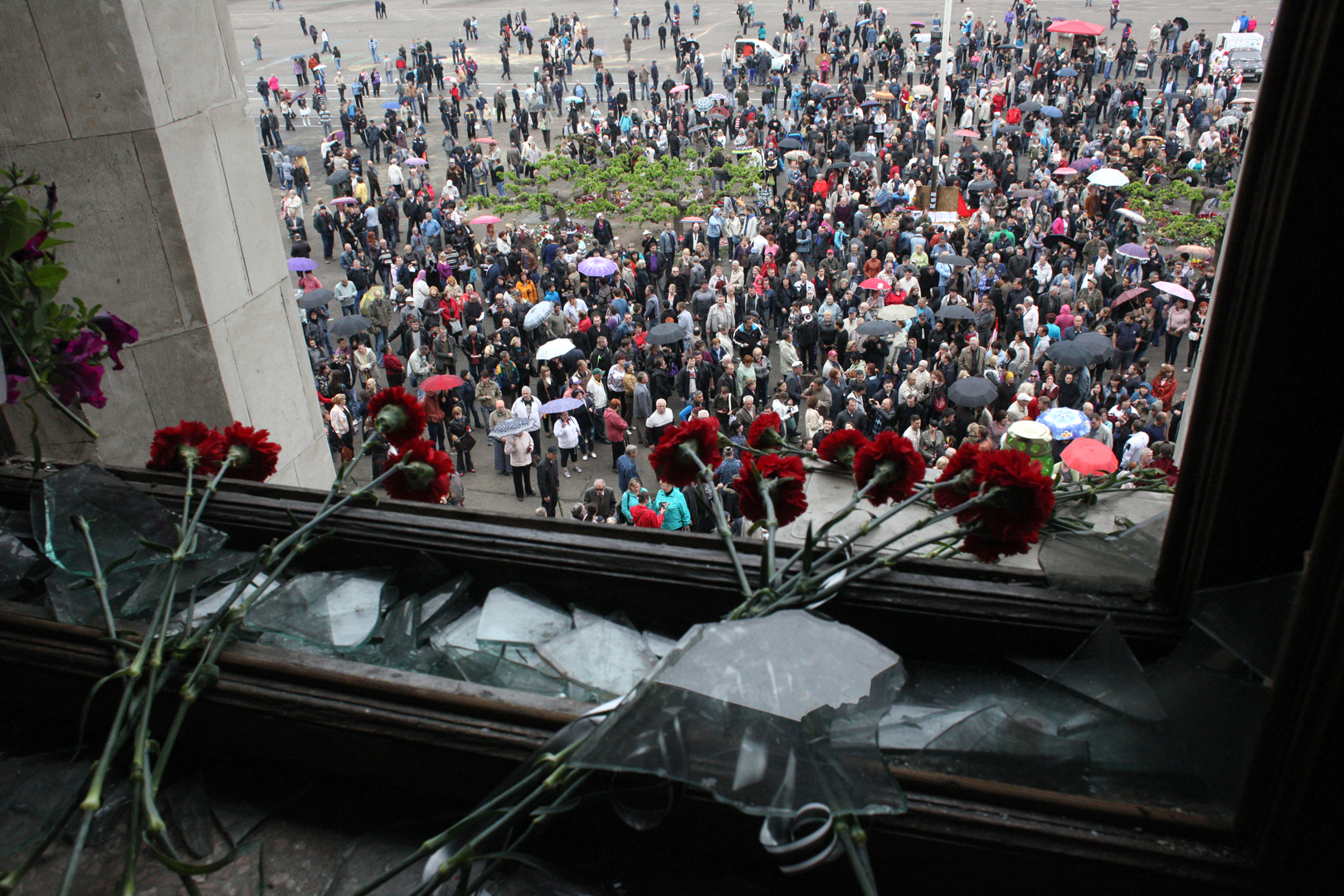
But the worst thing is that these people were just used. Their deaths became a tool for inciting hatred. It was humanly scary — because they were literally made a “sacred sacrifice.” Later, I spoke with Russian photographers and they told me that they talked with militants on the other side, they told them directly — many went to fight in Ukraine after Odessa. The events of May 2 became for them a trigger, a myth, a tool — and that said it all.
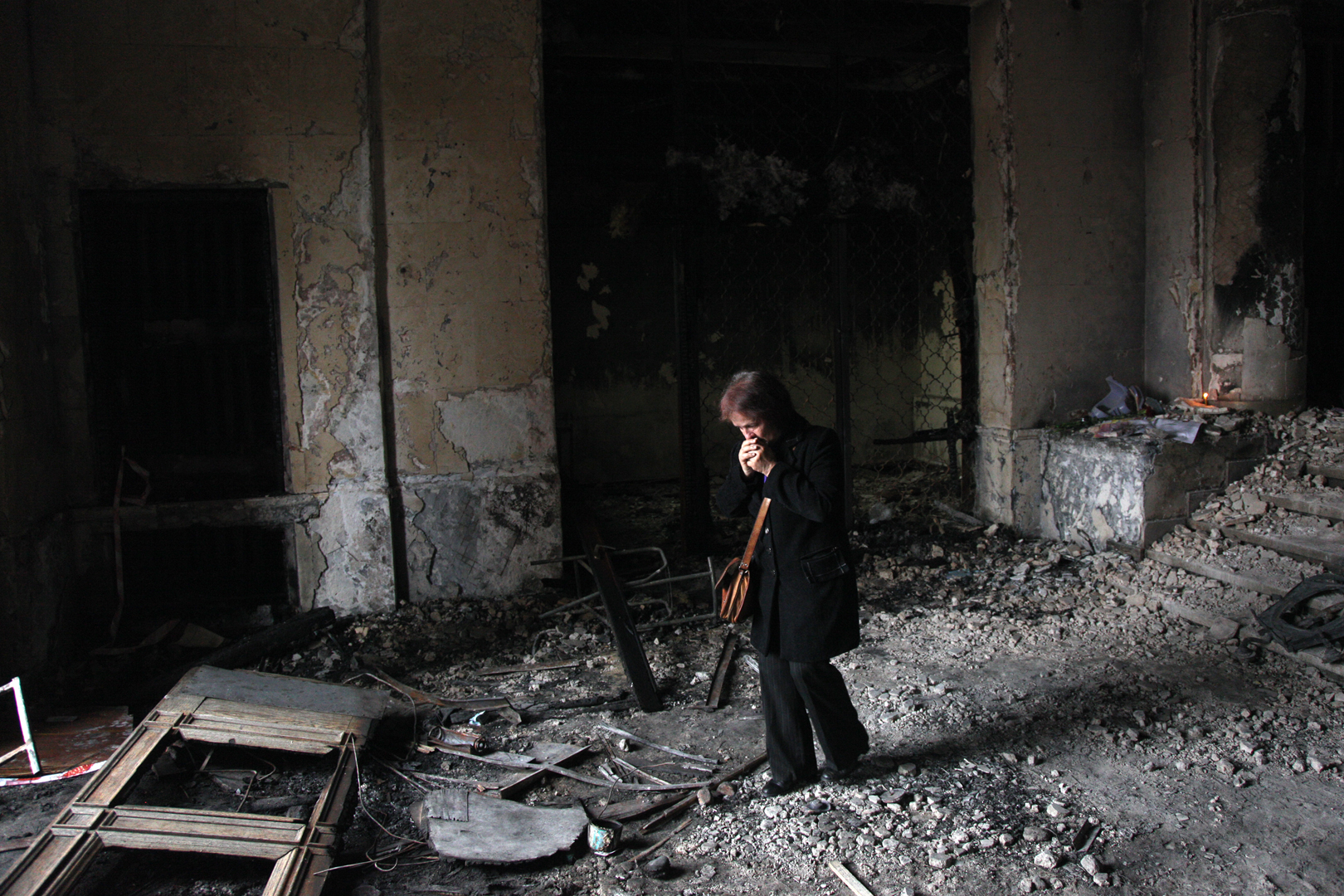
— Also in your archive there are photos from May 9, where Ukrainian paratroopers build firing positions on the outskirts of the city. So the Ukrainian army was preparing for something serious?
— That's right, it was May 9. The paratroopers really built fortifications — they poured sand into bags, built fire points, set up positions, prepared. Obviously, there was a threat of a repeat of events — even more serious riots. The events of May 2 have already taken place, and, as it seems to me, in Odessa they tried to launch the same mechanism as in Kharkiv, Donetsk, Luhansk. But in Odessa it did not work, I saw it very clearly.

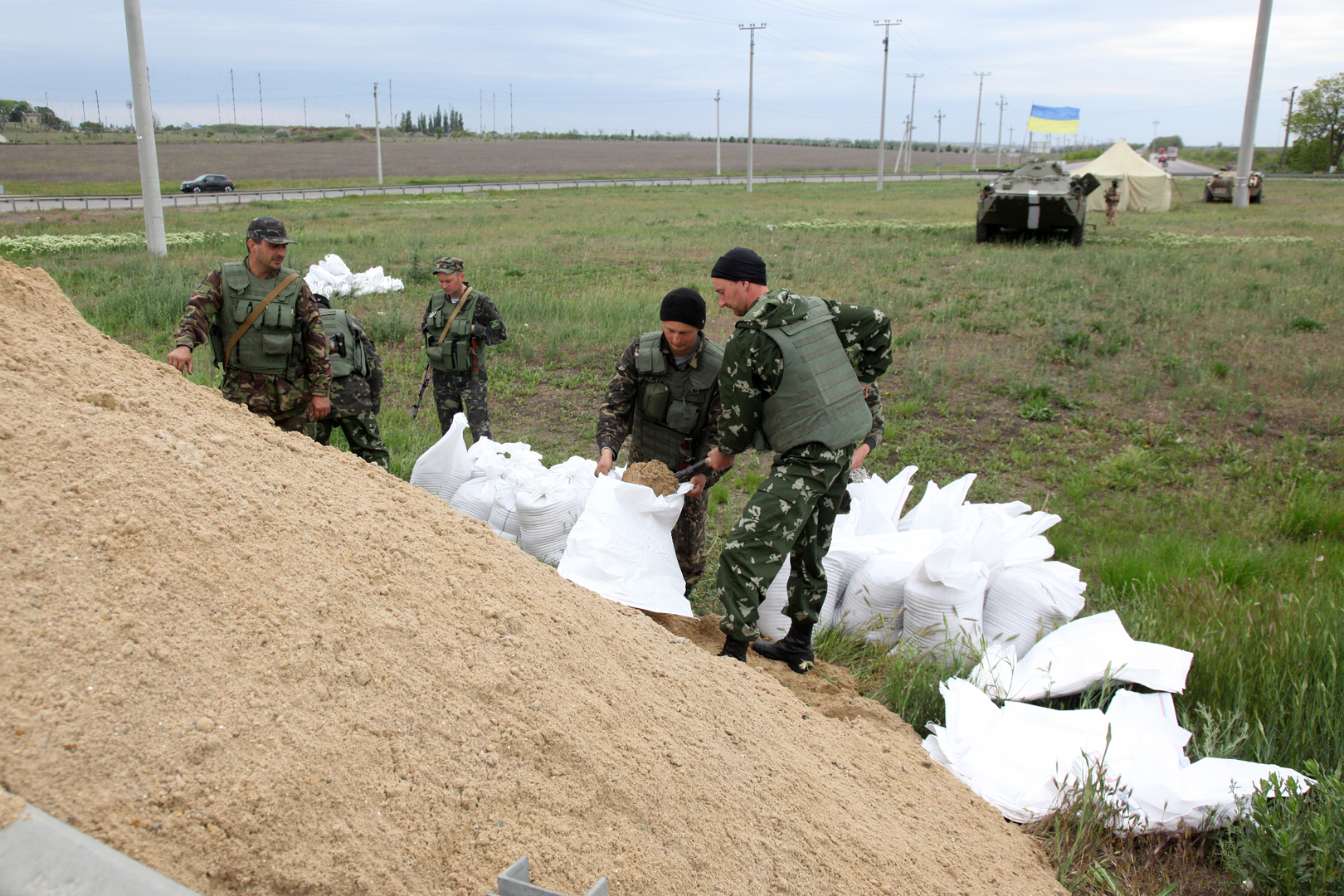
One day I'm walking around town and a boy of 15-16 years old approaches me, barefoot from the street. He says, “Uncle, are you a reporter?” - I answer, “Yes, I am a photographer.” - And he says to me, “And we will not let them here.” This is literal, in Russian. It was a sincere, streetwise stance. He was talking about those who had to come from Transnistria or from Russia. I realized then: this is Odessa, it will not allow them to do the same with it as with Donbas.
Then, on May 2, 2014, during mass riots in Odessa, 48 people were killed as a result of clashes between Euromaidan participants and anti-Maidan movement participants and a fire in the House of Trade Unions. There was one important point: those who were the subject — pro-Russian provocateurs, jumped on the roof and even fired automatic weapons at people in the square — there are many videos about it. And those who were used, ordinary people, remained at the bottom and died. And this also says a lot.
— If you look back on the events of 2014 from the height of 2025 — having experienced a full-scale invasion — how do you feel when you remember those early months?
— Now it all looks completely different. They tried to digest us gradually. First — uncertainty with Donbas, then — war, which lasted almost eight years. Yes, it was localized in one or two regions, but it was a real war. And when it became clear that it was impossible to agree with us politically, Putin simply decided to attack.
The war until 2022 was not abstract, it was night artillery shelling, mortar fire, snipers. During the day, it was impossible to raise your head above the brushcutter on the front line. And at night there was a hunt with thermal imaging sights. In 2014—2015 there were major exacerbations — like Debaltseve or Donetsk airport, fighting for Shyrokyne. Then the front stabilized a little, but the fighting continued constantly. I understand: this is not the same as it is now — missiles on high-rise buildings, air bombs, massive strikes, mass use of drones... But the crossfire, trench warfare was constant, and I went there every month for almost all seven years.
In 2014-2015, the entire world press worked in Donbas, and then everything disappeared from the radar. The war became an “internal Ukrainian problem” that the world gradually ignored, and it was painful to see. But already at the end of 2021, it was obvious to all foreign journalists: there will be a new war. And many of them came to Ukraine even before it began.
I could never have imagined that I would be working in a war in my country. We had Euros, then visa-free and we went abroad, we lived, in a prosperous country. And in the Kremlin even then there were ready-made scenarios and just waiting for implementation. And now we are living in the war they planned back then.
Anatolii Stepanov— Ukrainian photographer, born and raised in Kyiv, graduated as an engineer. He graduated from the Viktor Marushchenko School of Photography in 2004 and has since worked as a professional photojournalist in a number of Ukrainian media and international agencies. He has had numerous publications in magazines National Geographic, Spiegel, Stern, Time and many other international publications, participated in international photo exhibitions.
In November 2017, he gave a presentation on his work at the front during the presentation of the RAW photobook at the Ukrainian Museum in New York. His project “Independents”, dedicated to Ukrainian youth fighting for their country, is exhibited in an online exhibition at the Ukrainian National Museum in Chicago. Anatoly Stepanov has been covering Russian aggression against Ukraine since the first days of 2014 and throughout these years in cooperation with France Press. Photographer's social networks: Instagram, Facebook.
Contributors:
Researcher of the topic, author of the text: Vira Labych
Picture editor: Olga Kovalyova
Literary Editor: Julia Futei
Site Manager: Vladislav Kukhar

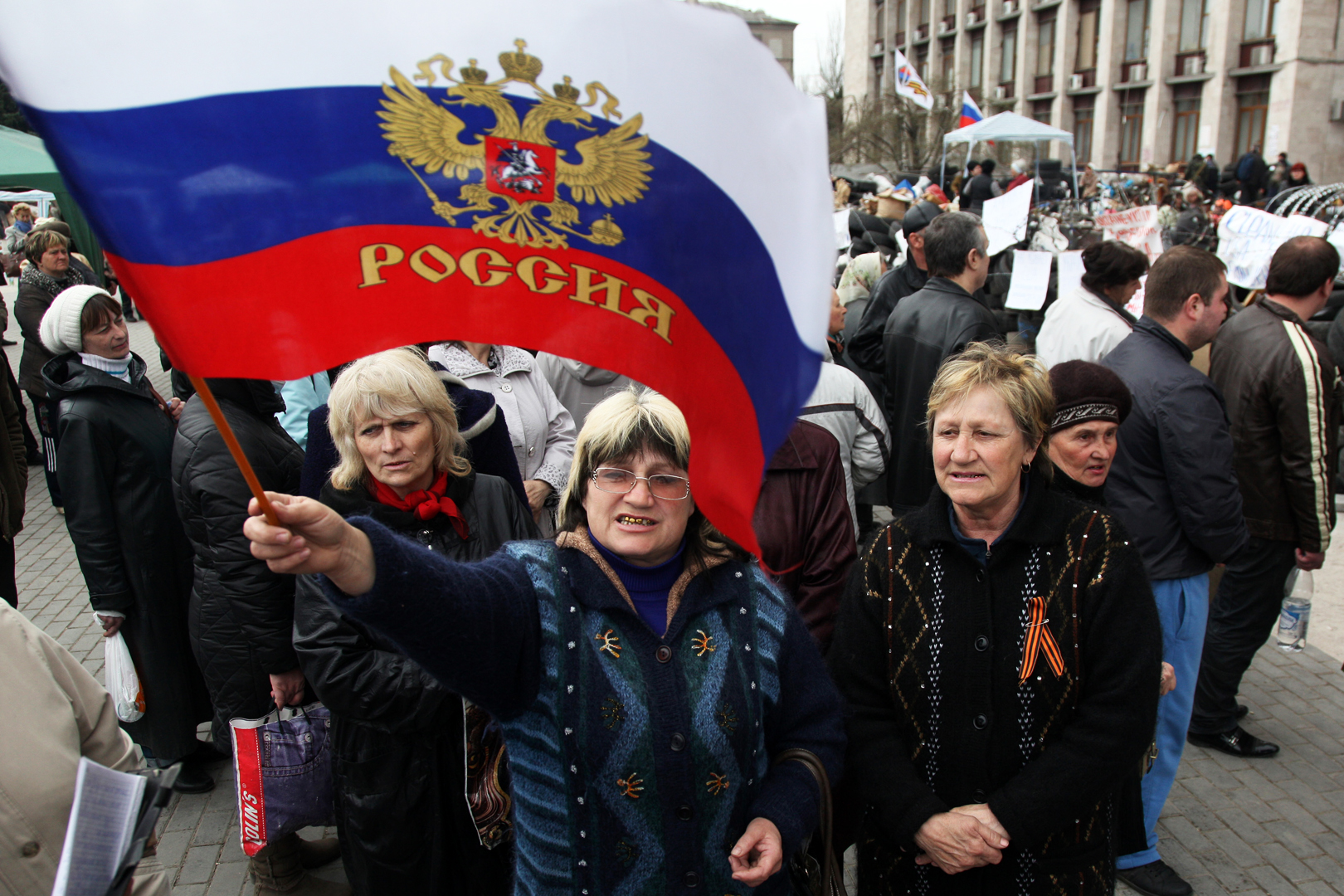
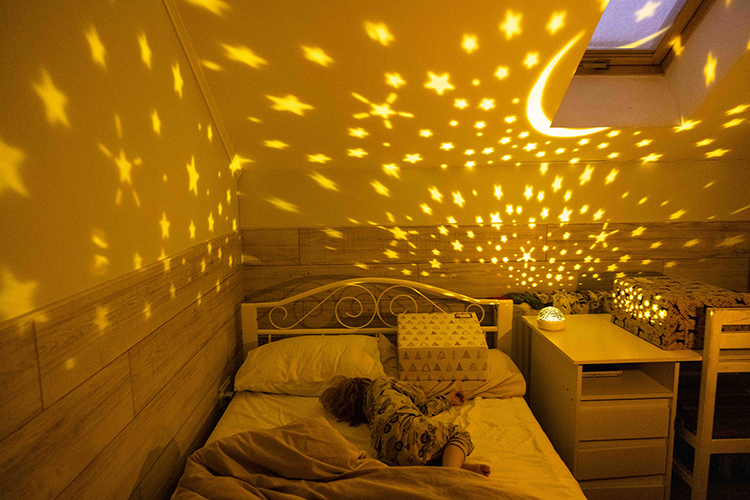
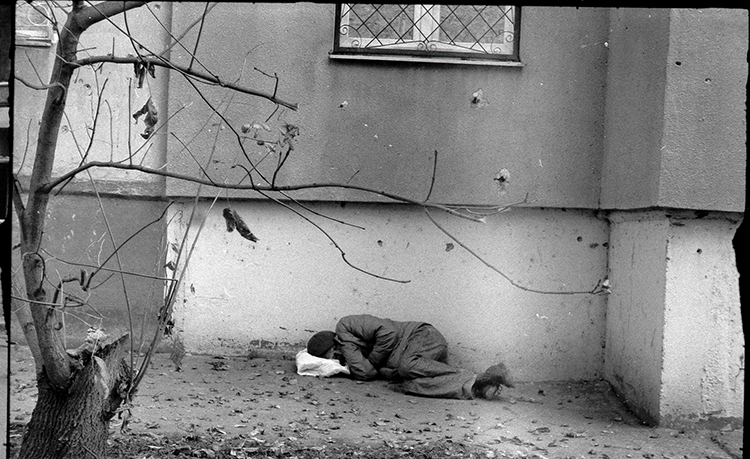
%20(750%20x%20360%20%D0%BF%D1%96%D0%BA%D1%81.)%20(3).png)

















